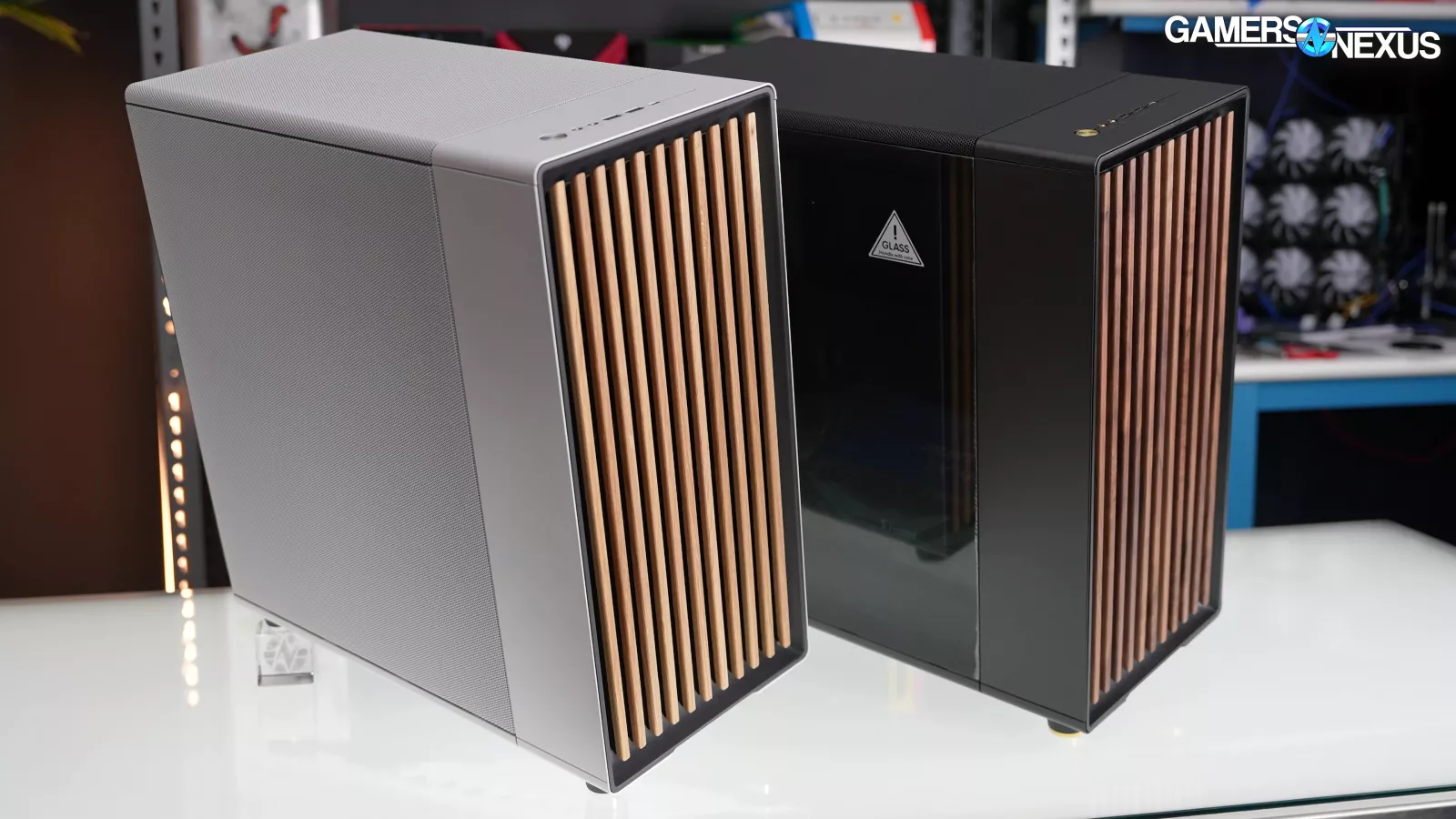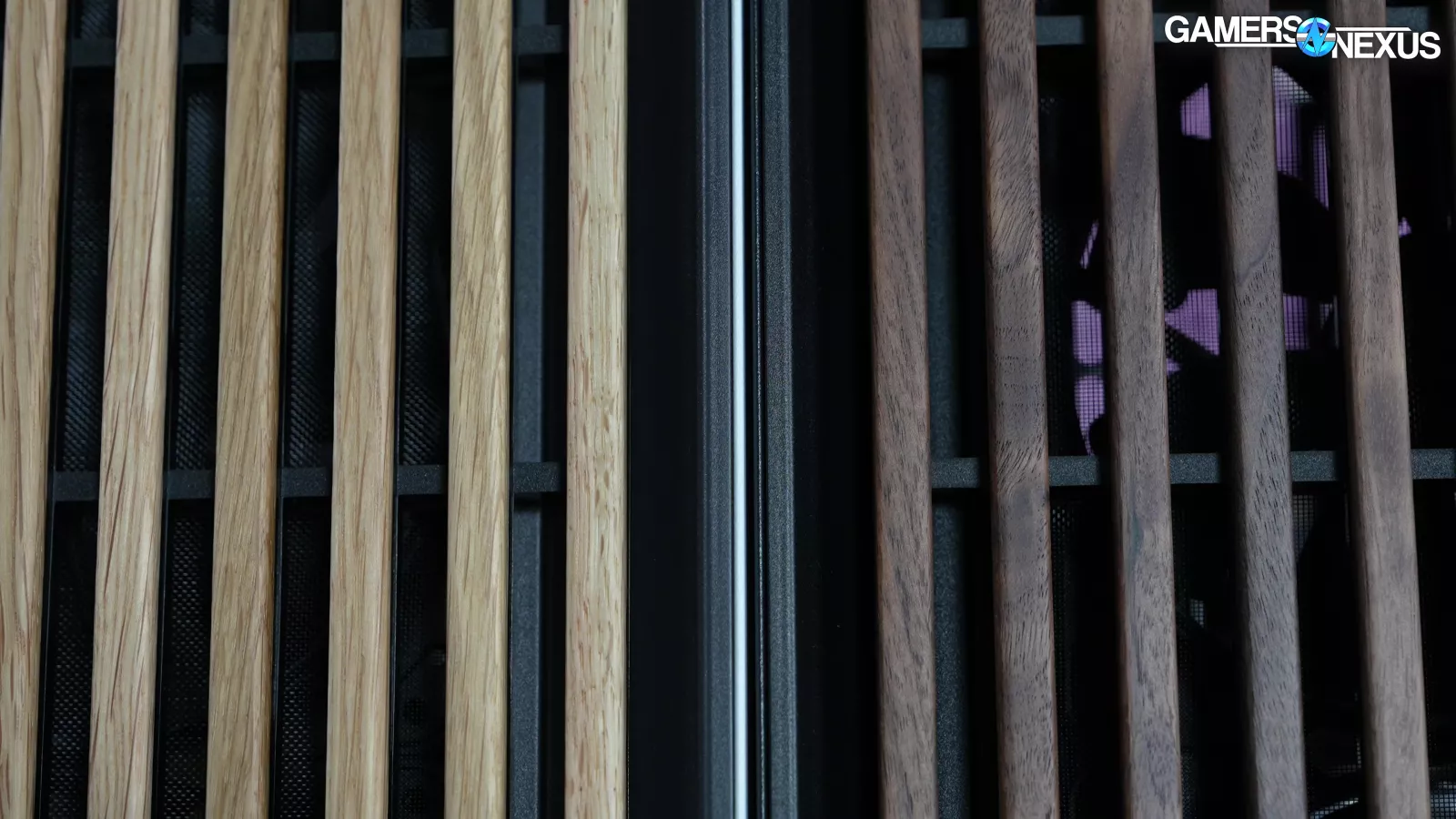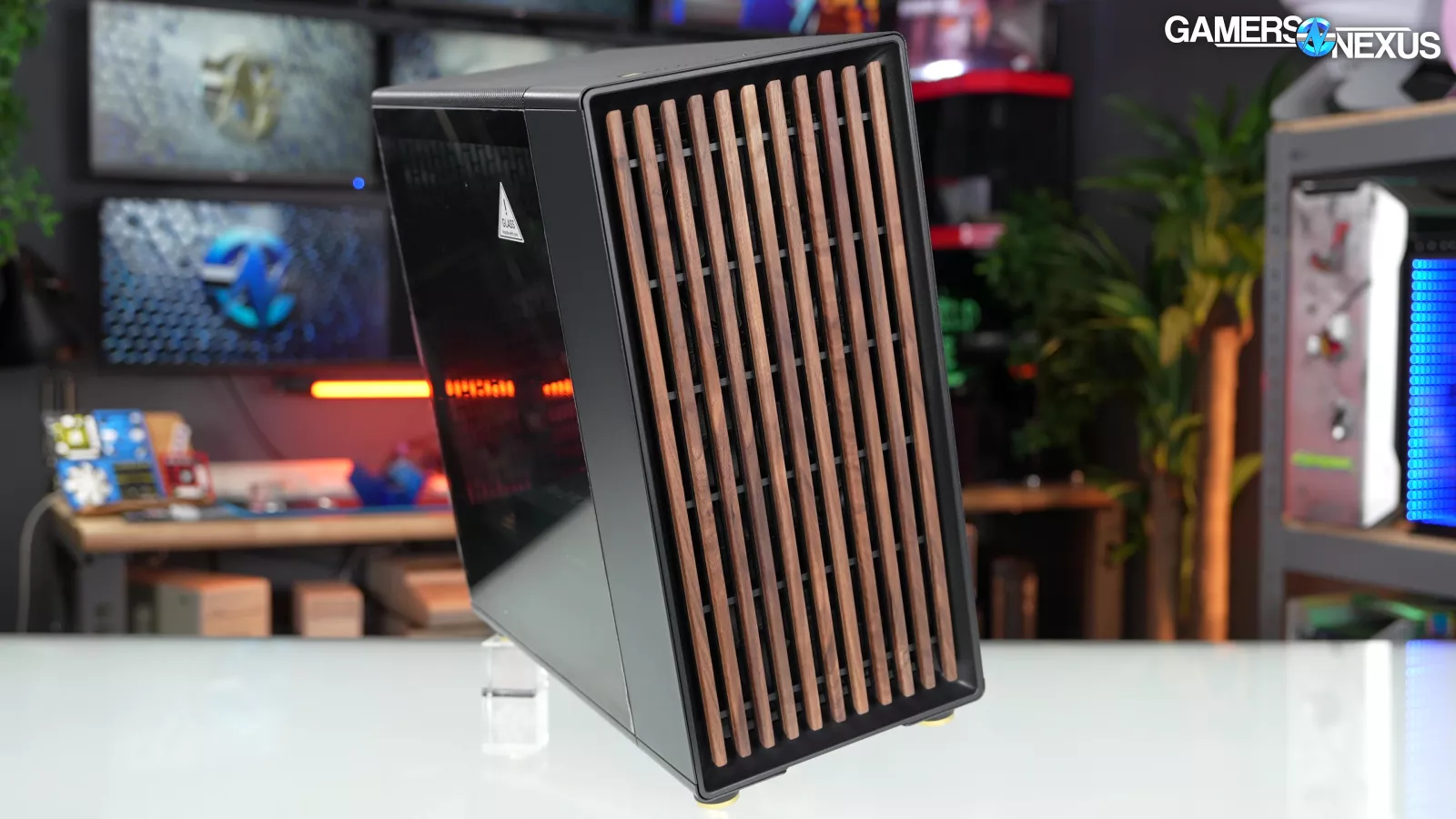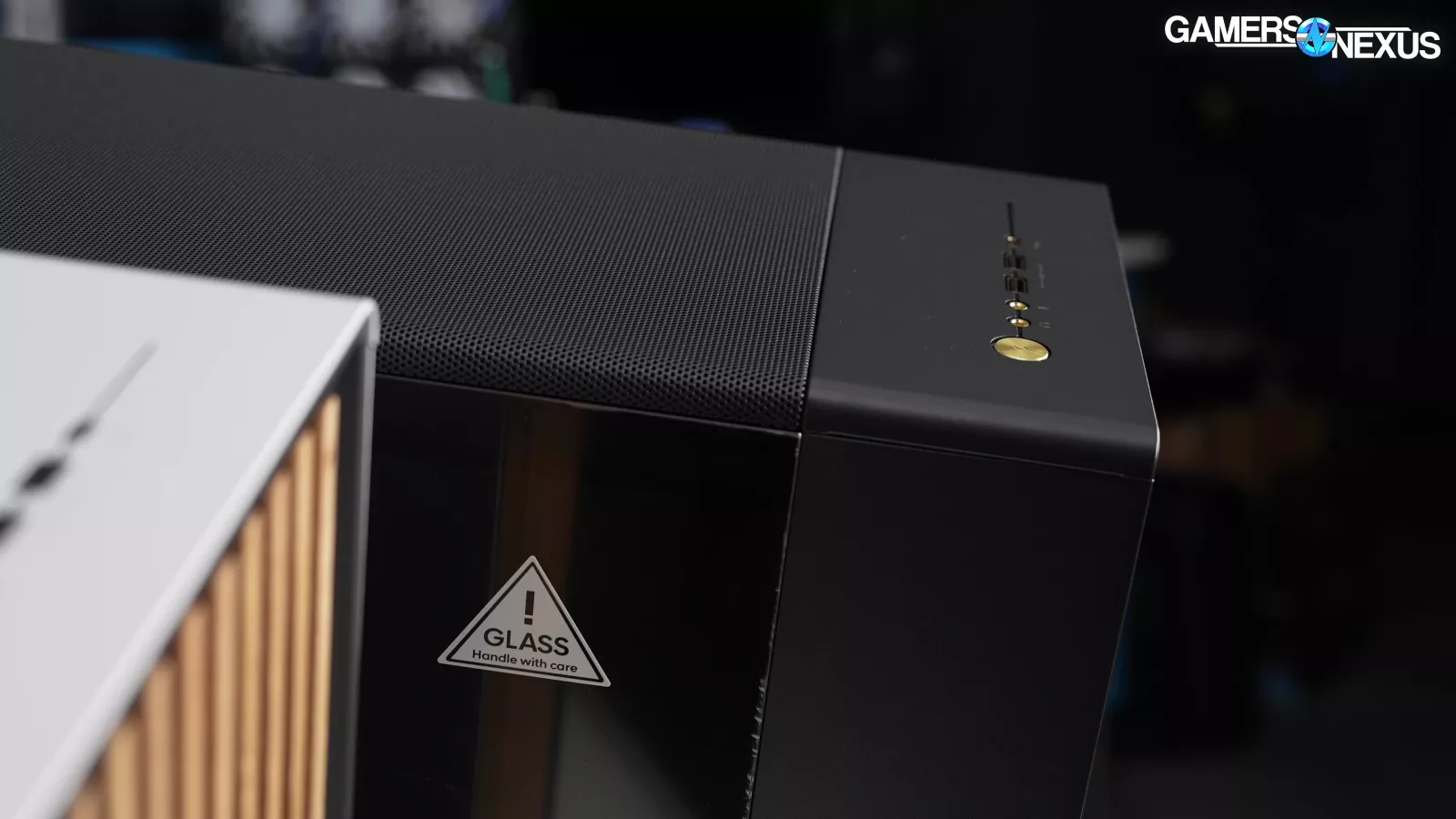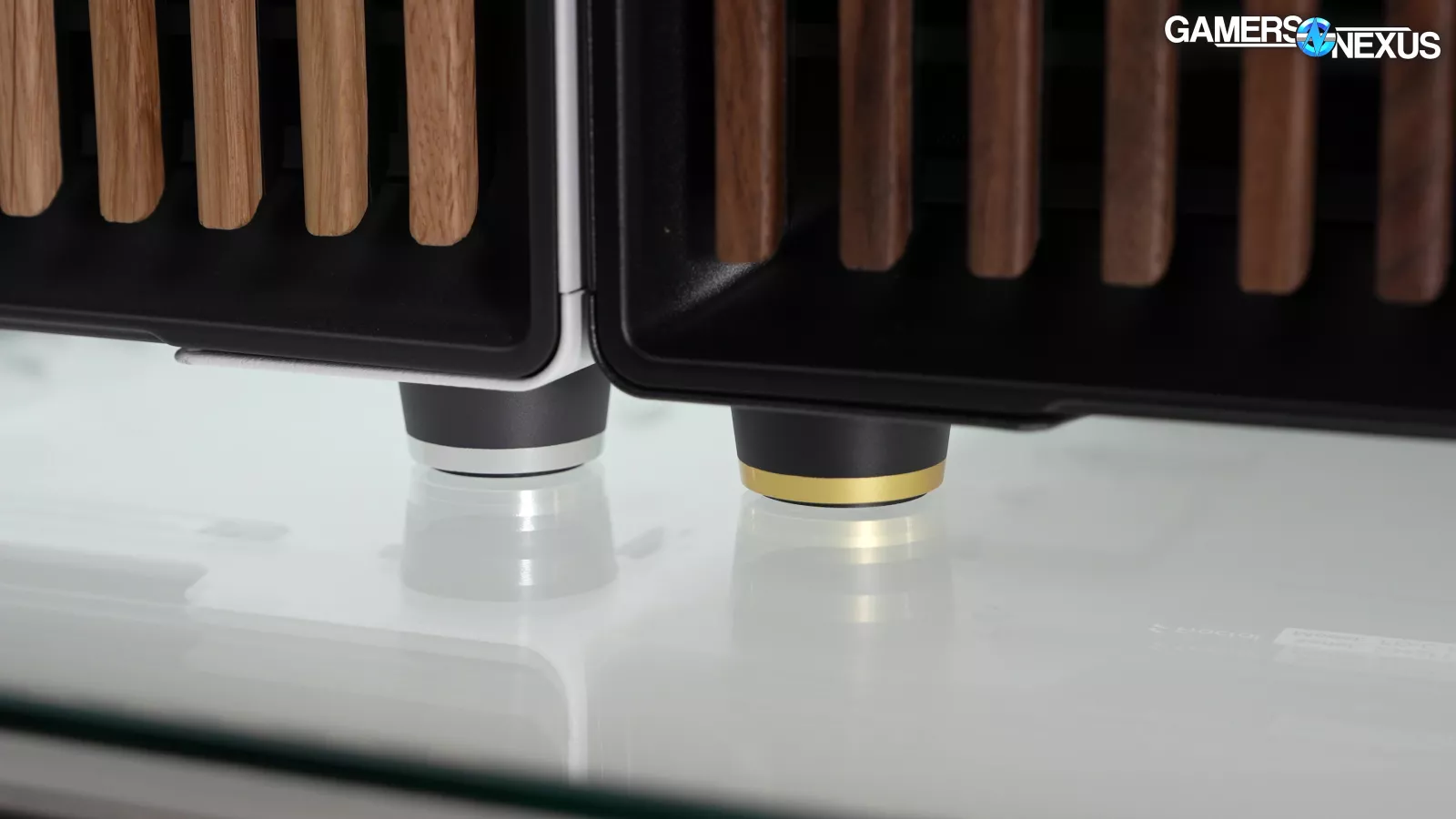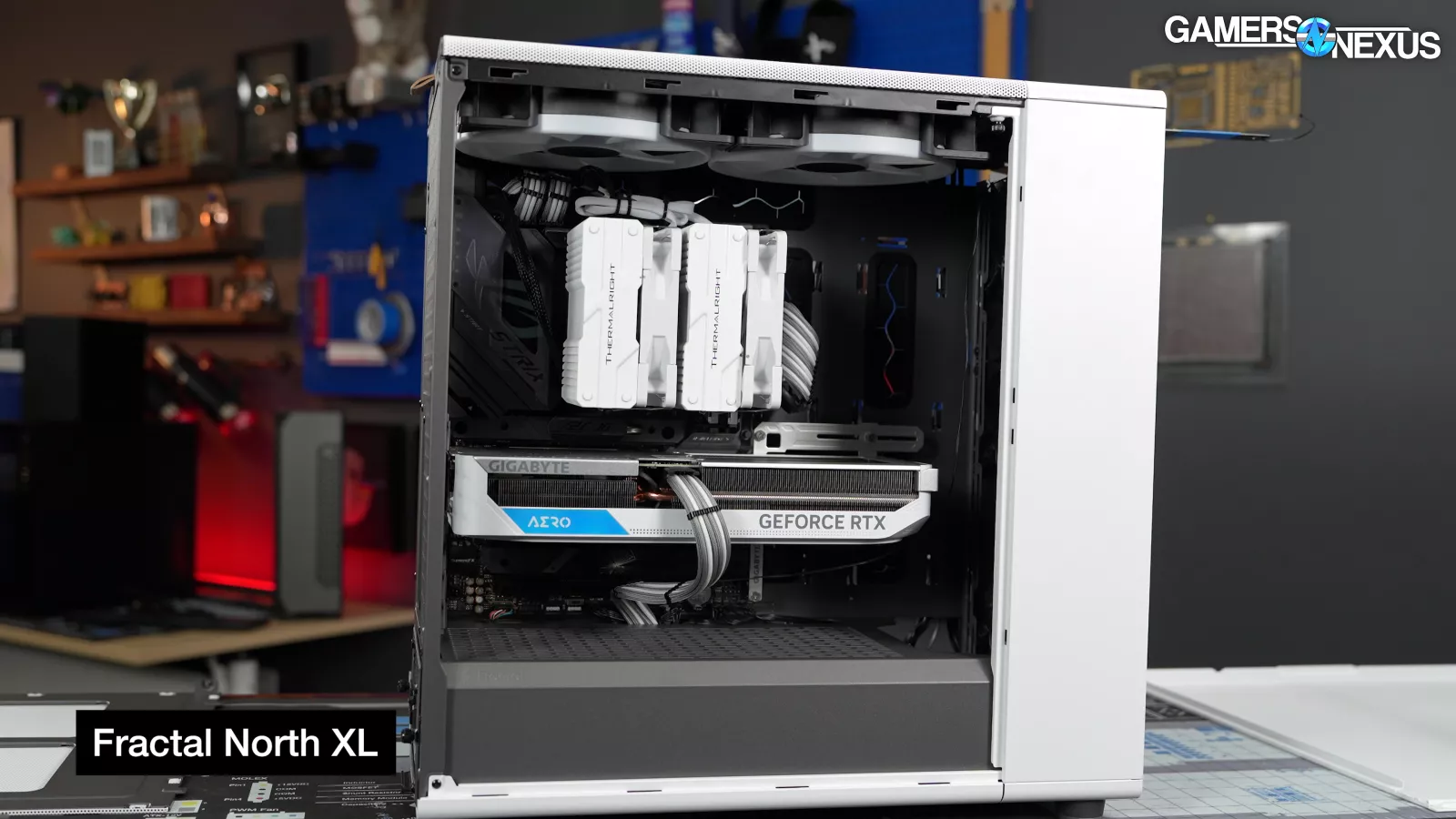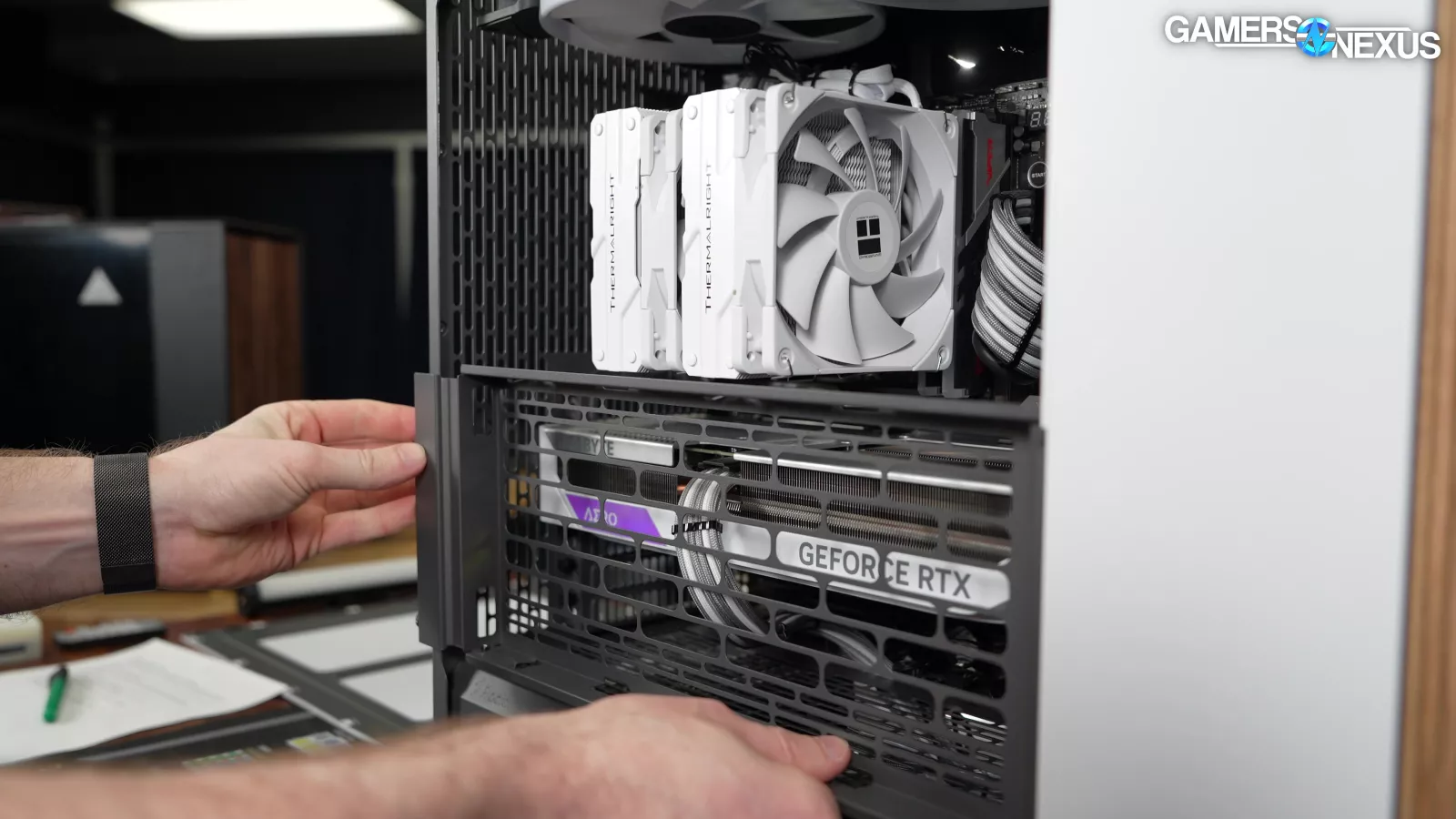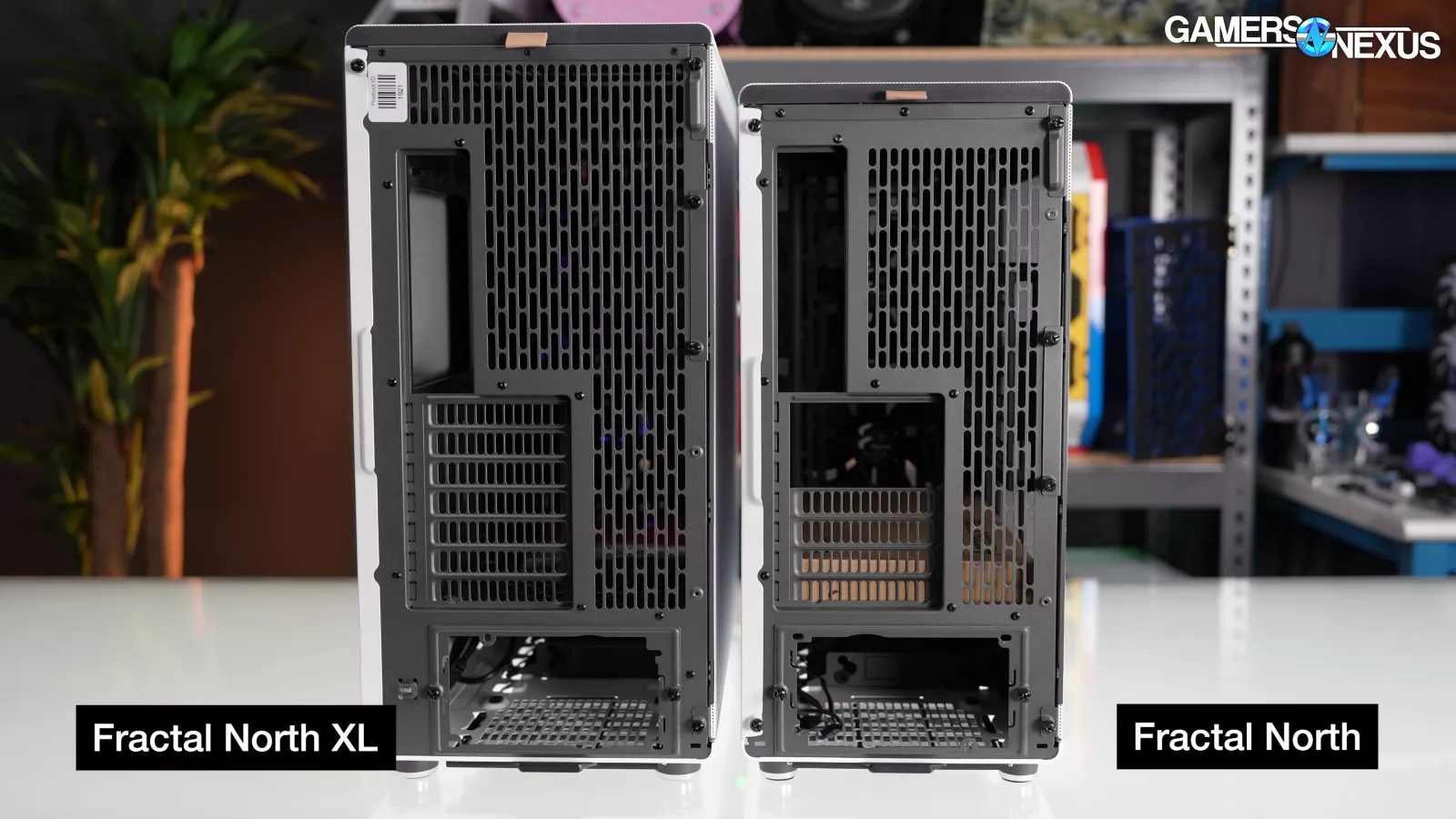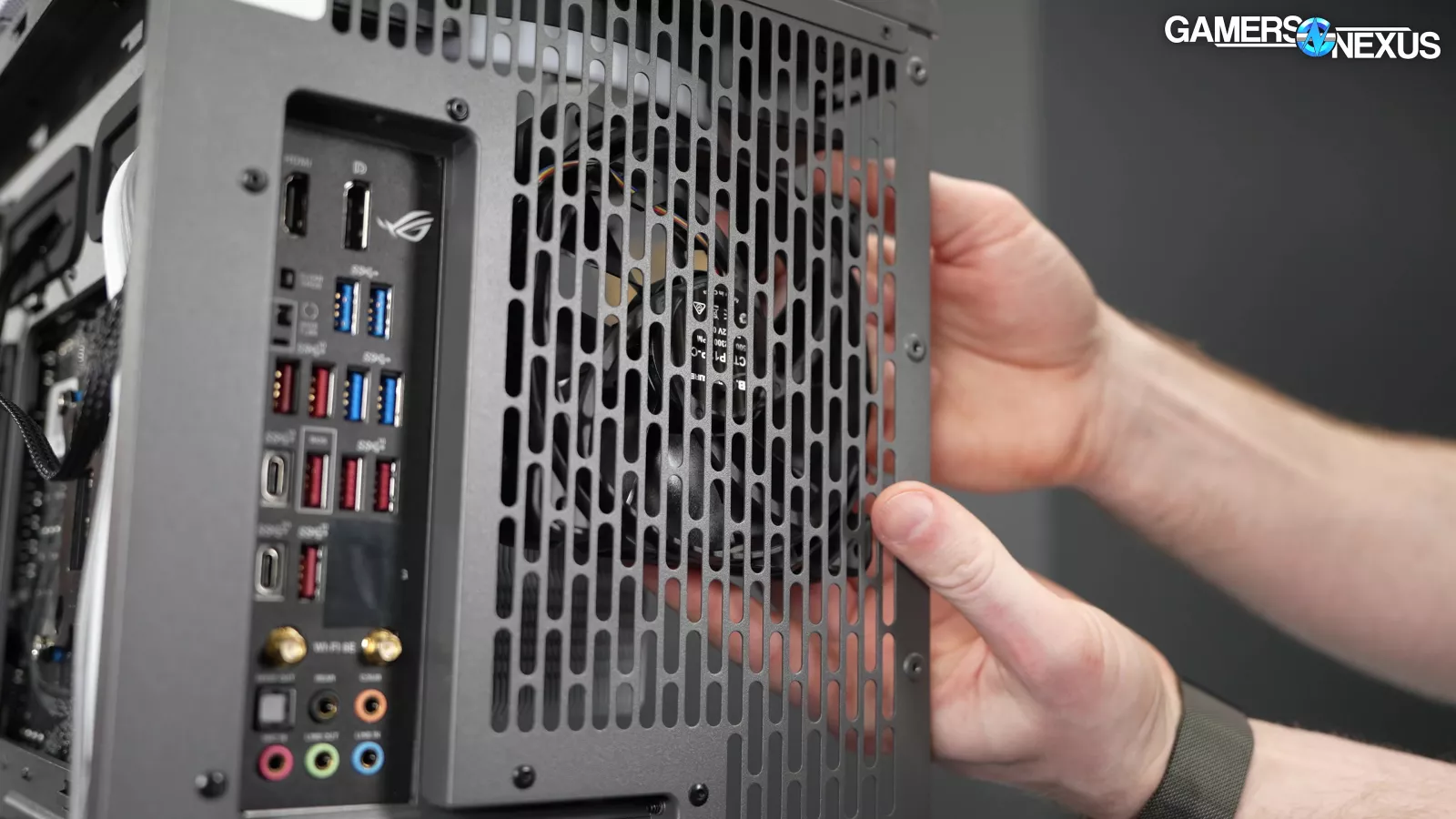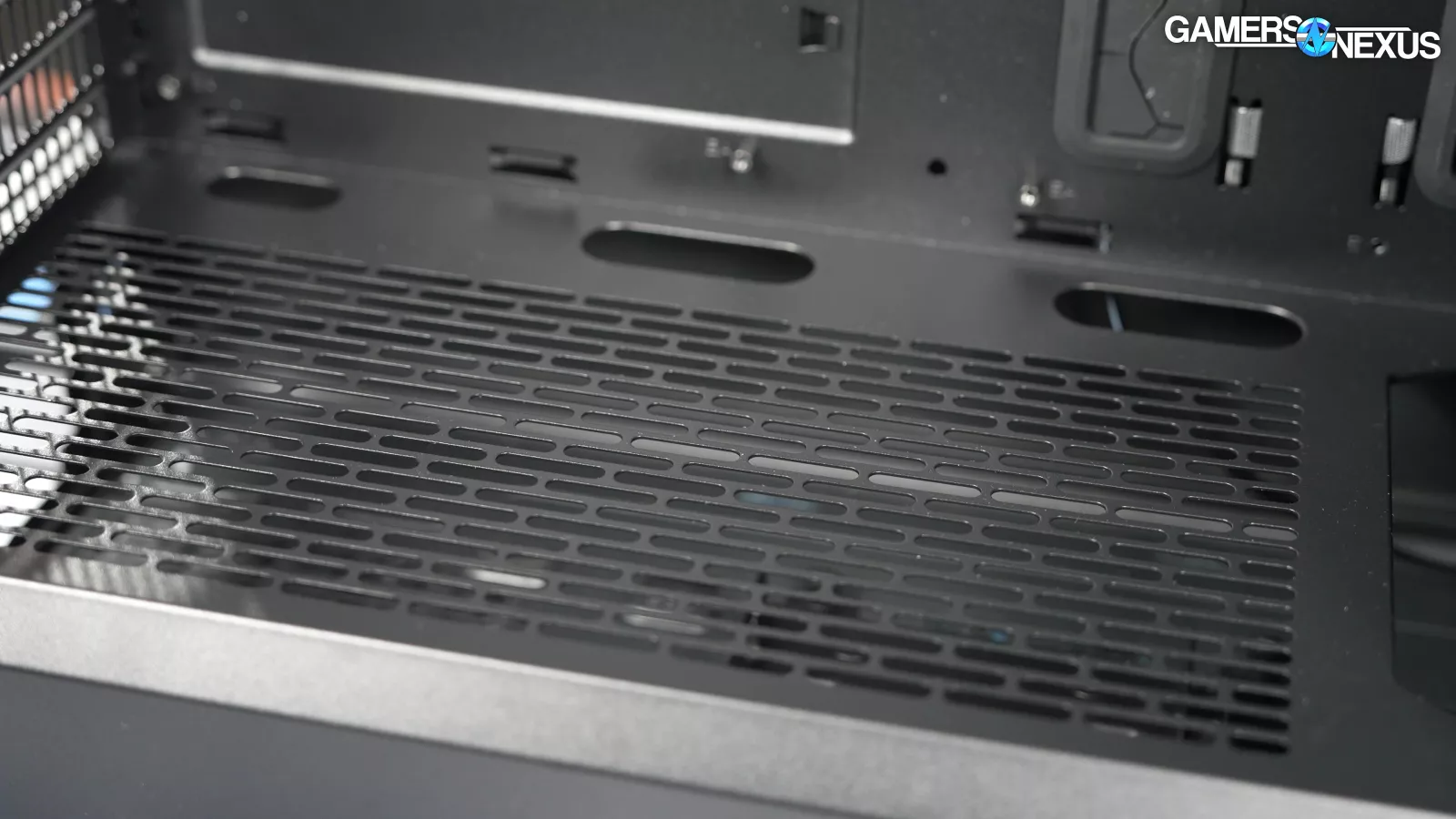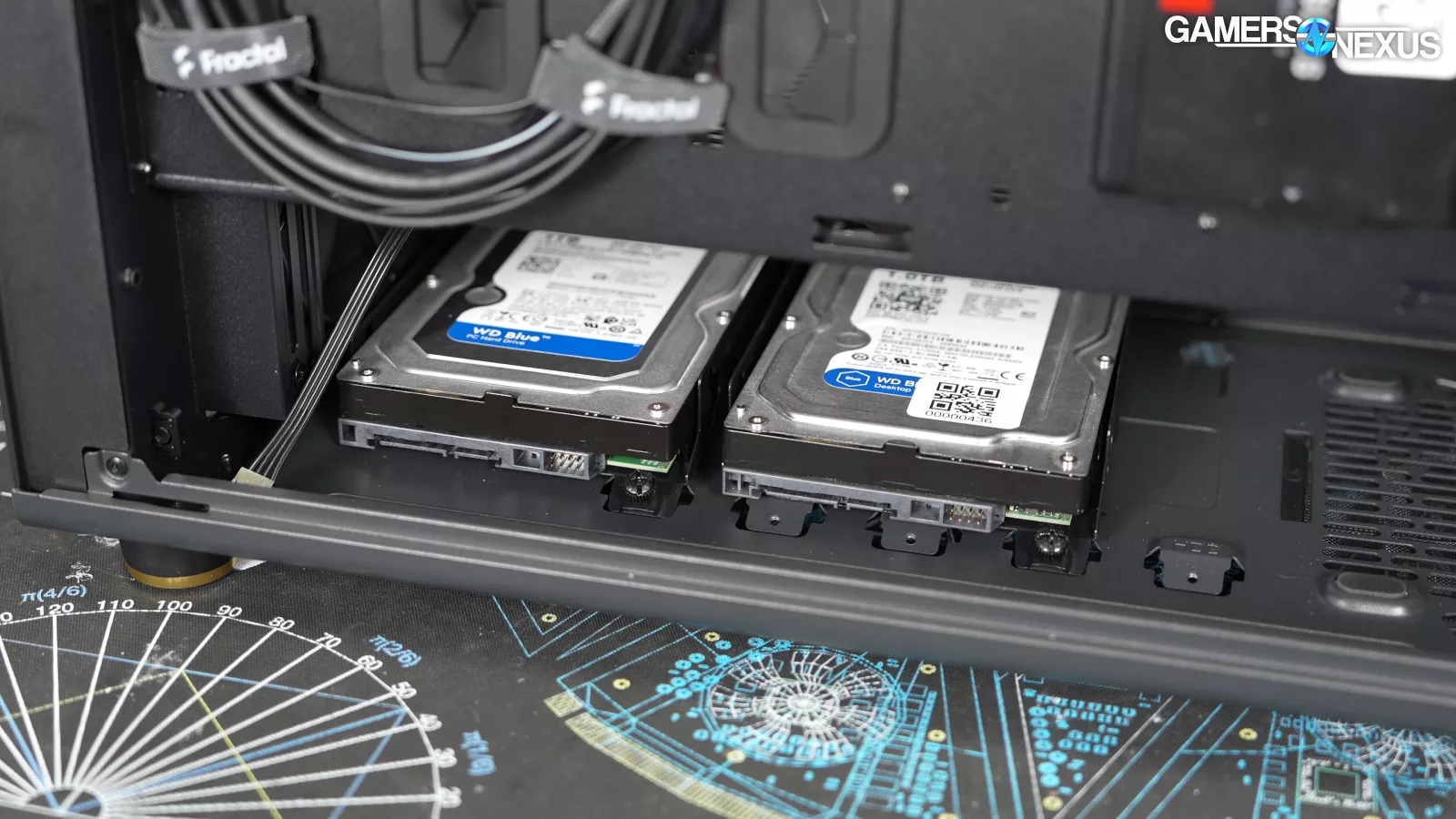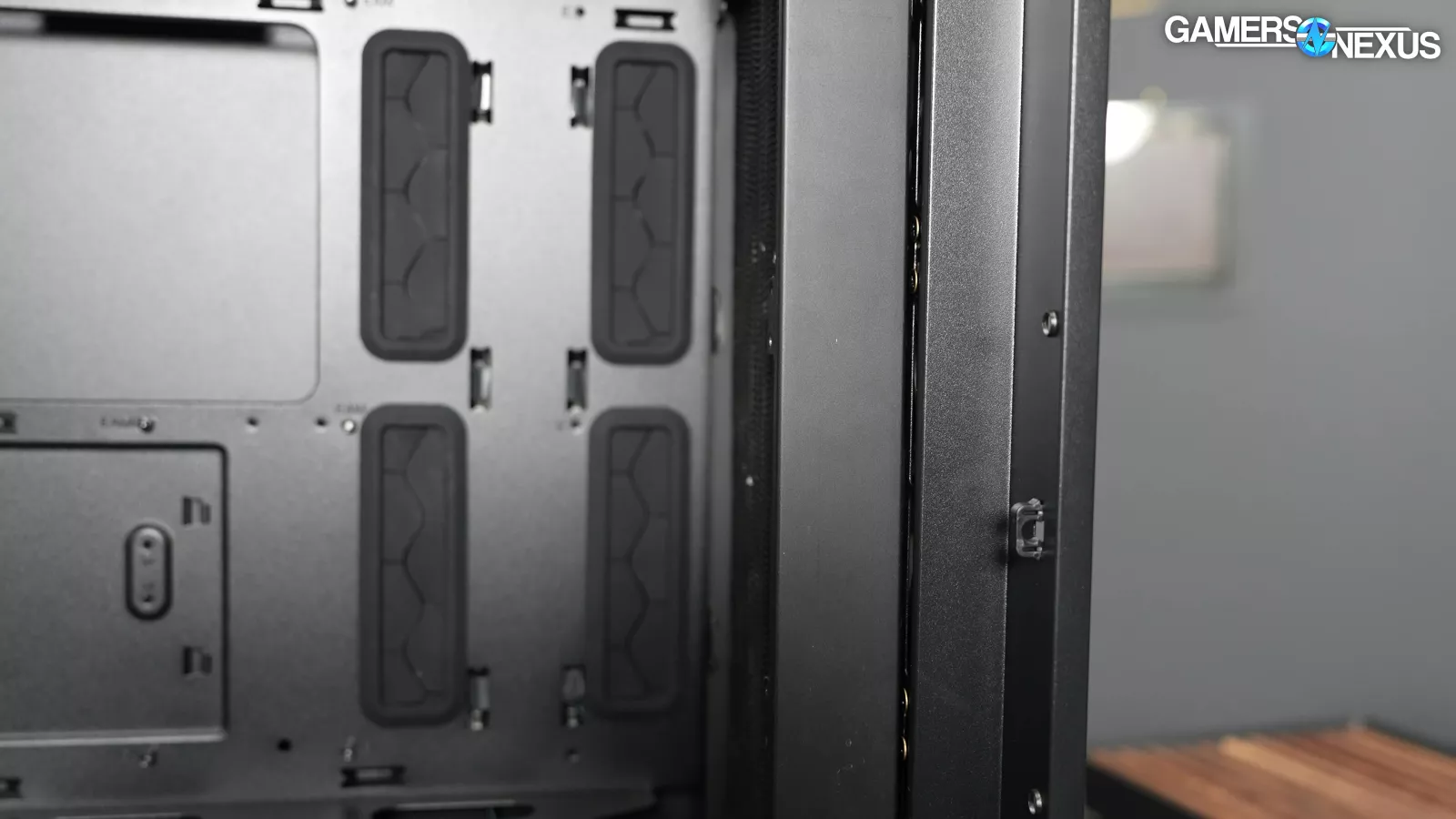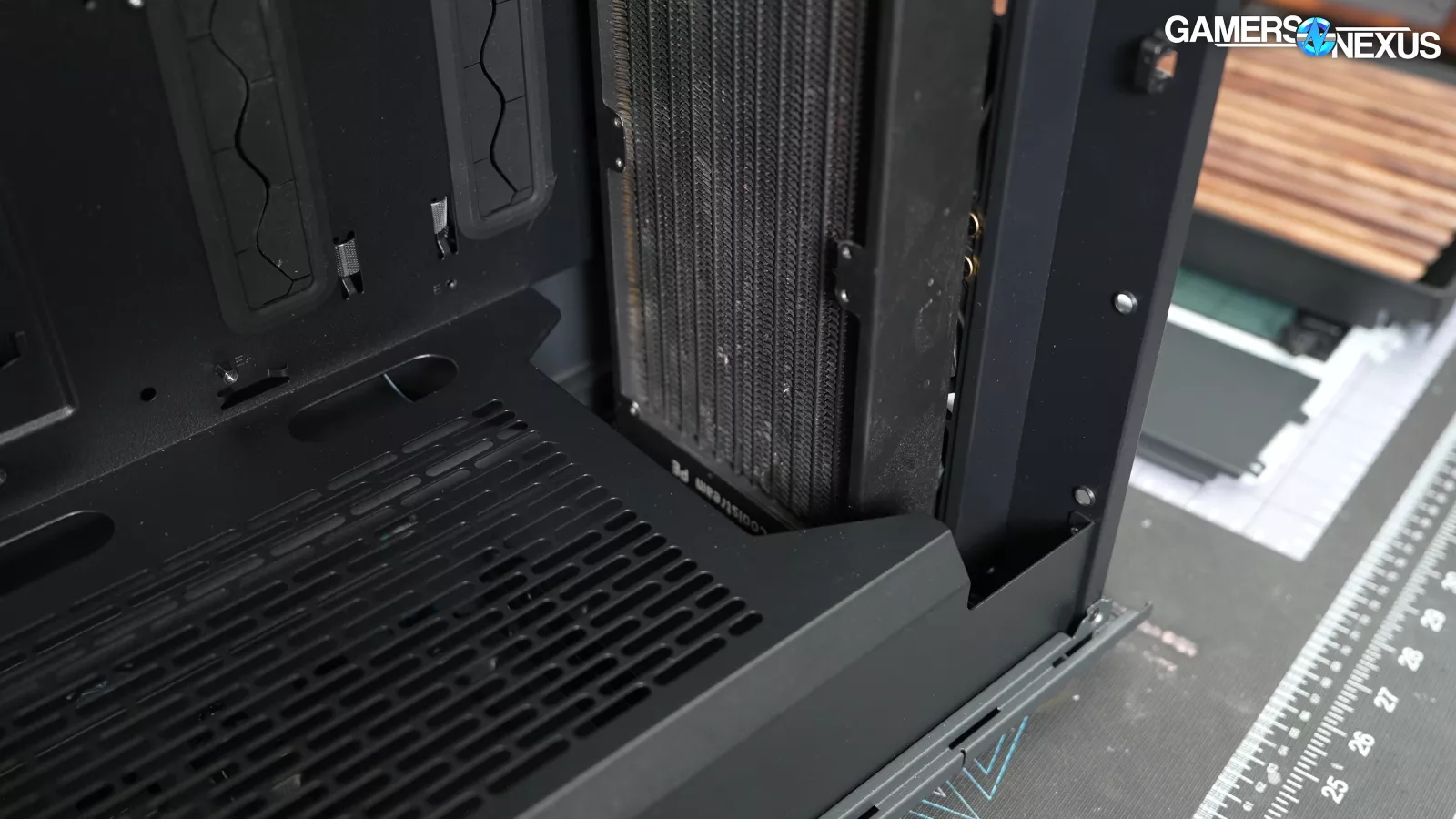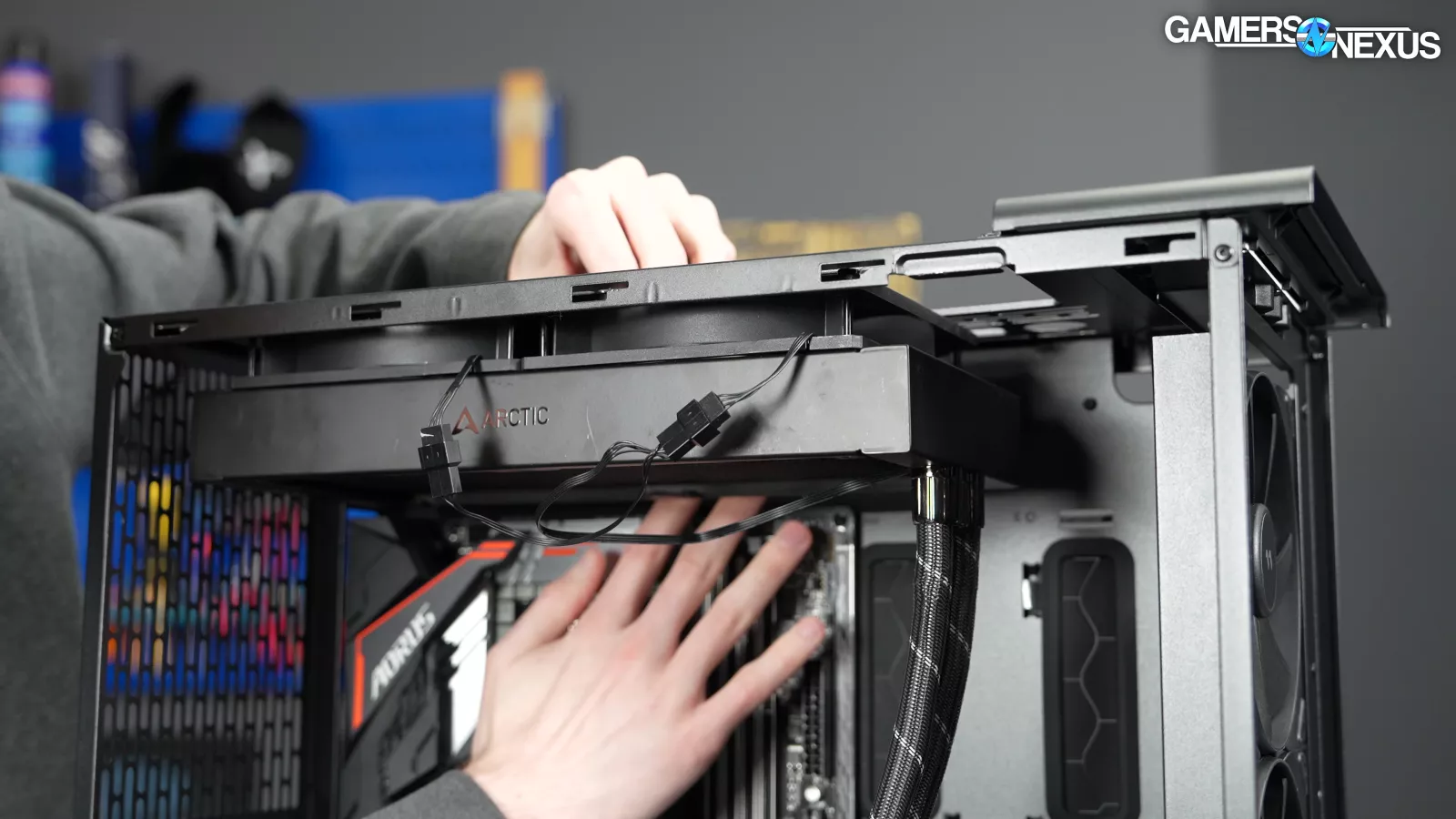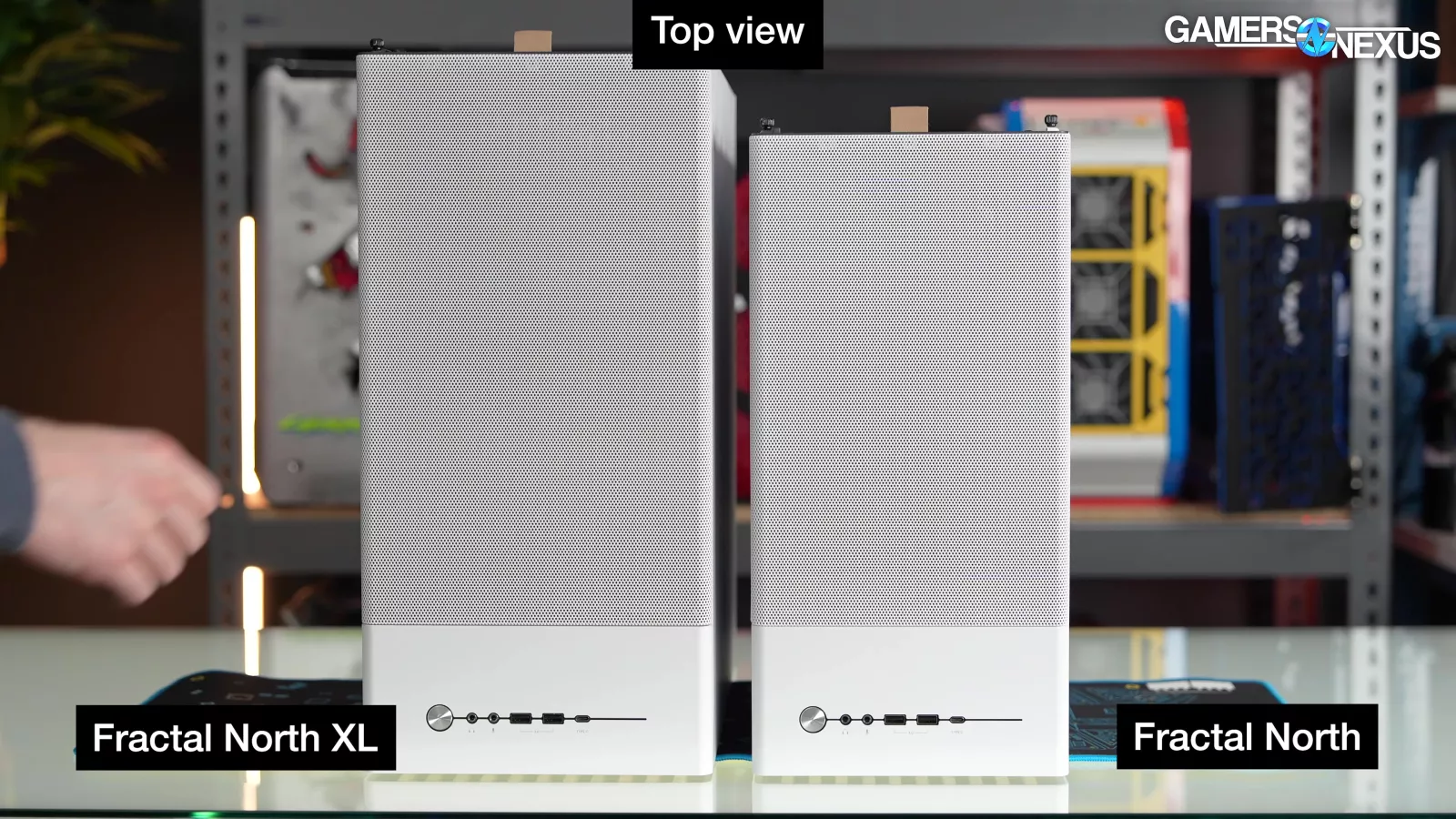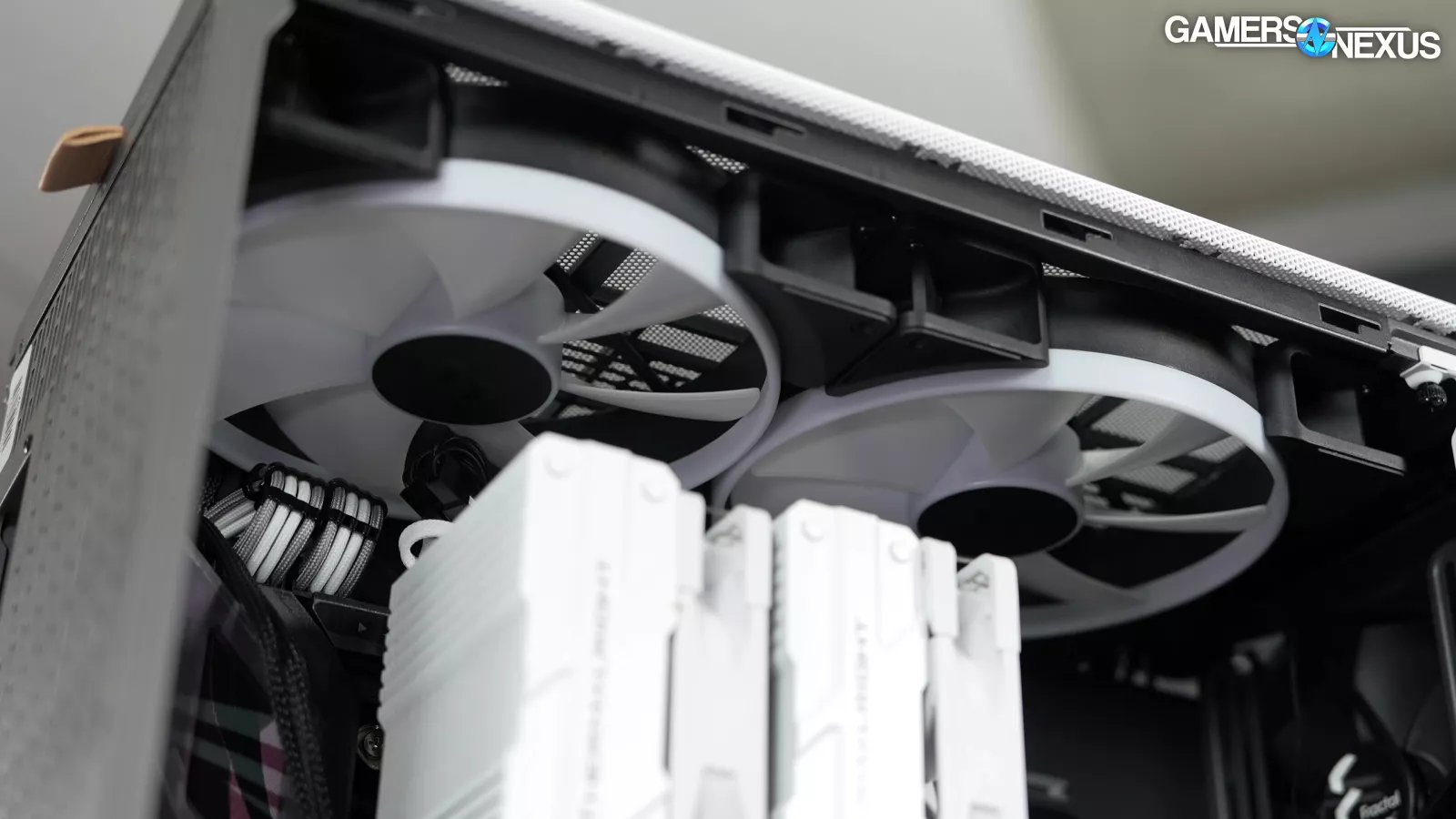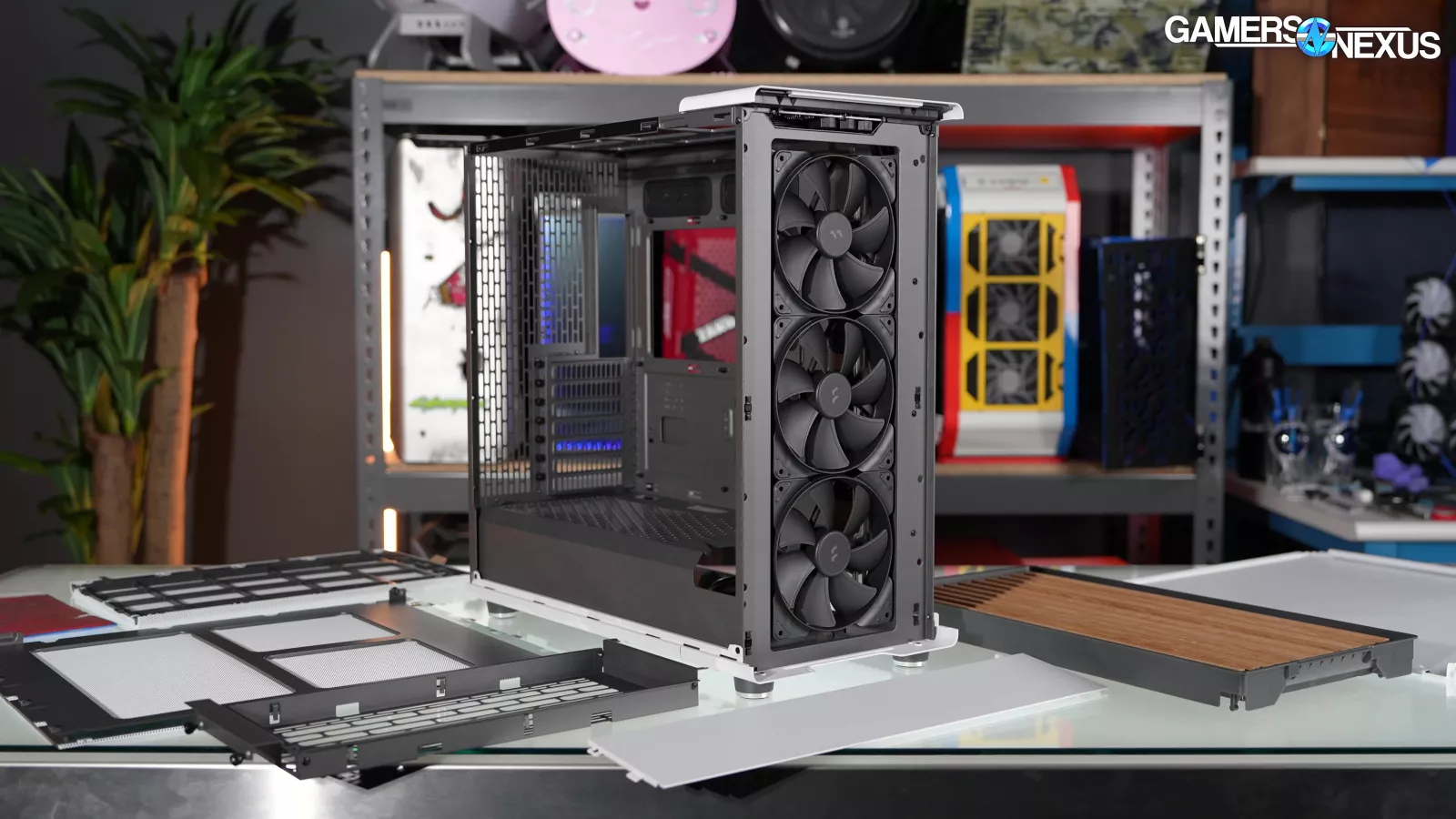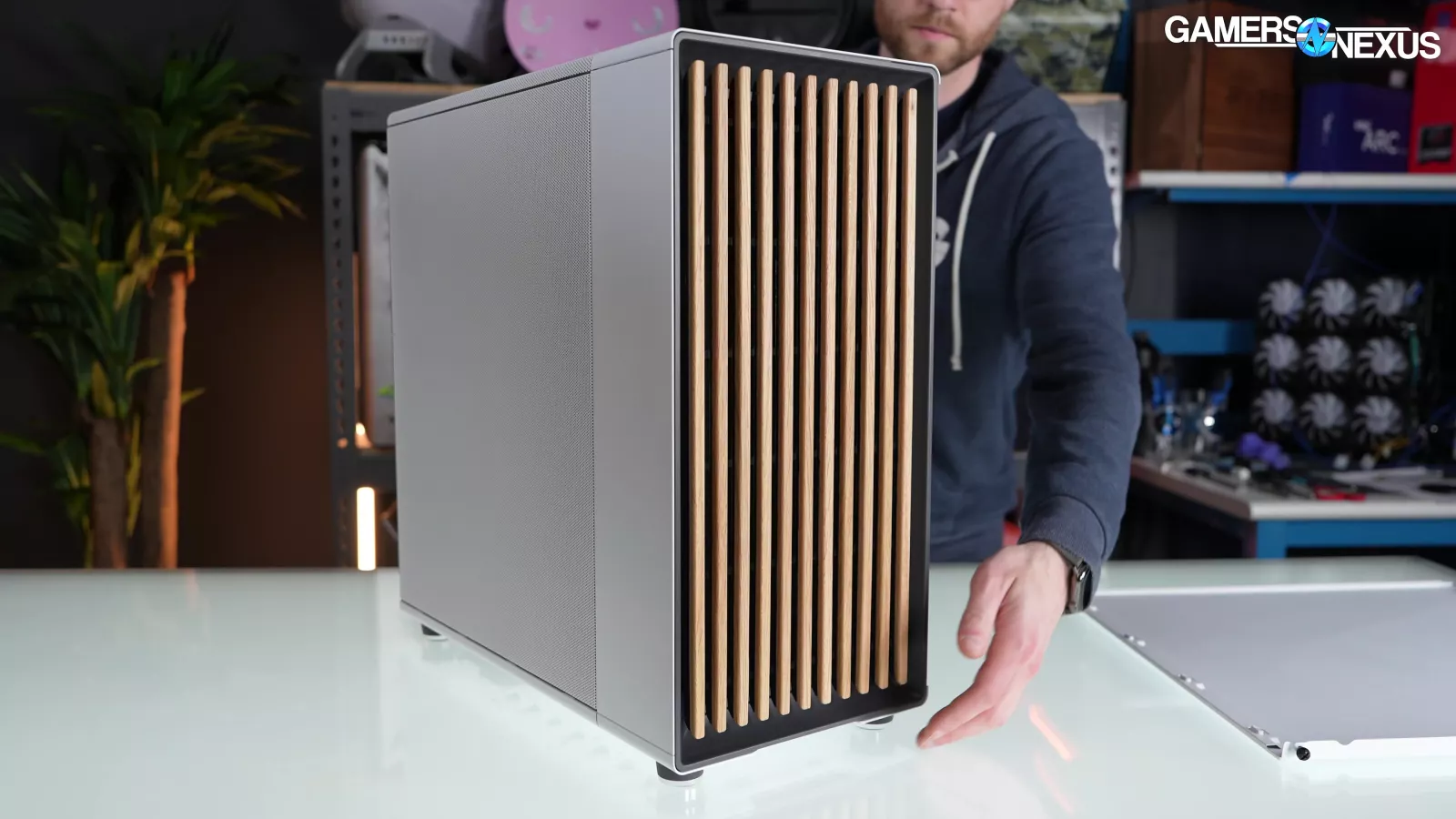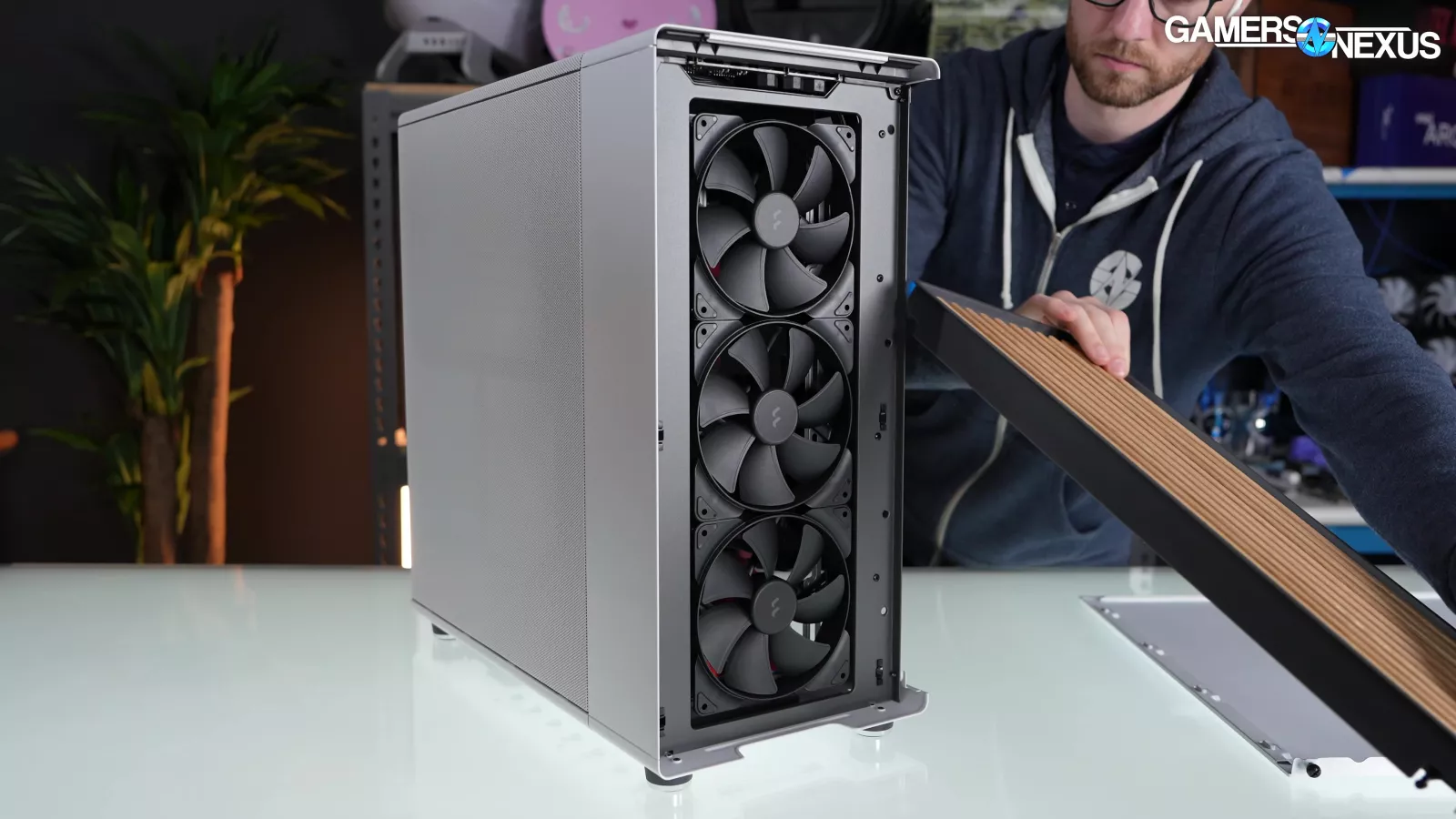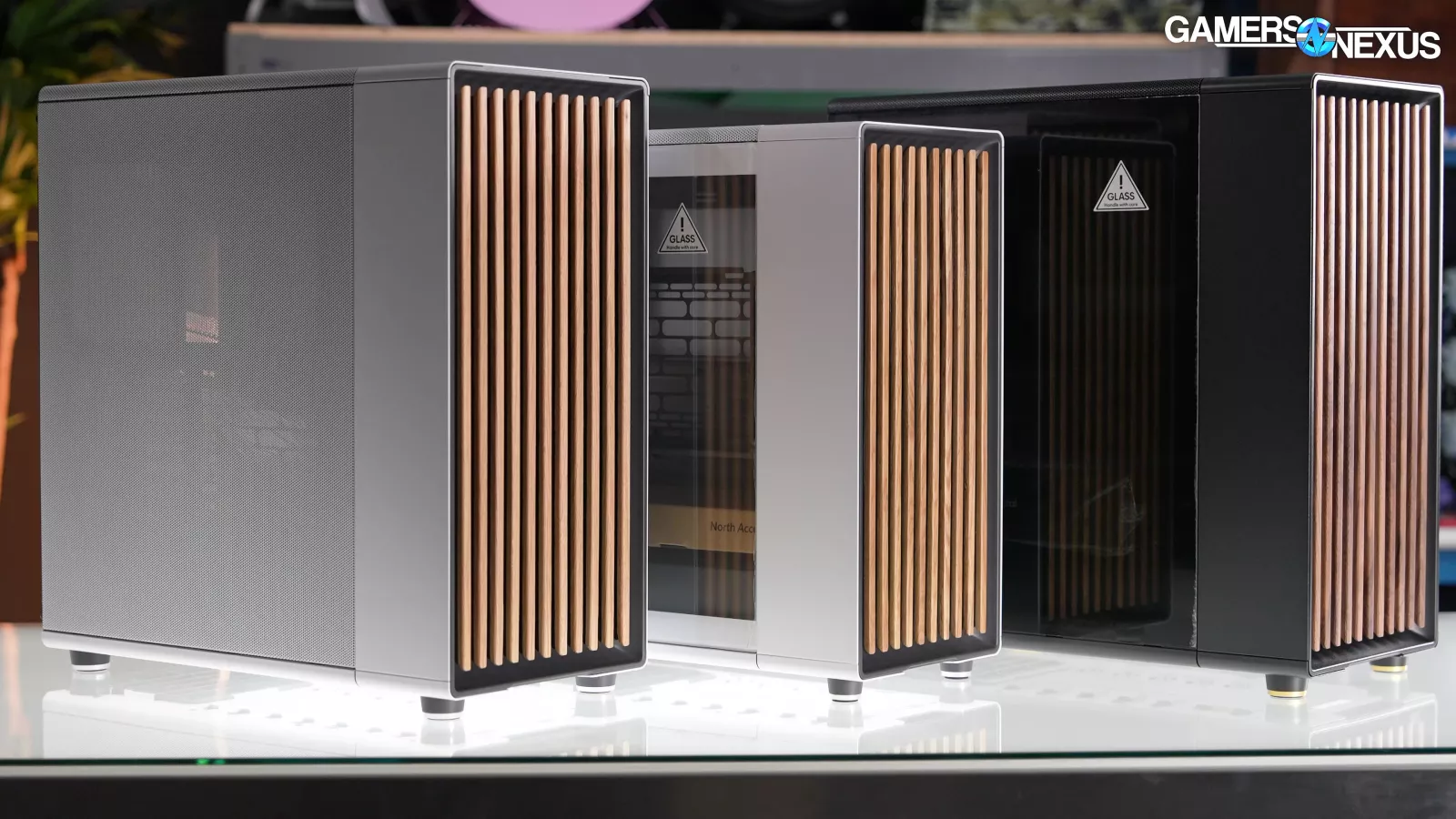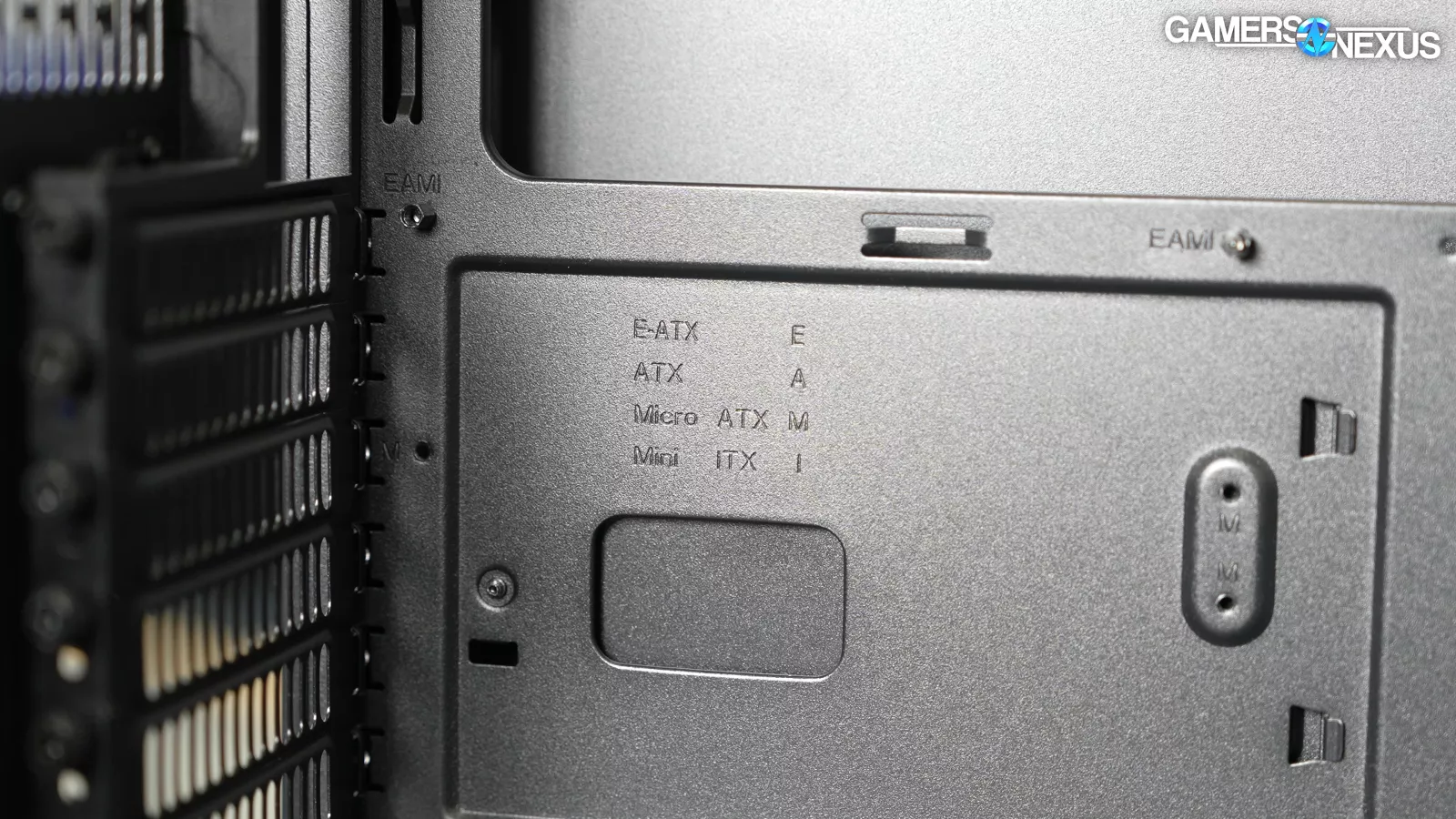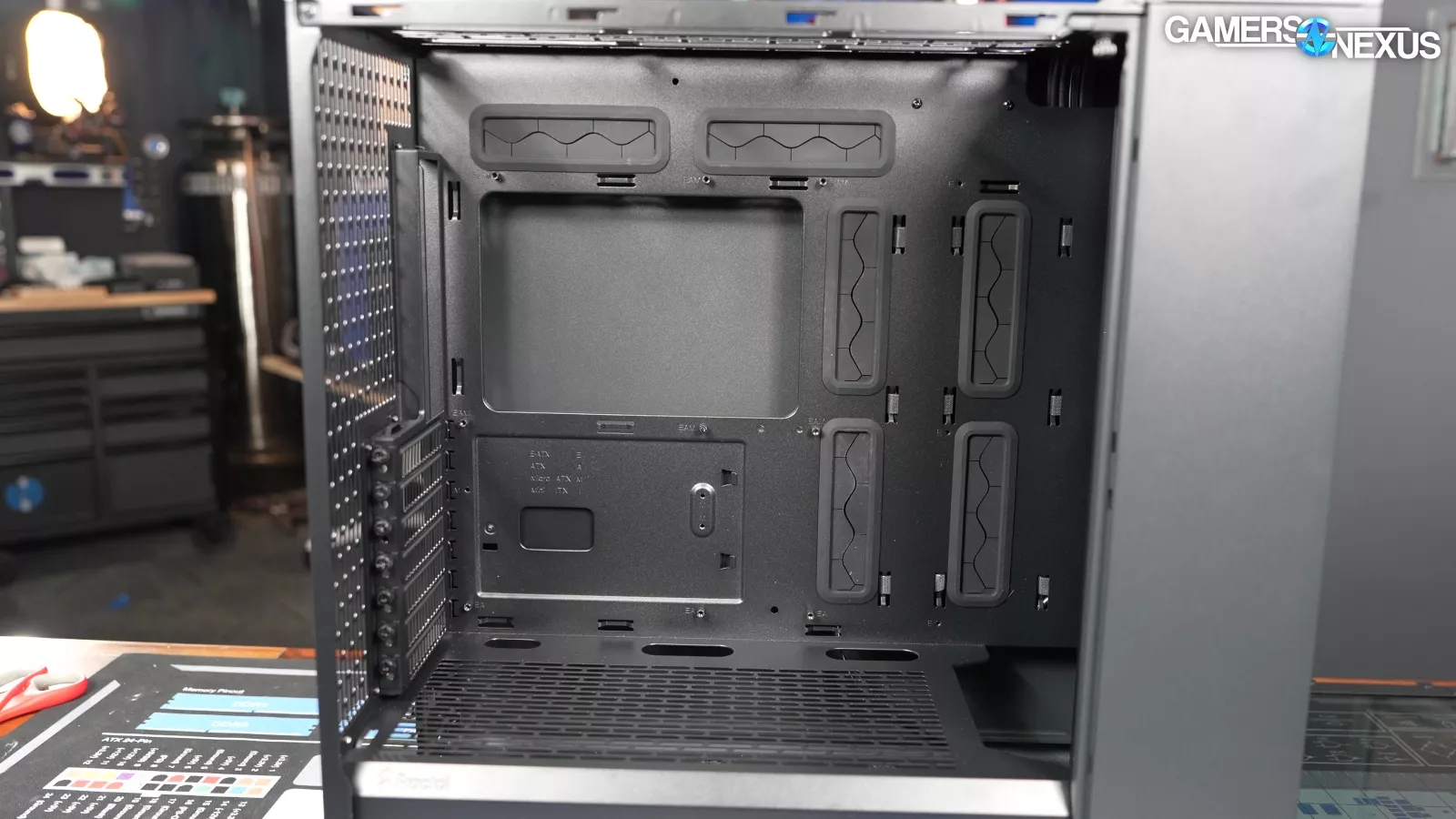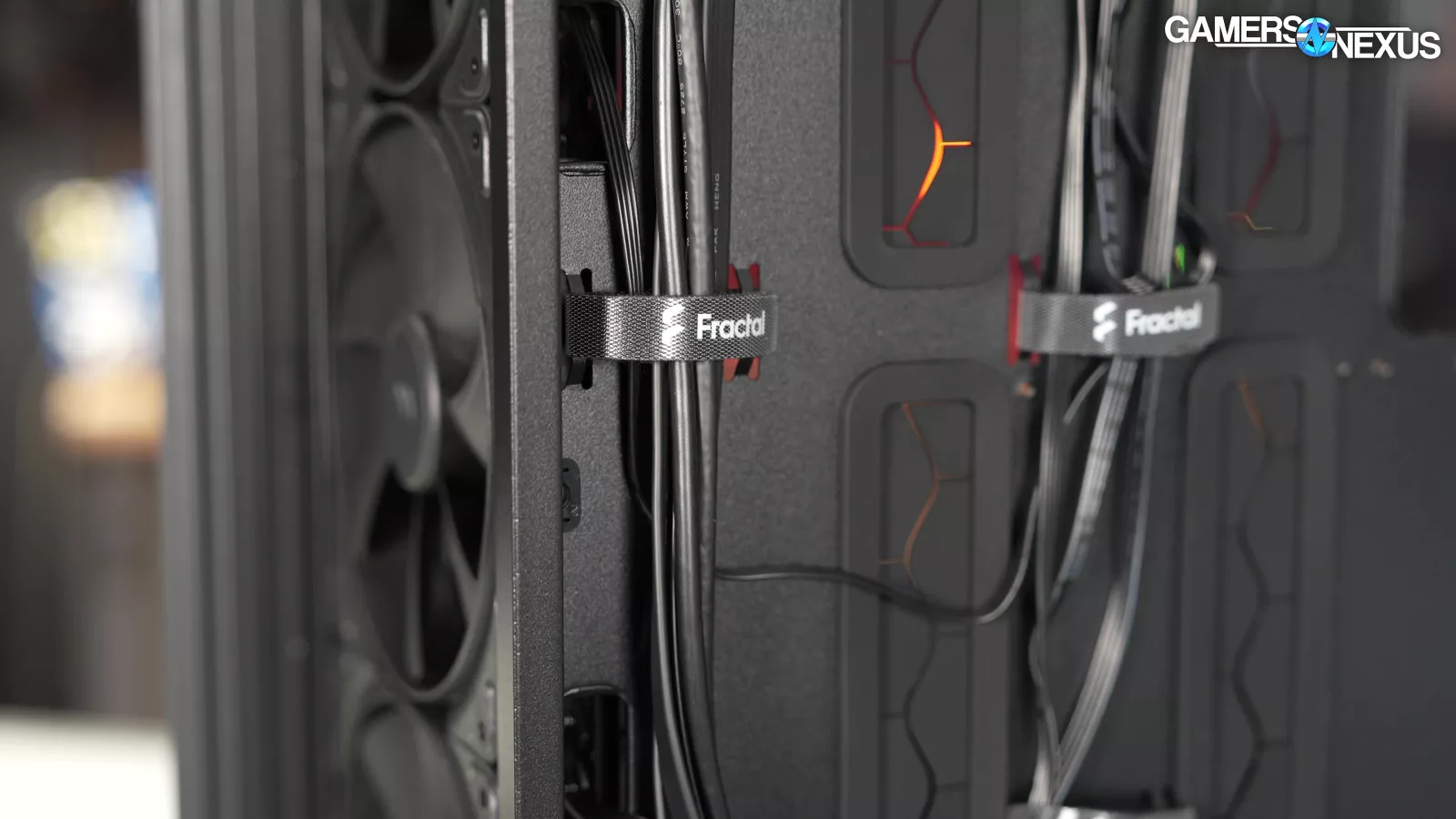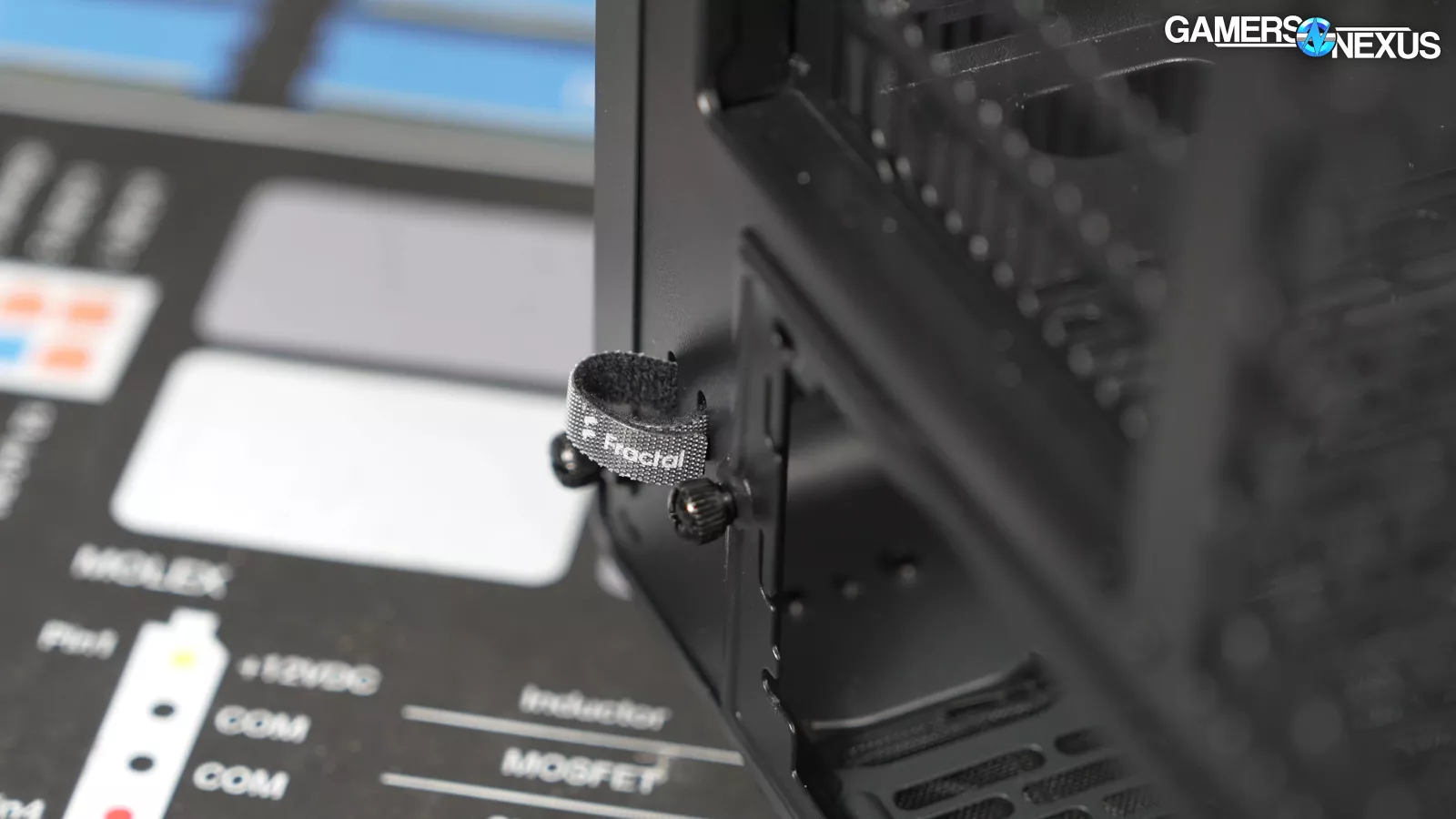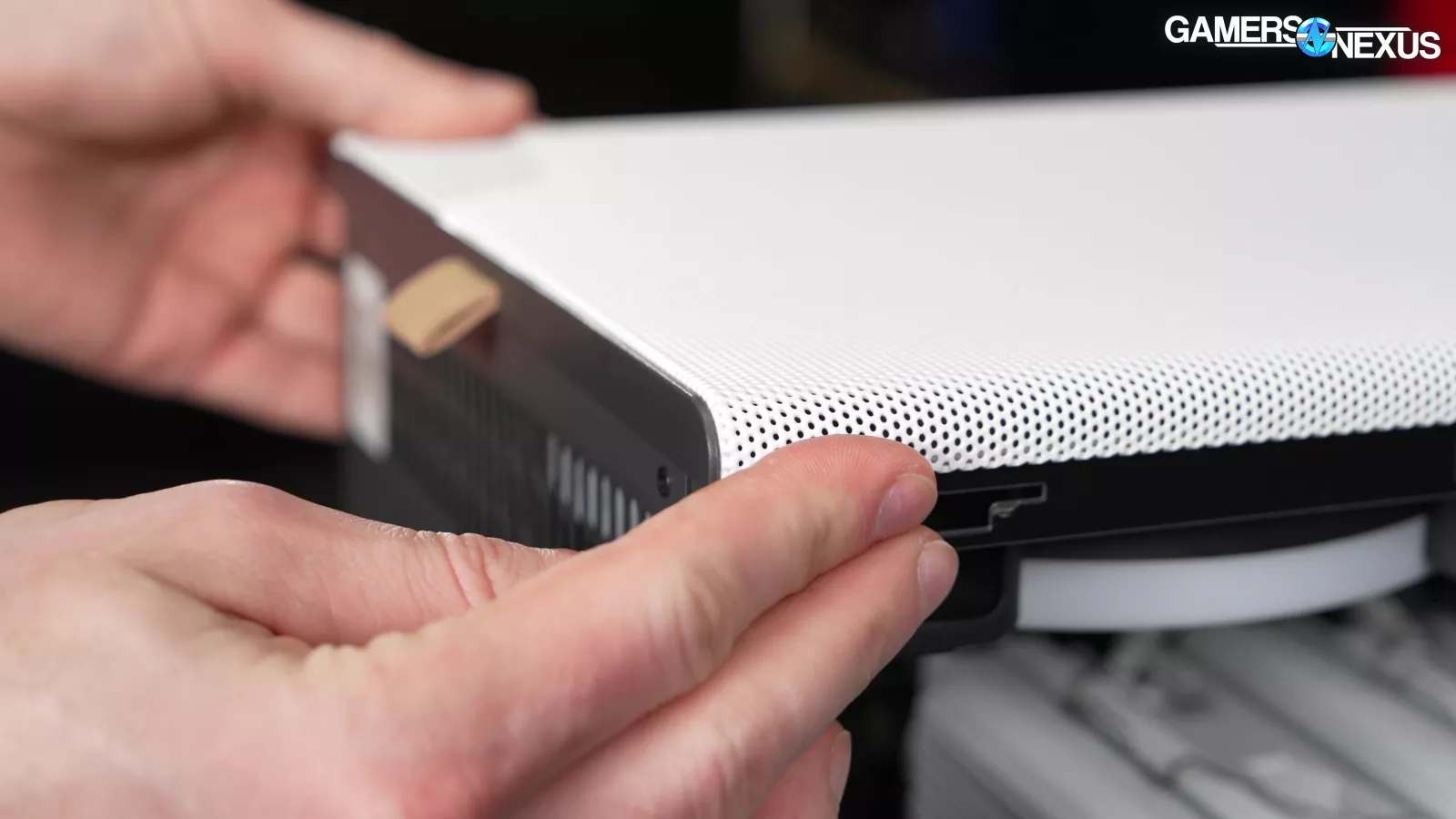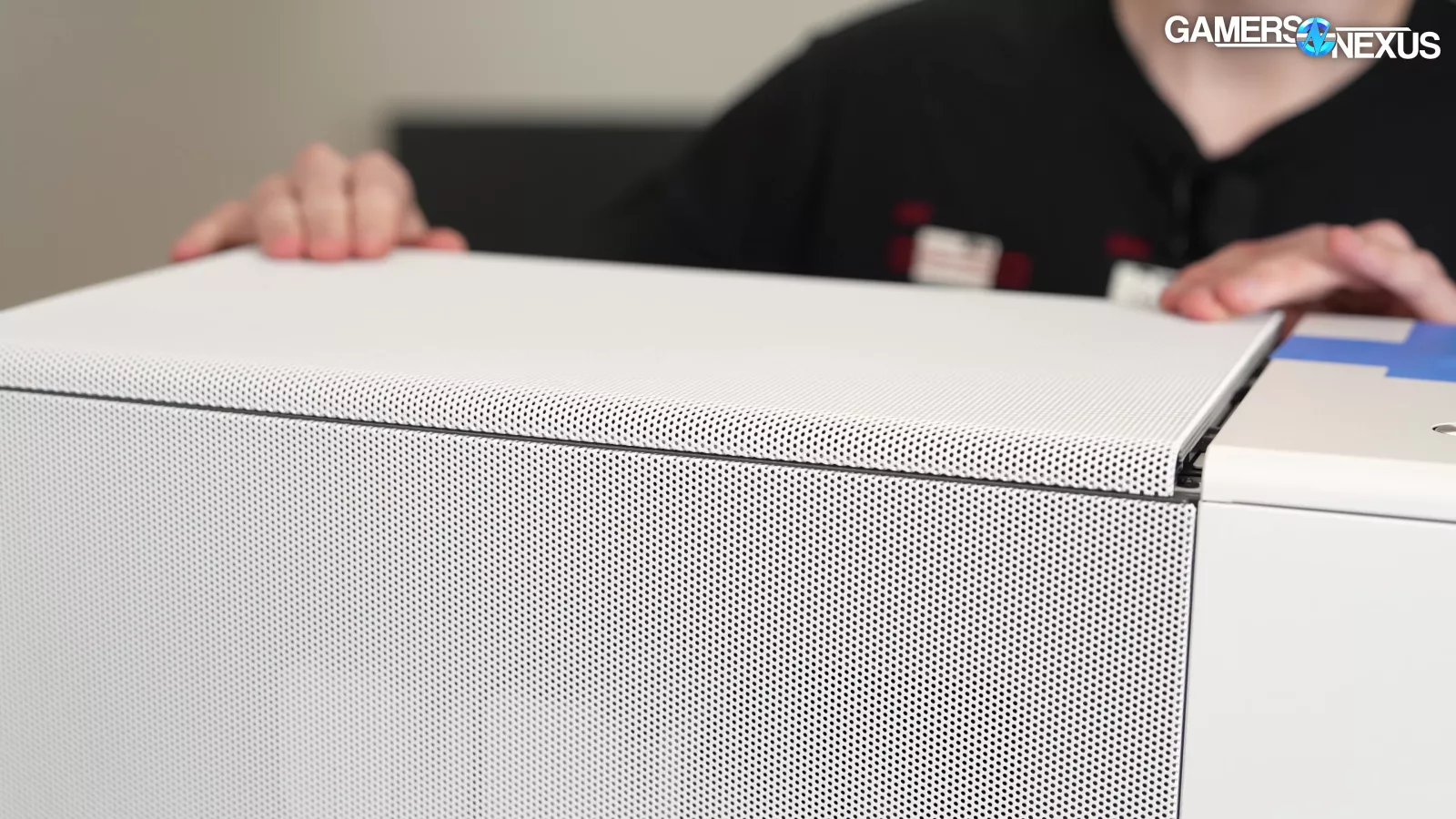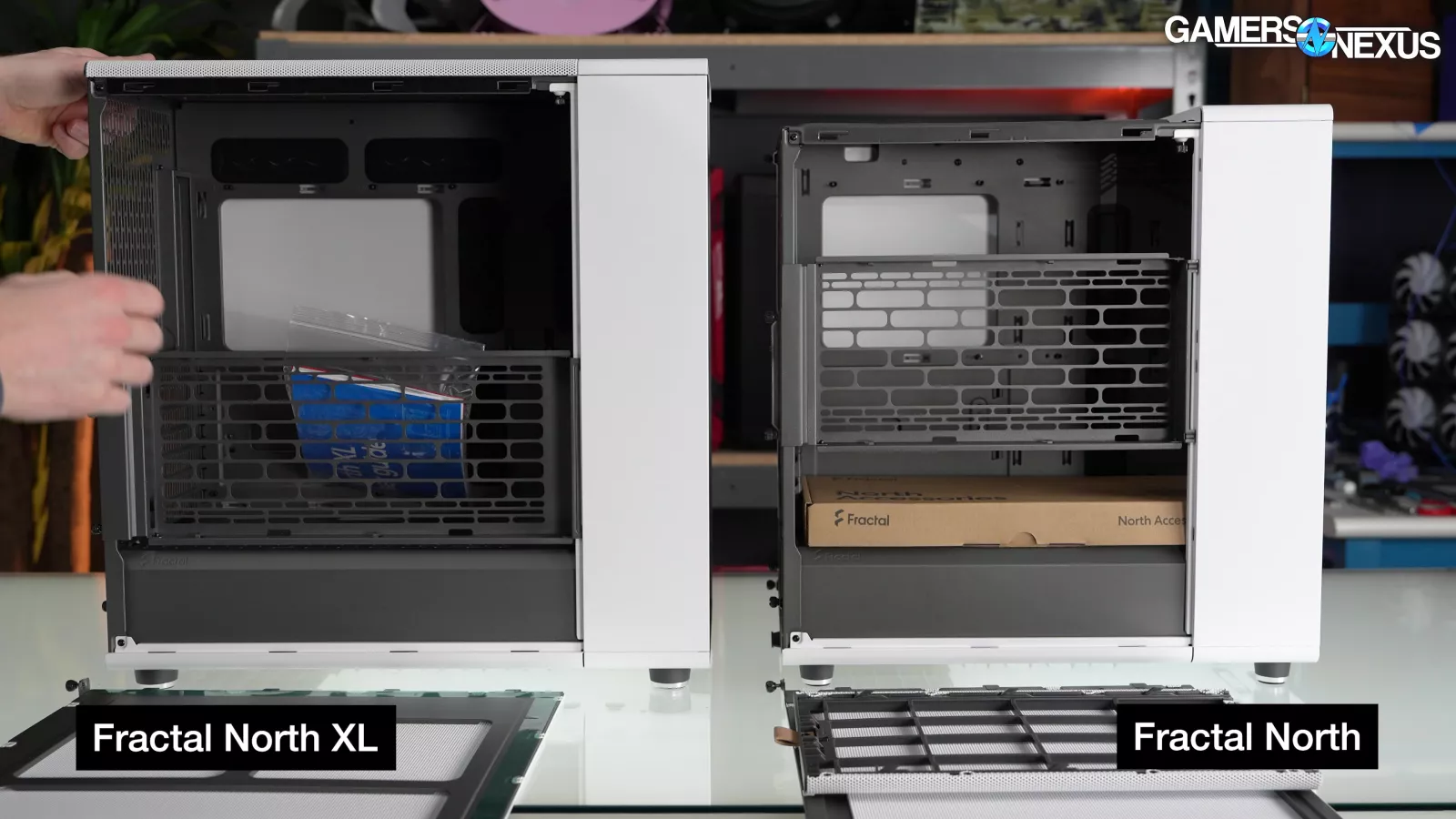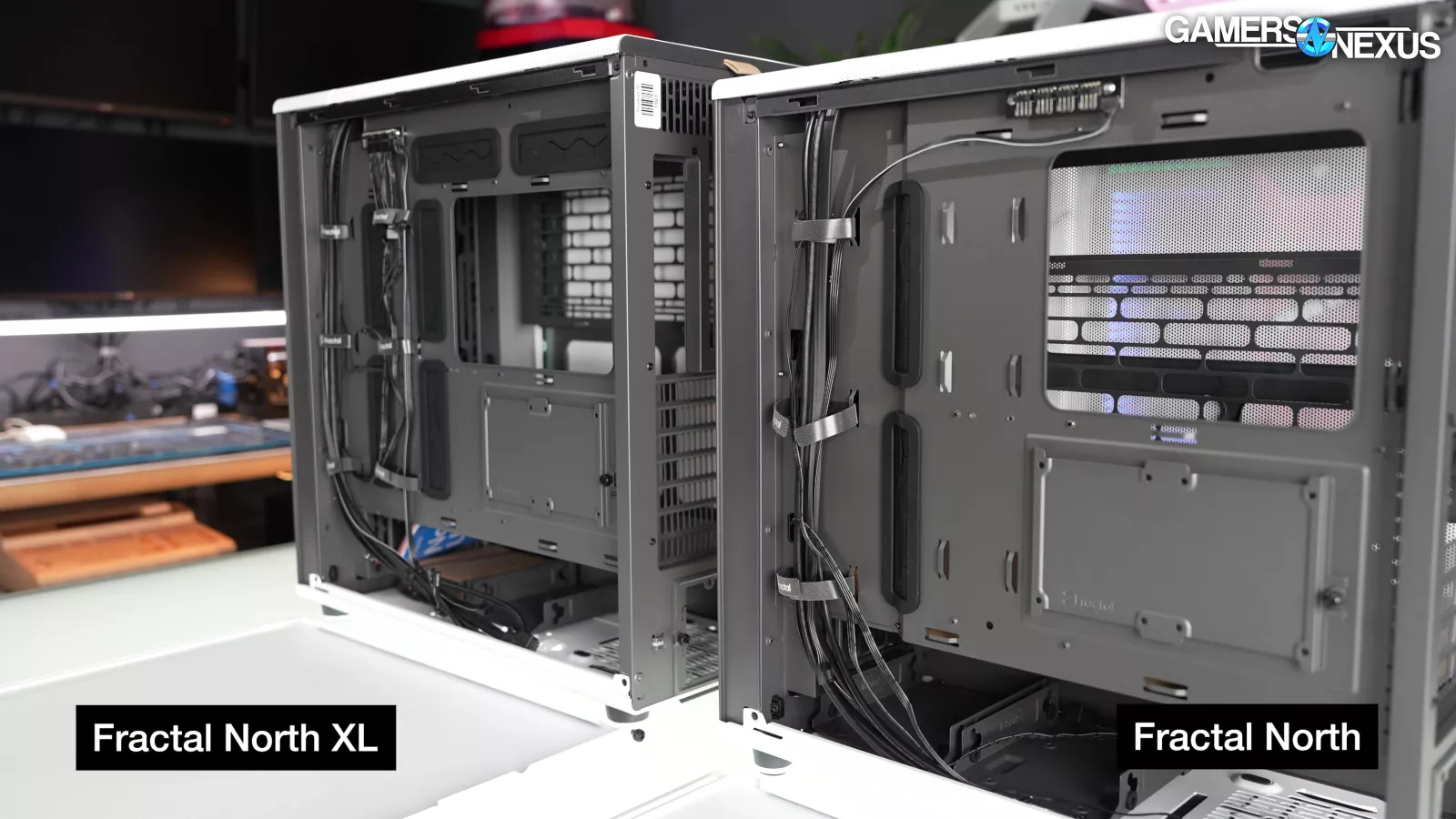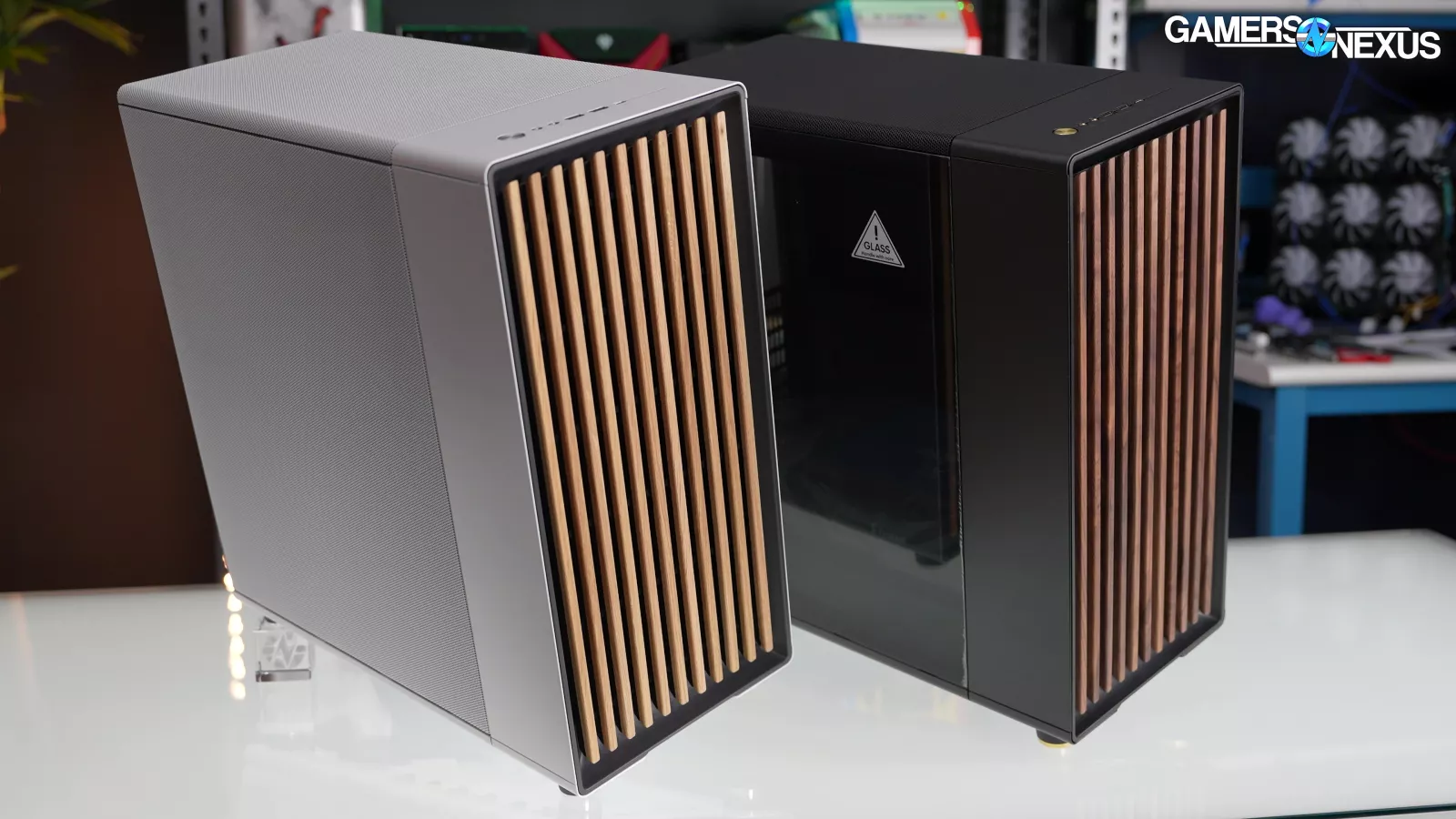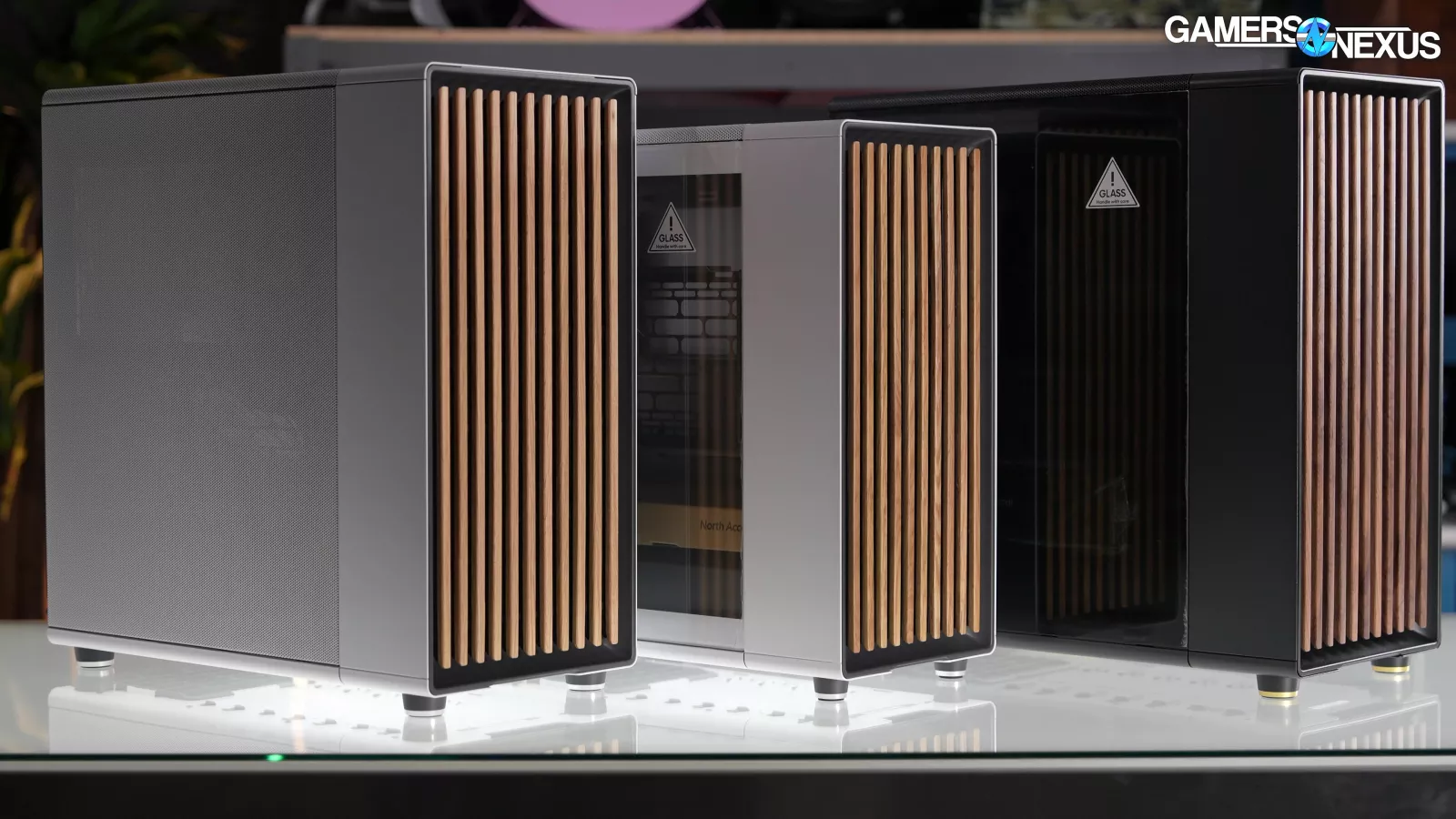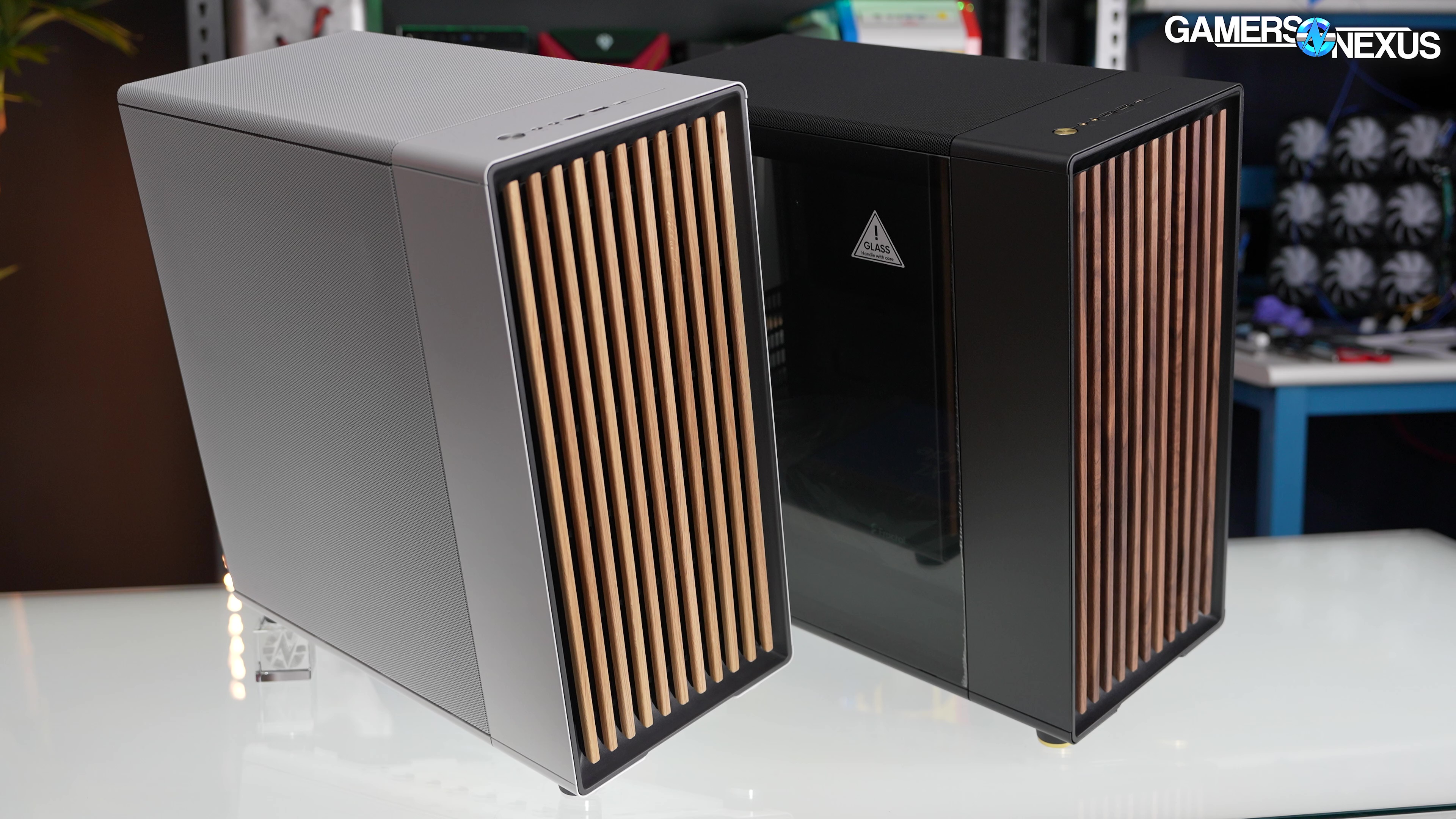
Fractal North XL Case Review & Benchmarks: Wood Panels & Mesh
March 19, 2024
Last Updated: 2024-03-19
We evaluate the Fractal Design North XL’s build quality, design, thermals, and more
The Highlights
- The Fractal Design North XL is a larger version of the North before it
- We experienced some minor fit-and-finish issues like the top panels not snapping securely into into place
- Compared to the North, the XL has more room for everything and maintains its sleek aesthetic design
- Original MSRP: $180
- Release Date: March 7, 2024
Table of Contents
- AutoTOC

Intro
It's been a year since we published our last case review, and in that time we've been updating our hardware and our methodology to better represent modern systems. This is the first one back. Our new case testing methodology is almost 100% complete, but we have even more tests that we’ll be rolling out that didn’t make it into this one. We’re working on a standalone case methodology piece that’ll be posted in the coming weeks, as we made some huge discoveries that we want to really document into a big research piece for everyone.
That means we’re still working through the archives and backlog to get everything on the new charts, but for now, we're starting off with the brand-new, $180 Fractal Design North XL, both the Mesh and tempered glass (TG) variants. The TG version has a glass side panel, while the Mesh version has a mesh side panel and an extra bracket for mounting fans to the side of the case. Otherwise, they're identical. This case can even fit 180mm fans up top, making it one of the more interesting cases to build in.
Editor's note: This was originally published on March 7, 2024 as a video. This content has been adapted to written format for this article and is unchanged from the original publication.
Credits
Testing, Host, Writing
Steve Burke
Testing, Writing, Hosting
Patrick Lathan
Testing
Michael Gaglione
Camera, Video Editing
Vitalii Makhnovets
Web Editing
Jimmy Thang
The original North is one of the last cases we reviewed, all the way back in February of 2023. It's a small, open-fronted mid tower in the style of the old Meshify C, or the newer Meshify 2 Compact. Following those naming conventions, the North should have been the North Compact, because the new North XL is close to a completely normal size. It has almost exactly the same dimensions as Phanteks' older G500A: large, but not extra large. The Meshify 2 XL, for example, is much bigger than the North XL by volume. Fractal already had to come up with Nano for its sub-Compact size, so if there's ever an even larger SKU, it'll need to be named the Giga North.
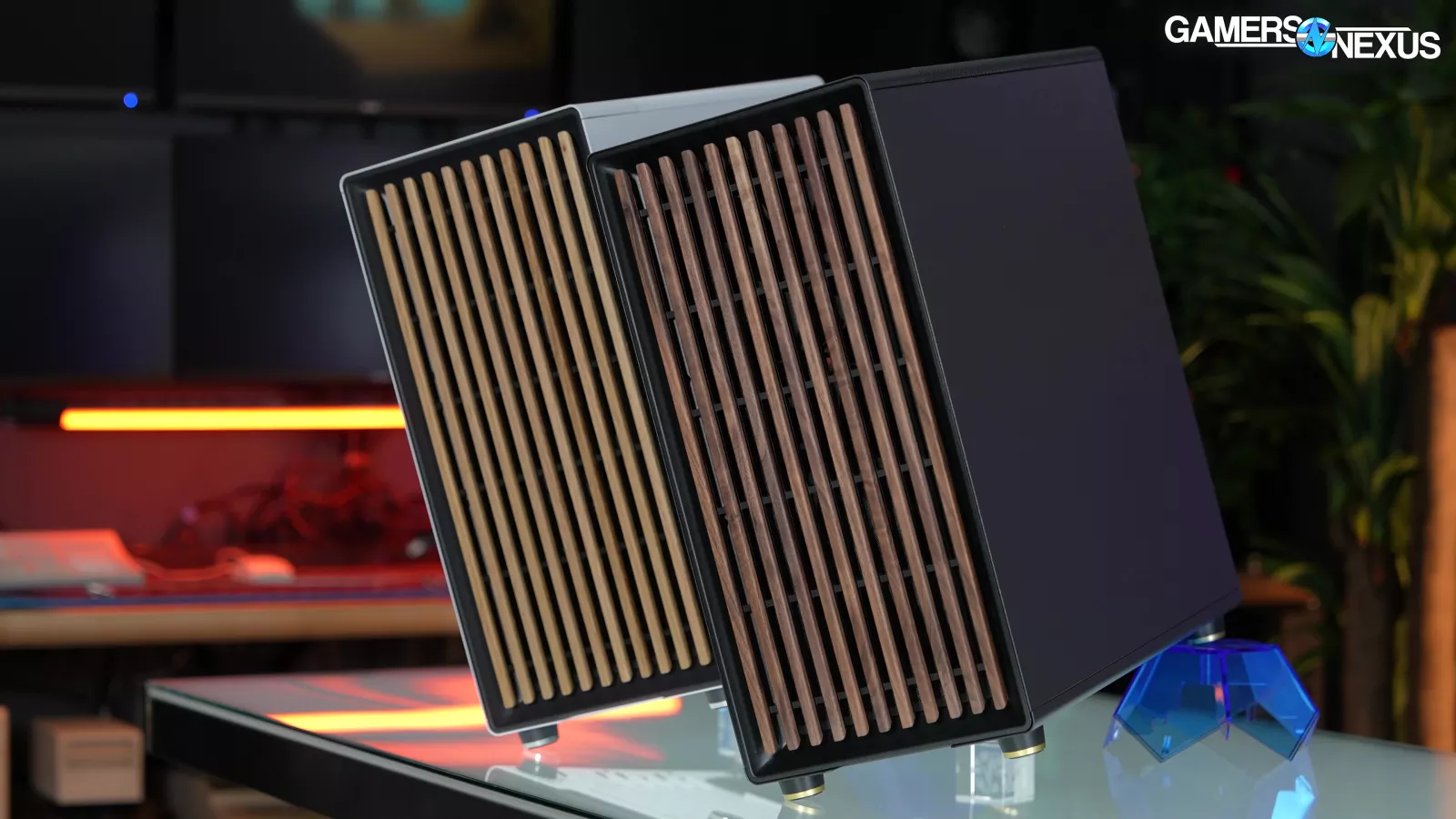
At $180 for all SKUs, the North XL is priced between Fractal's own Torrent and Torrent Compact, and on par with the HYTE Y60 and Corsair 5000D Airflow (the non-RGB variant). Out of those, Corsair's design is the closest to the North XL; we liked the 5000D Airflow, but it's aging, and the price is being propped up by three years' worth of positive user reviews. As for new cases, $180 is just above the Montech King 95 Pro (depending on the King 95's color). We'll compare thermal performance later in this review.
Fractal Design North XL Specs (versus original North)
| North XL - Mesh | North - Mesh | North XL - TG | North - TG | |
| Dedicated 3.5" mounts | 0 | 0 | 0 | 0 |
| Dedicated 2.5" mounts | 2 | 2 | 2 | 2 |
| Combined 3.5/2.5" drive mounts | 2 (2 included) | 3 (2 included) | 2 (2 included) | 3 (2 included) |
| Motherboard compatibility | E-ATX (330mm)/ATX/mATX/Mini-ITX | ATX/mATX/Mini-ITX | E-ATX (330mm)/ATX/mATX/Mini-ITX | ATX/mATX/Mini-ITX |
| Total fan mounts | 9x120mm or 8x140mm | 8x120mm or 6x140mm | 7x120mm or 6x140mm | 6x120mm or 4x140mm |
| Front fan | 3x120, 3x140mm(3x Aspect 140mm PWM Included) | 3x120, 2x140mm(2x Aspect 140mm PWM Included) | 3x120, 3x140mm(3x Aspect 140mm PWM Included) | 3x120, 2x140mm(2x Aspect 140mm PWM Included) |
| Top fan | 3x120, 2x140 or 2x180mm | 2x120/140mm | 3x120, 2x140 or 2x180mm | 2x120/140mm |
| Rear fan | 1x120/140mm | 1x120mm | 1x120/140mm | 1x120mm |
| Dust filters | Front, PSU | Front, PSU | Front, PSU | Front, PSU |
| Front radiator | Up to 420/360mm | Up to 360mm | Up to 420/360mm | Up to 360mm |
| Top radiator | Up to 280/360mm | Up to 240mm | Up to 280/360mm | Up to 240mm |
| Rear radiator | 1x120/140mm* | 1x120mm* | 1x120/140mm | 1x120mm |
| PSU max length | 1 HDD Tray: 290mm max2 HDD Tray: 175mm max | 1 HDD Tray: 255mm max2 HDD Tray: 155mm max | 1 HDD Tray: 290mm max2 HDD Tray: 175mm max | 1 HDD Tray: 255mm max2 HDD Tray: 155mm max |
| GPU max length | 413mm with front fan mounted/380mm with 420/360mm front mounted radiator | 355mm with front fan mounted/300mm with 360mm front mounted radiator | 413mm with front fan mounted/380mm with 420/360mm front mounted radiator | 355mm with front fan mounted/300mm with 360mm front mounted radiator |
| CPU cooler max height | 155mm with Fan Bracket/185mm w.o | 145mm with Fan Bracket/170mm w.o | 185mm | 170mm |
| Cable routing space | 29mm | 30mm** | 29mm | 30mm** |
| Cable routing grommets | Yes | Yes | Yes | Yes |
| Fixed cable straps | Yes | Yes | Yes | Yes |
| Captive thumbscrews | HDD brackets, SSD bracket, Side Panels, Fan Bracket, PSU Bracket | HDD brackets, SSD bracket, Side Panels, Fan Bracket, PSU Bracket | HDD brackets, SSD bracket, Side Panels, PSU Bracket | HDD brackets, SSD bracket, Side Panels, PSU Bracket |
| Left side panel | Mesh | Mesh | Tempered Glass, 3mm | Tempered Glass, 3mm |
| Right side panel | Steel | Steel | Steel | Steel |
| Case dimensions (LxWxH) | 503x240x509mm (36% increase) | 447x215x469mm | 503x240x509mm (36% increase) | 447x215x469mm |
| Case dimensions w/o feet/protrusions/screws | 490x240x490mm | 433.5x215x450mm | 490x240x490mm | 433.5x215x450mm |
| Net weight | 9.7kg | 7.6kg | 9.5kg | 7.7kg |
| Package dimensions (LxWxH) | 604x355x608mm | 565x326x553mm | 604x355x608mm | 565x326x553mm |
| Gross weight | 11.9kg | 9.55kg | 11.7kg | 9.3kg |
| *If you're using a rear radiator the fan bracket can only be slotted into the bottom position | ||||
| **Maximum cable routing depth |
Specs copied from manufacturer materials, please read review for our own measurements and opinions
The Build
We have to give some time to the case's appearance up front, because it's the reason the North has been so popular. The XL has the same wooden front panel slats as the original, still offered in "oak" or "walnut" with the white and black SKUs respectively. It looks great.
Our original review was of a white North, but seeing both, we have come to prefer the darker variant with gold accents.
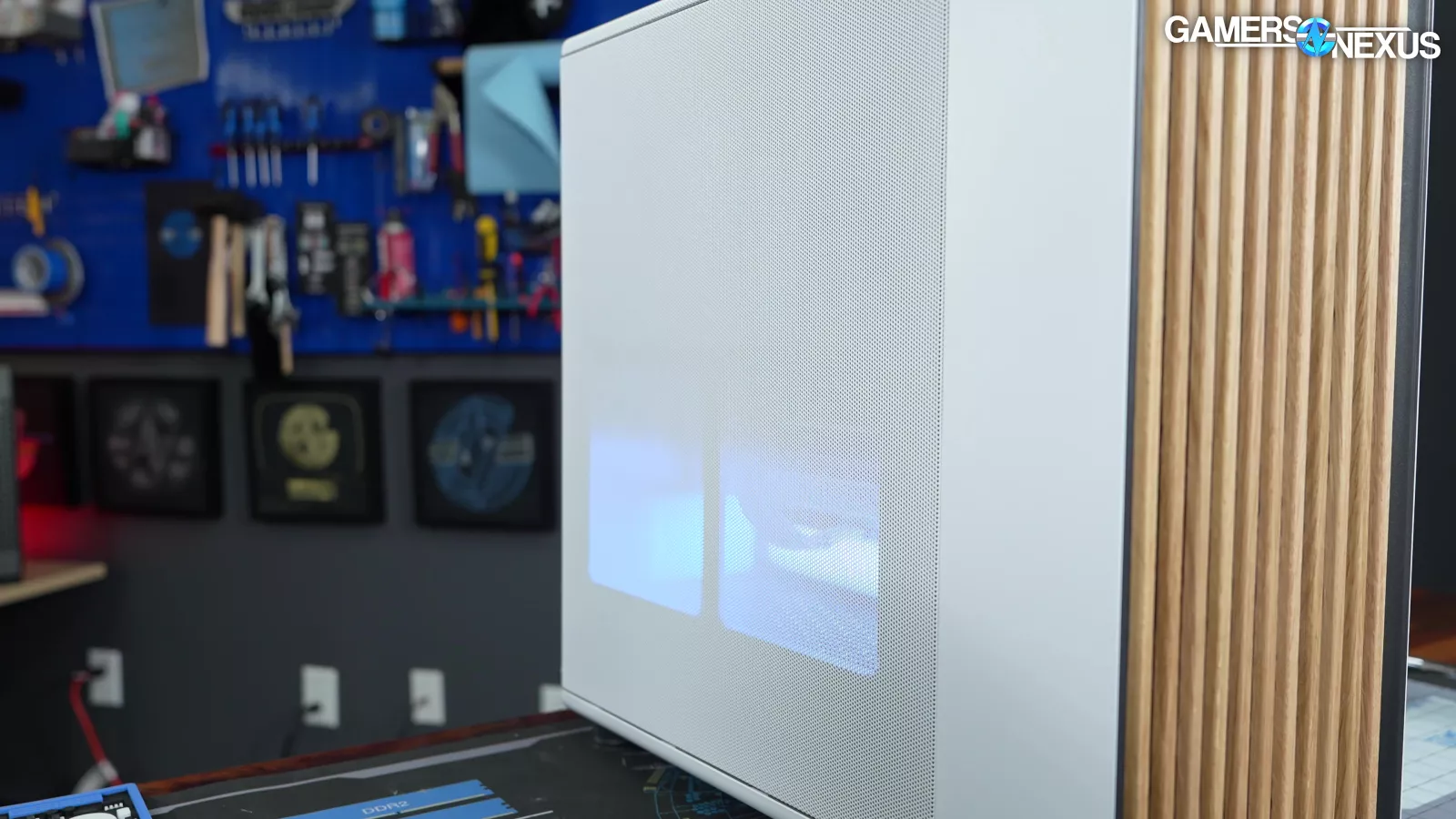
One warning from our original review still applies: case lighting is a waste inside the XL with the mesh panel. At best, it's invisible, and at worst, it silhouettes the reinforcements in the side and front panels.
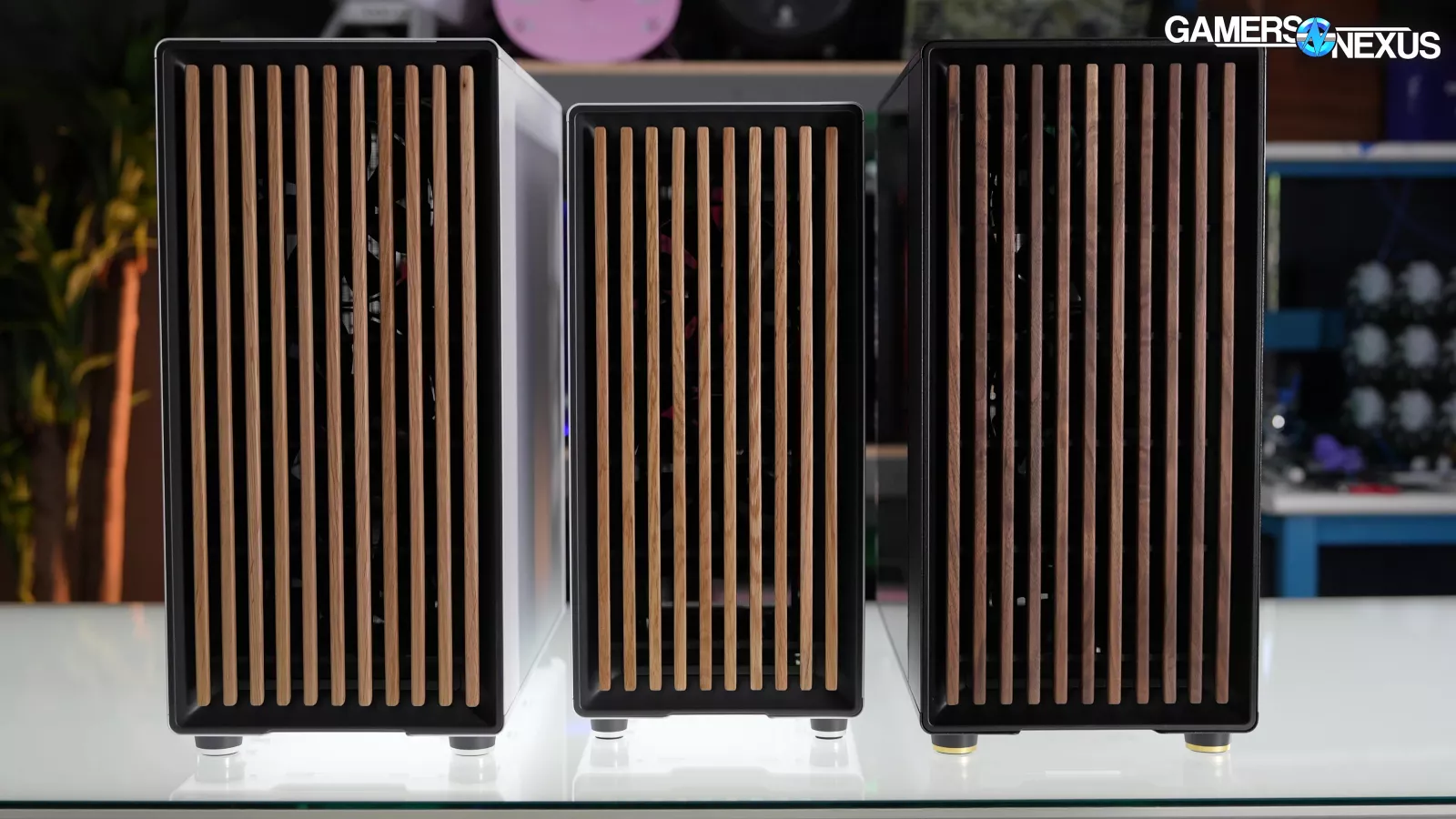
There are two main things that the XL's additional space gets you: more clearance for components and more flexibility for cooling.
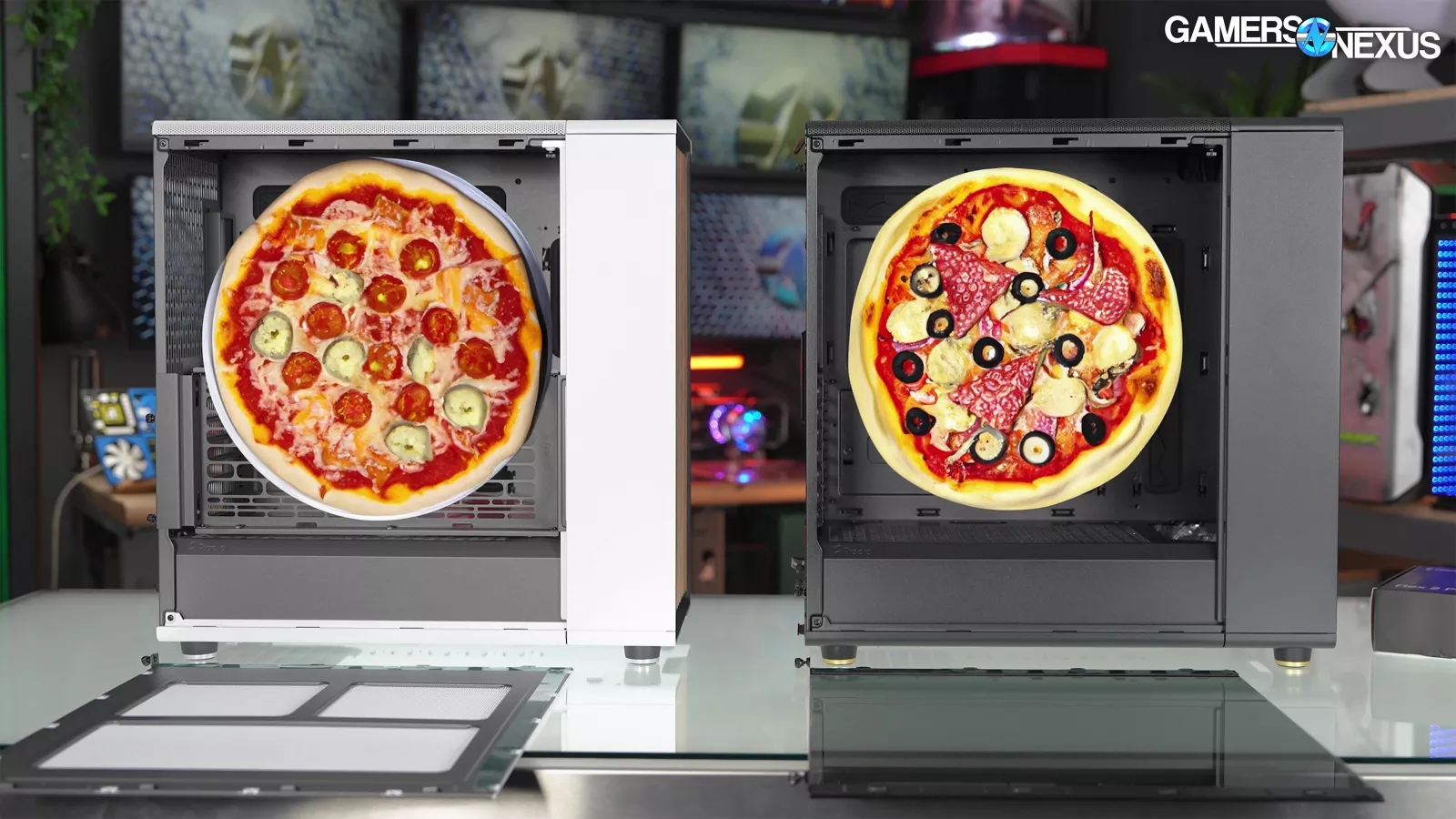
Regarding components, the major change is that the XL can fit GPUs up to 413mm without removing any fans, which is enough to fill a 16-inch pizza. This is up from 355mm in the original. The 4070 Ti we use for case testing fits in the original North, but there's not enough space for Gigabyte's GPU support bracket; the XL, however, has enough space for both the support bracket and the GPU.
The XL also reduces the problems with clearance that the original North's side fan bracket (exclusive to the Mesh version) had with both CPU and GPU coolers.
To start with, there are only two possible positions for the bracket in the XL versus three in the original, which is more of a simplification than a downgrade. Putting the bracket in the upper position will mostly benefit downdraft coolers, but it can fit over tower coolers up to 155mm tall, which is enough to fit even the Peerless Assassin that we use for case testing. Moving the bracket to the lower position focuses cooling on the GPU.
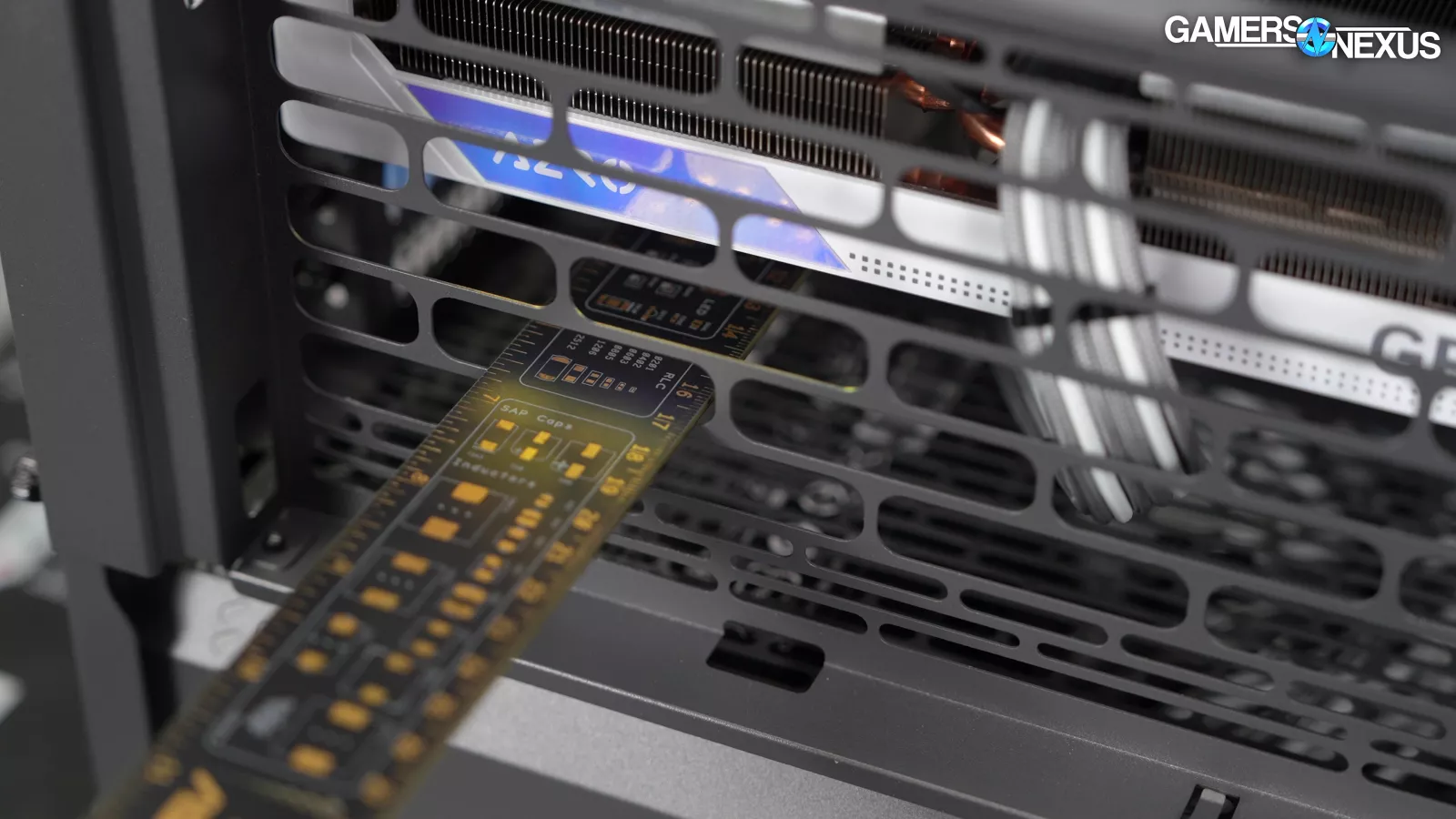
It's compatible with most GPUs, but it may put some strain on cables with extremely wide cards with power connectors on their edges, like the 4090 FE or the MSI Twin Frozr model from our old case testing bench. This is one measurement you should check before buying: the total distance from the surface of the motherboard to the side fan bracket is 165mm.
Fractal has used standard hole spacing on the entire rear of the case within its ventilation cut-outs, including in the PCIe slot covers and the top of the PSU shroud, meaning that case fans can be mounted in effectively any location where there's enough space—and since the XL has more space, more locations are viable. This really opens up cooling options in ways that don’t necessarily appear on a spec sheet.
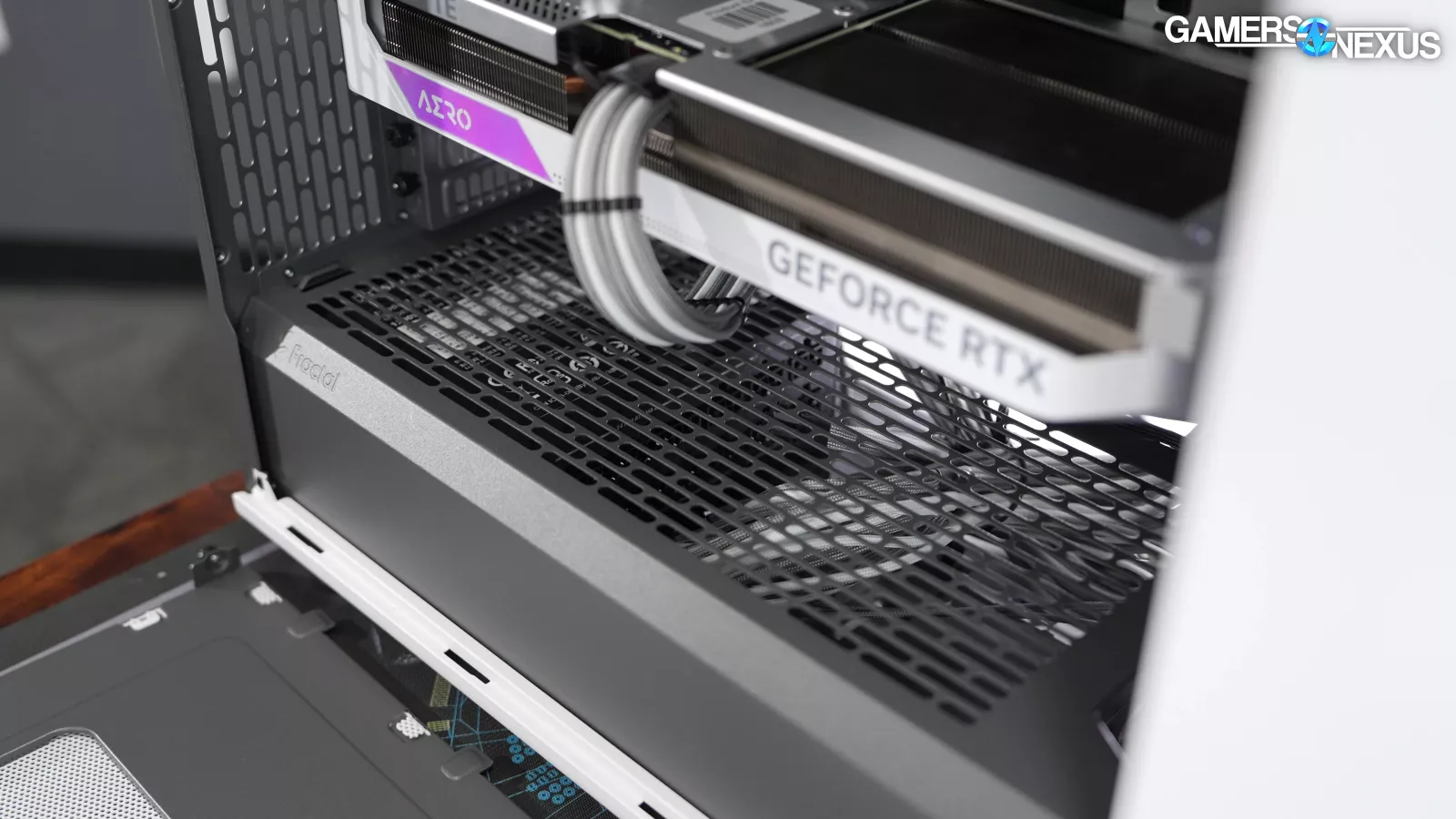
This does mean that the entire top of the PSU shroud is see-through, though, which doesn't help the glass-sided SKU to look its best. If your PSU cables don't match the color of the case, they'll be fully visible. The white variant would go best with custom cables unless going for a black-and-white theme.
The holes also mean that the shroud top is no longer a possible mounting location for the two included 3.5" drive brackets, so although the North XL's total drive capacity is the same as the original's, there's one less choice about where to put those drives.
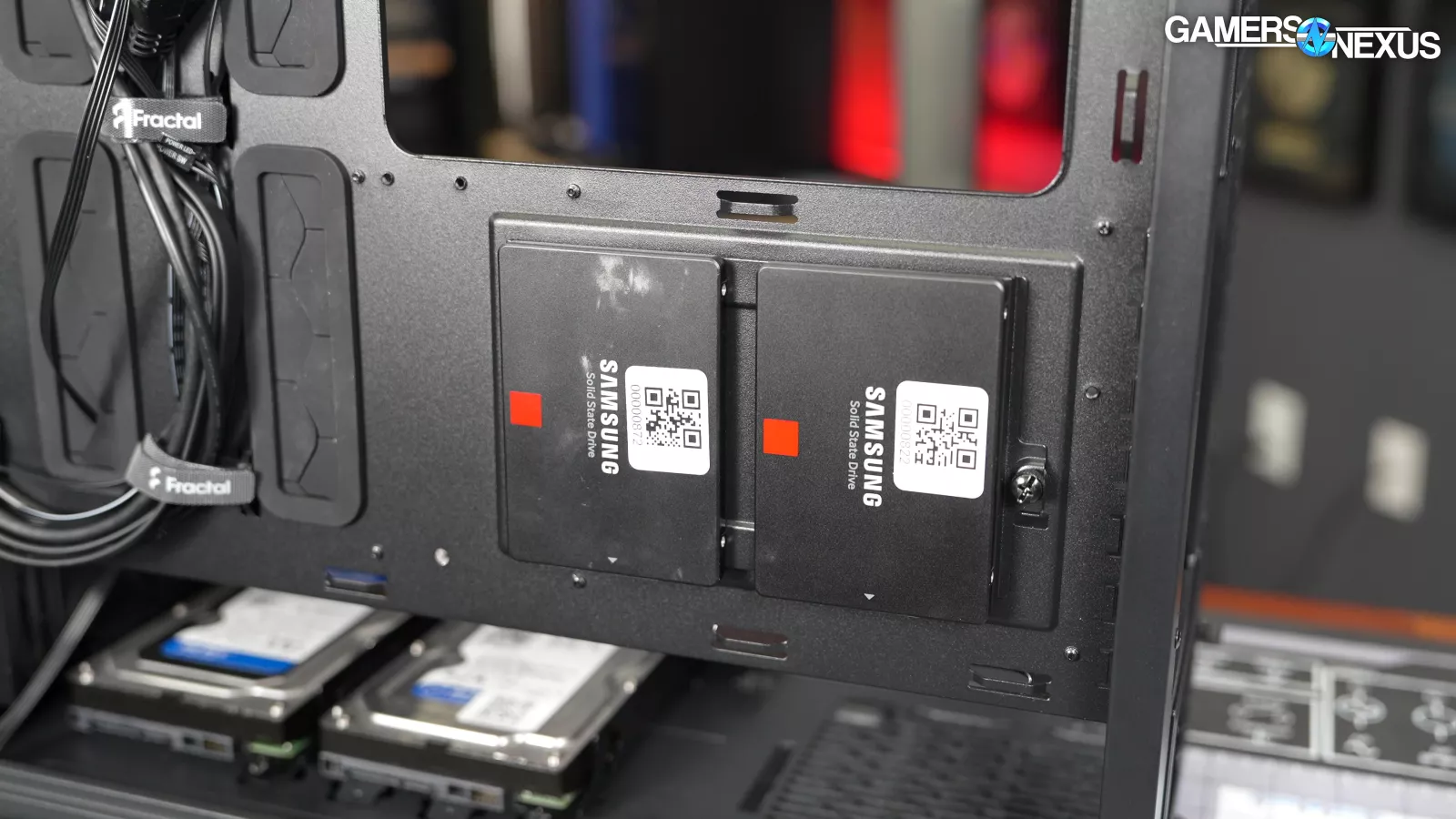
The official absolute maximum capacity is four 2.5" drives and two 3.5" drives, and that's with double-stacked drives.
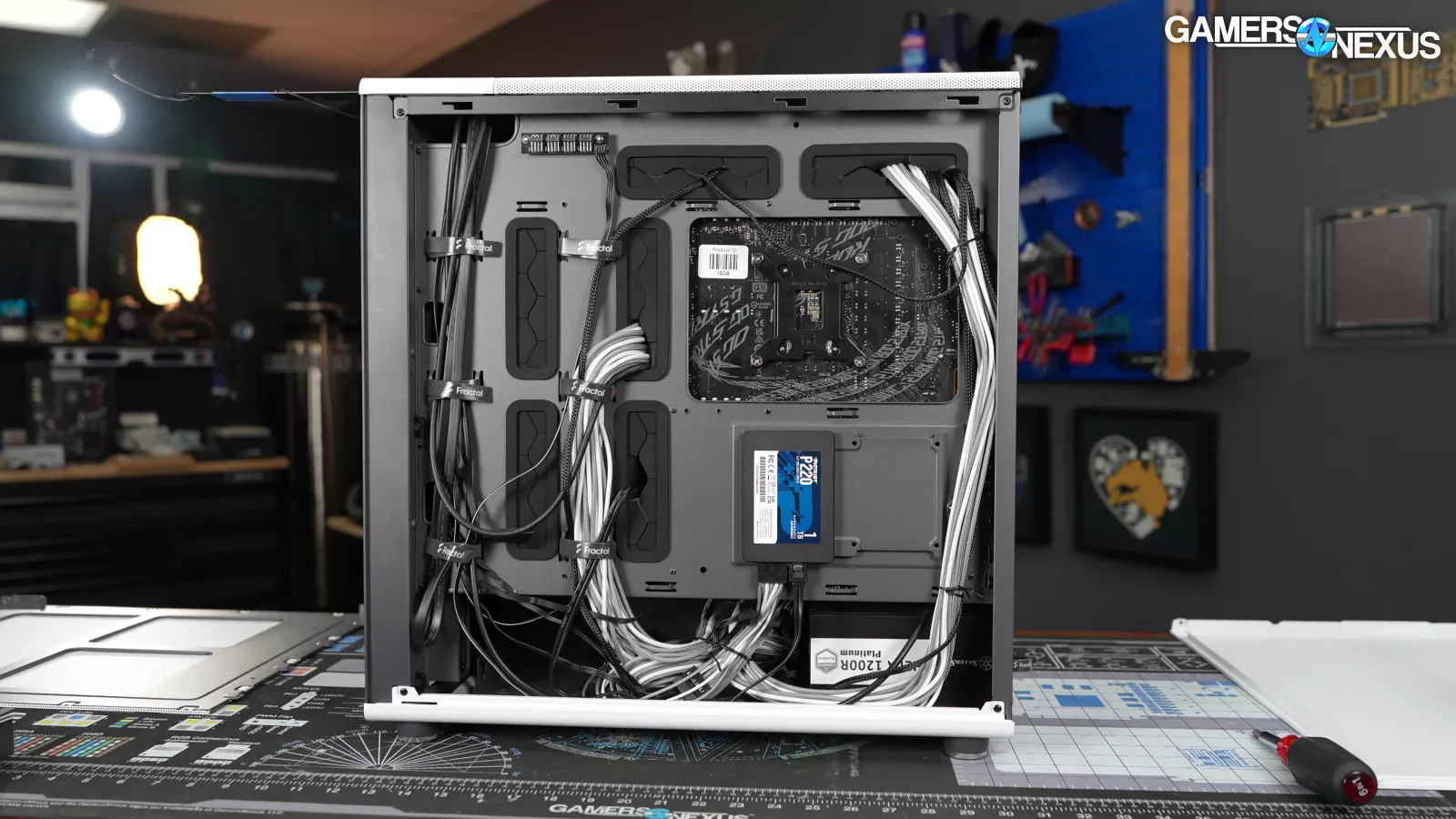
Still, the XL's size makes it more practical to actually use the mounts without competing for cable space, so that’s a big positive for those using non-M.2 drives.
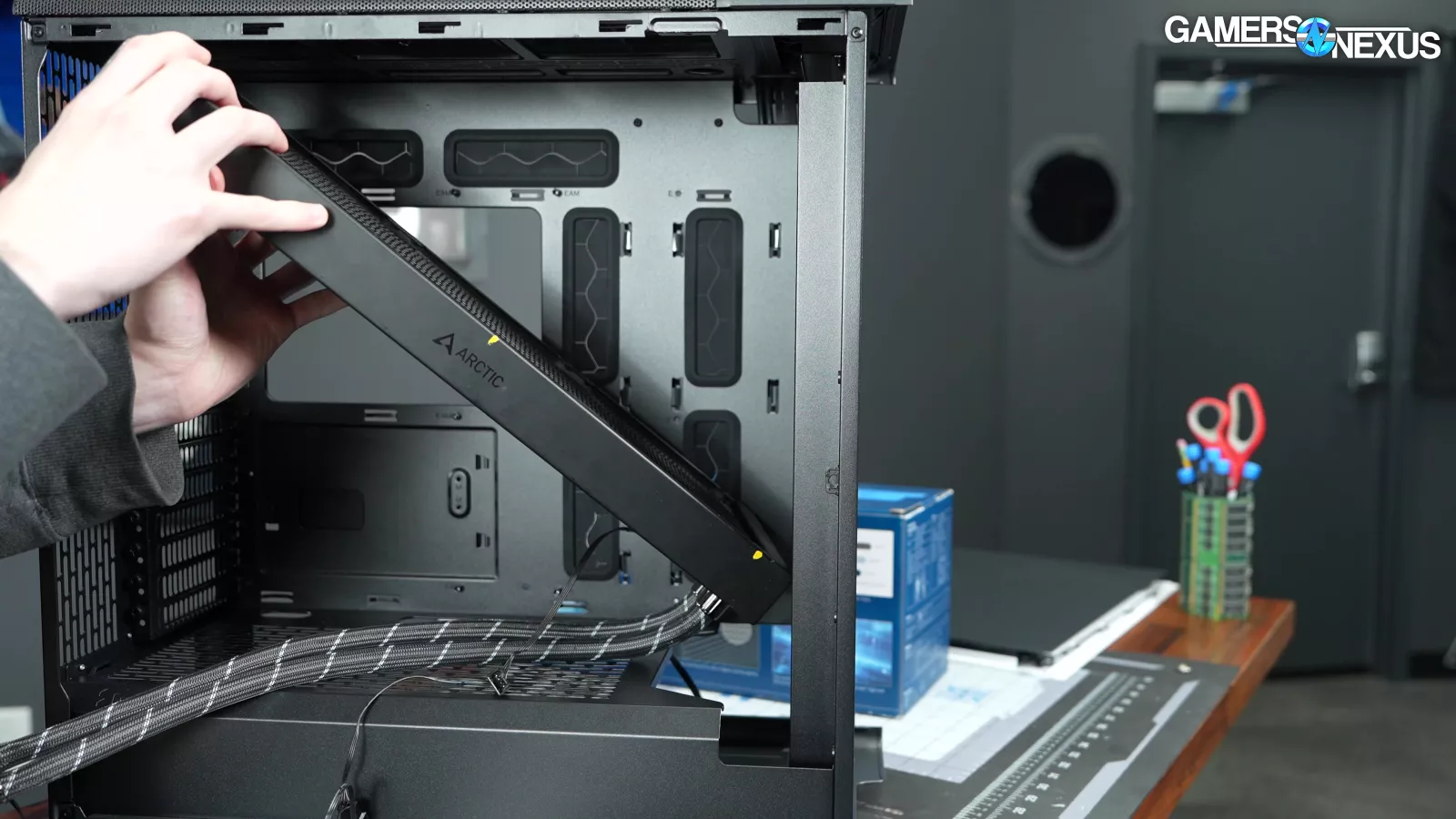
The original North was small enough that fitting anything larger than a 240mm CLC was ambitious, with a hard limit at 360mm. The XL can fit a 420mm radiator in the front, although we'd mainly recommend doing so with open-loop cooling. Closed loop coolers function best in a tubes-down orientation, and a 420mm CLC oriented tubes-down would be a tight fit in the North XL. This isn’t deadly for the pump in the same way that positioning the pump at the top of a loop is, but it is more likely to introduce bubbling noises as air at the top of the tank finds its way into the tubes. This will happen more as permeation increases.
For radiators over 240mm in size, fans must be mounted to the outside of the chassis and radiators on the inside in order to clear the PSU shroud cutout.
As for the top mount, the space above the motherboard's top edge has been more than doubled, from 3cm to 7cm. That’s a huge size improvement for larger builds and leaves plenty of room for cables even when using the top fan mount, which now fits the aforementioned massive 180mm fans. Also, the extra case width shifts the top mount further from the motherboard, so mounting a radiator with fans in the top slot is now less likely to conflict with VRM heatsinks or RAM. Still, we'd always like to see a removable mounting tray just for ease of access.
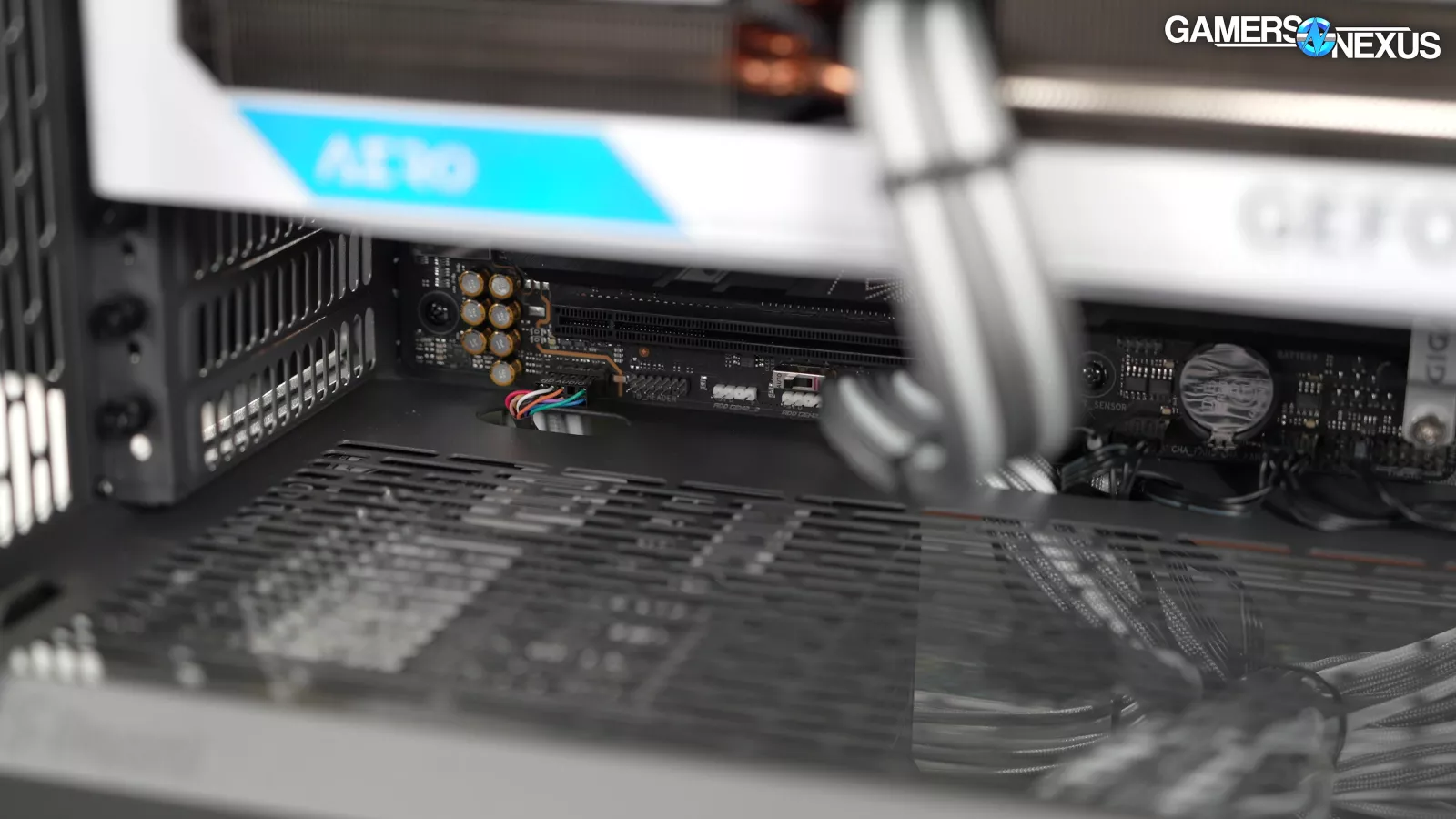
The cutouts below the motherboard haven't really changed, but the width of the case makes them more usable, since previously they'd be partially blocked by an ATX PSU.
The included fans are 3x 140mm Aspect 14 PWMs with a max rated speed of 1,700RPM. All three fans are mounted at the front of the case, completely filling the front slots with zero room to spare.
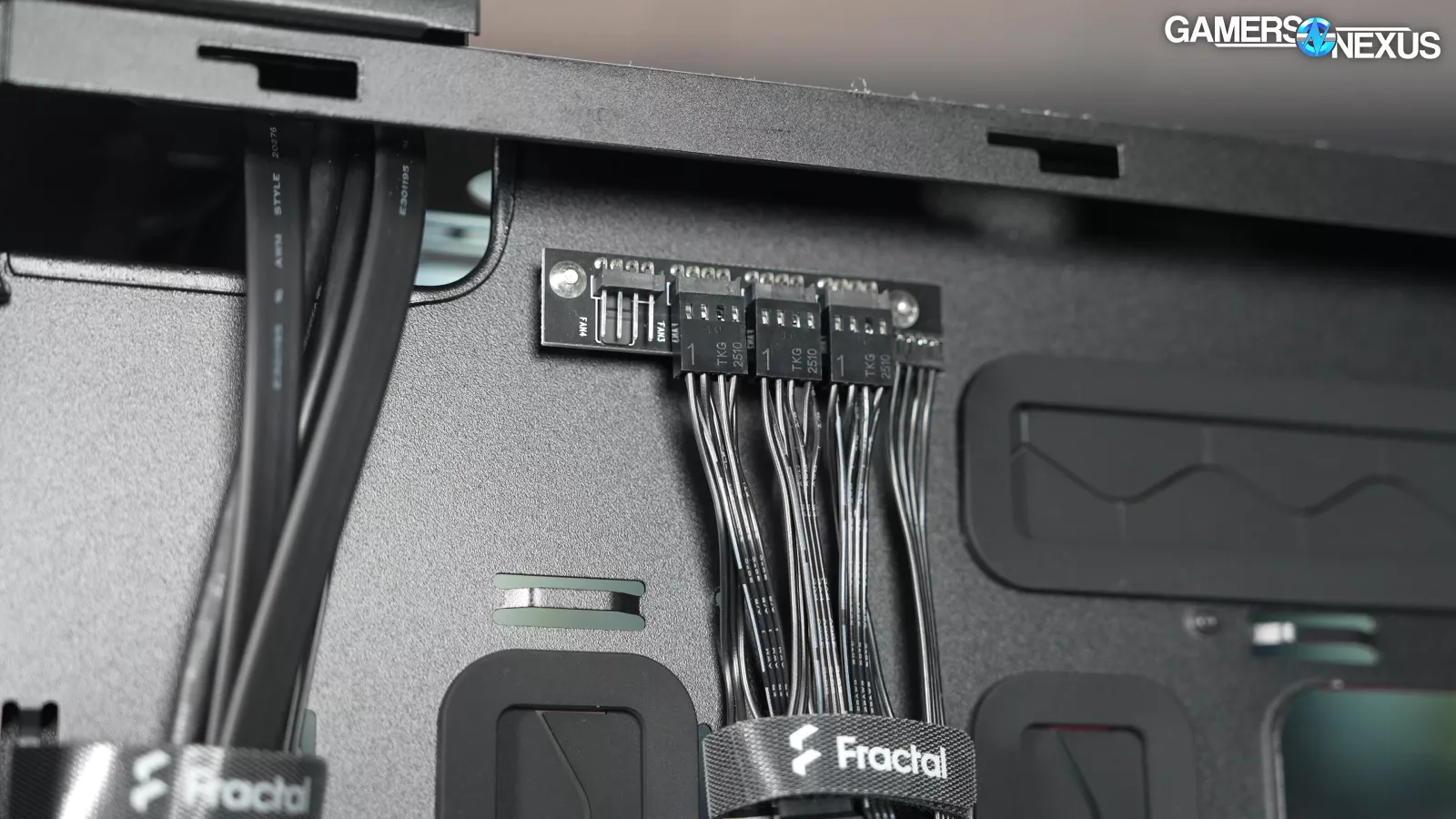
The built-in fan hub simply splits one four-pin PWM input across four channels, so there's one extra, but each fan also has a daisy-chain connector, meaning there are still four open plugs for additional fans out-of-the-box.
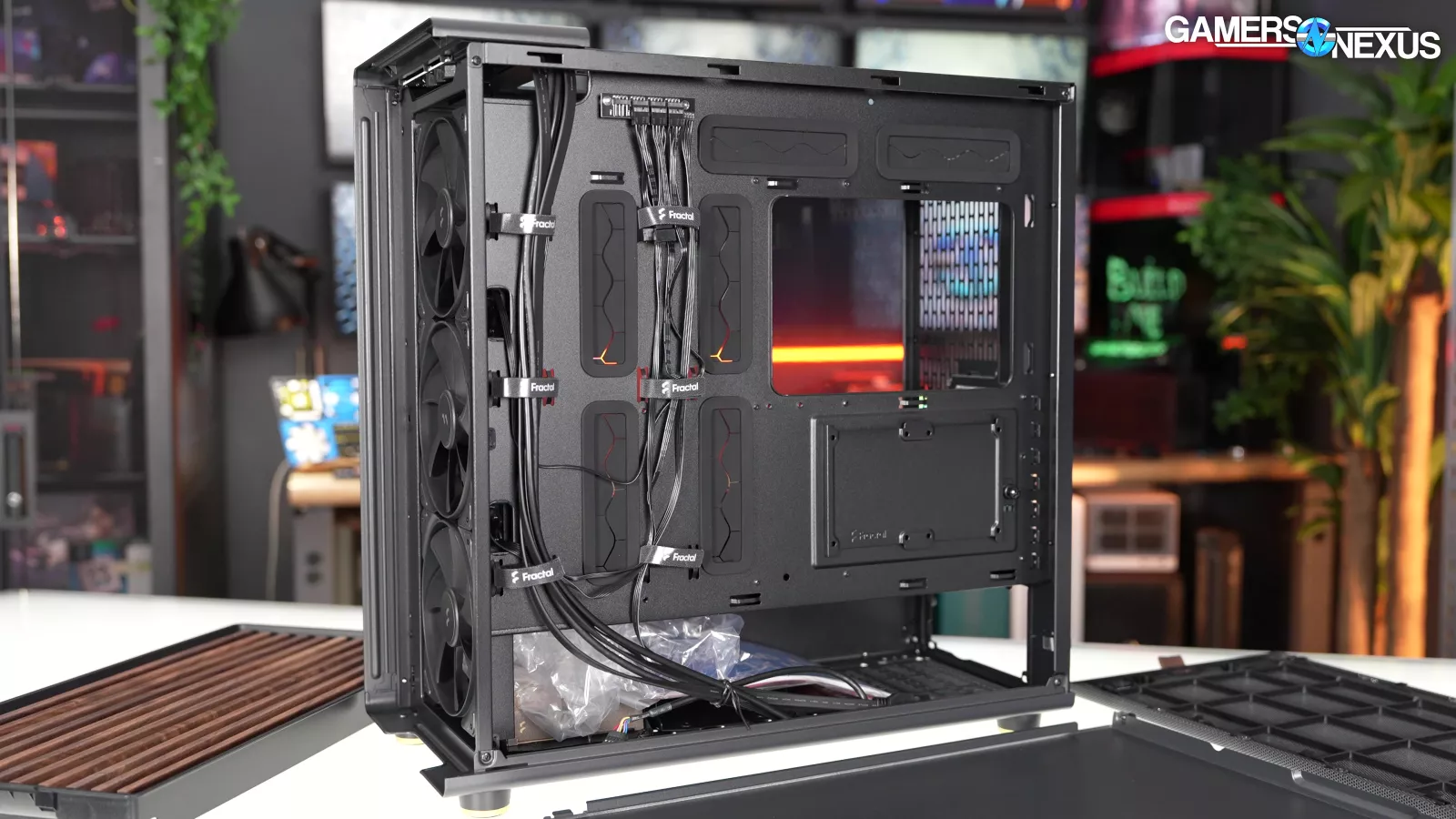
If you want to add your own, it'd be preferable to use four-pin PWM fans so that everything can remain PWM controlled.
Fractal has a good track record for taking E-ATX support seriously and in a way that’s less likely to trigger another E-ATX rant from us. The North XL continues that trend with standoffs and cable cutouts to fit full 12"x13" SSI-EEB boards. In order to support the additional standoffs, the motherboard tray is entirely flat rather than having a cable channel at the front.
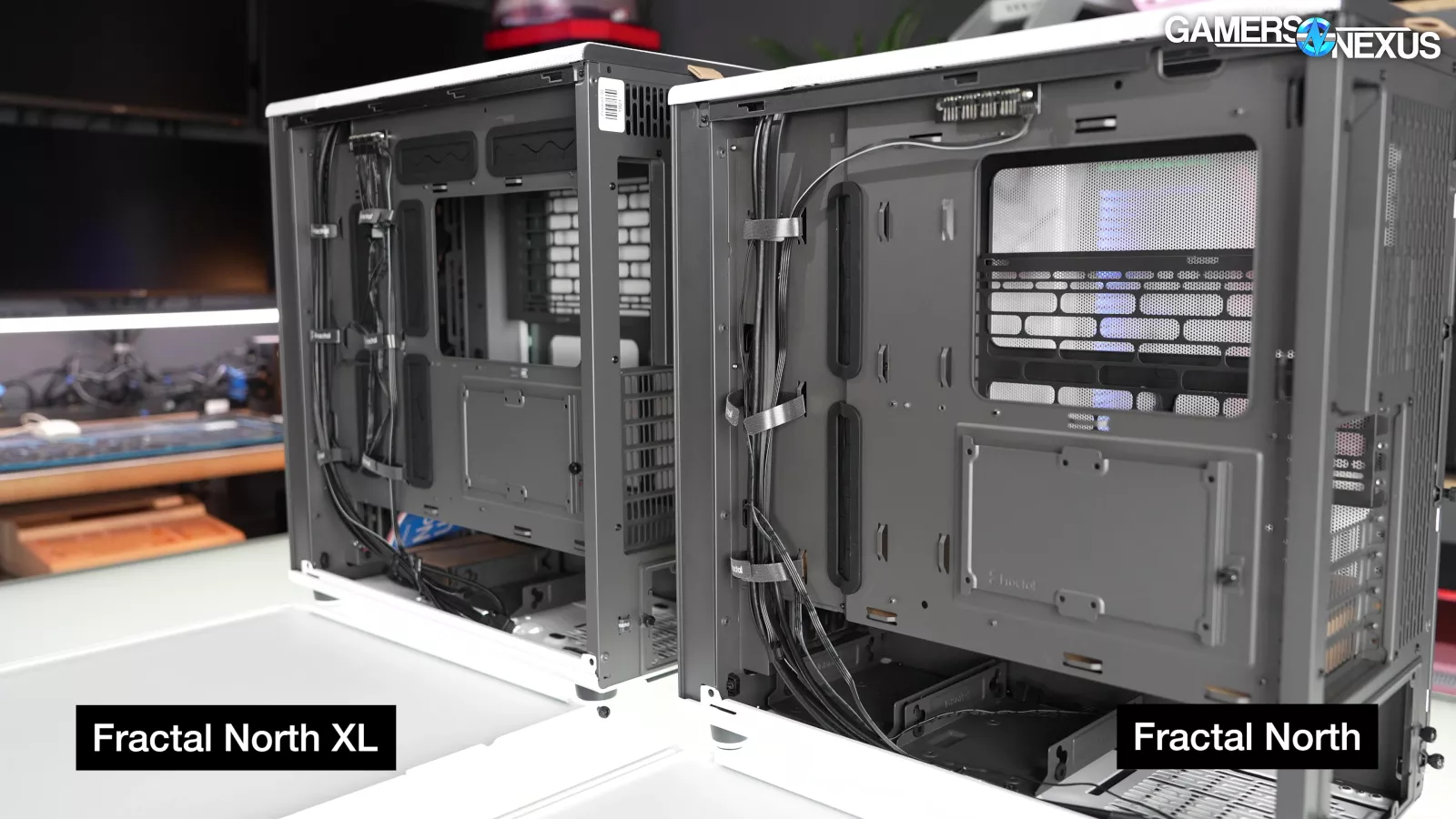
As a result, the maximum cable clearance is very slightly smaller than the original North's (29mm versus 30mm by the spec sheet), but the XL maintains that clearance across the entire motherboard tray.
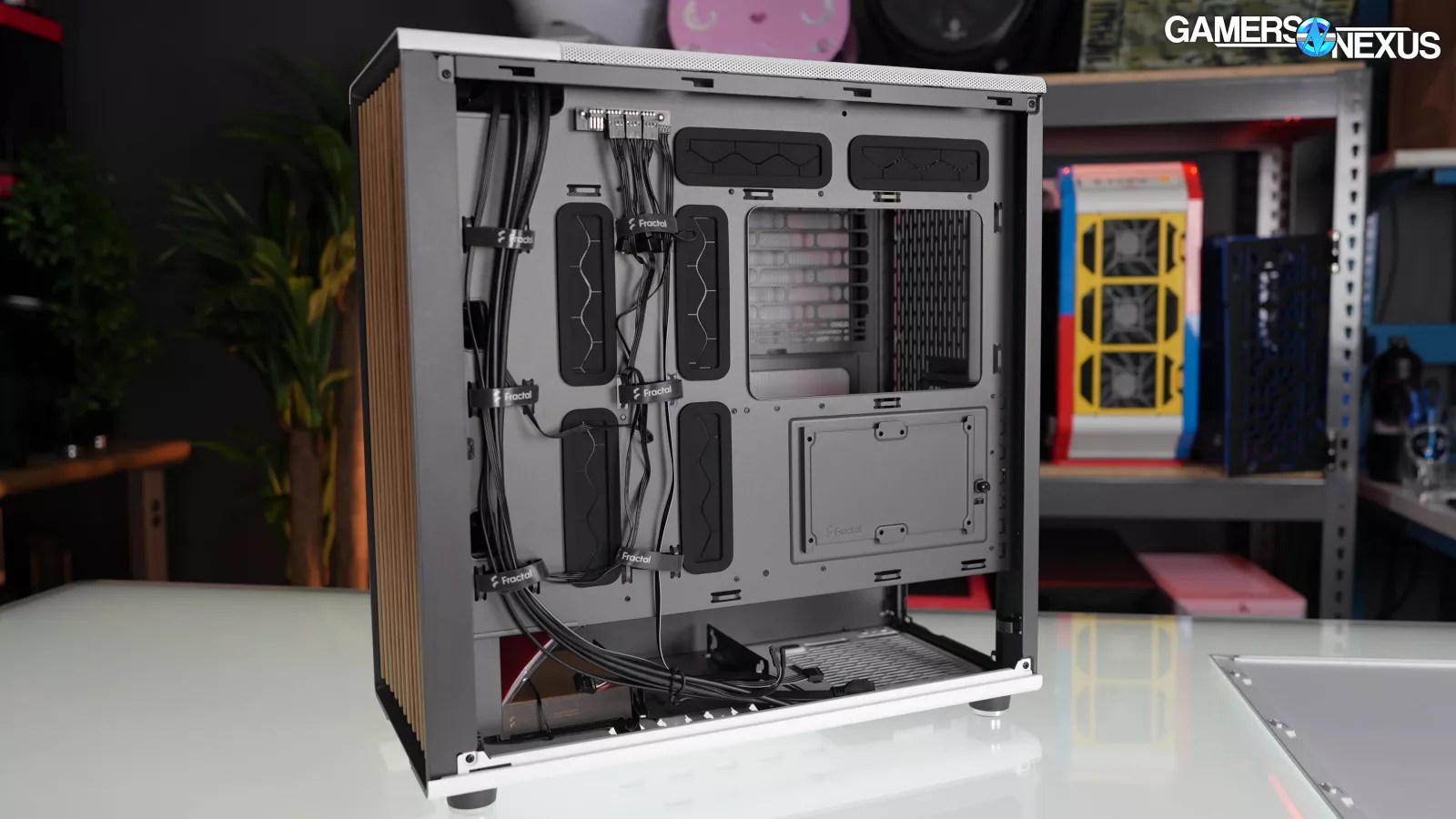
3cm is acceptable, not amazing, but fortunately, we exist in at least 3 dimensions -- and that’s not counting the 4th dimension that Bitfenix banishes its airflow to. The total volume available is much greater than in the original.
There are six velcro ties included that follow the most logical cable management paths, as well as a seventh on the rear of the case to tidy-up peripheral cables. We'd borrow that tie to manage the CPU power cables instead.
We only ran into minor fit-and-finish issues during our build: the slot for inserting the PSU into the rear of the case has extremely tight tolerances that may require some extra force. Also, the top panels on our review samples (especially the tempered glass variant) don't snap into place as tightly as the original's, which is a problem since the top panel can't be screwed down. The panel can slip around easily when you try to pick it up.
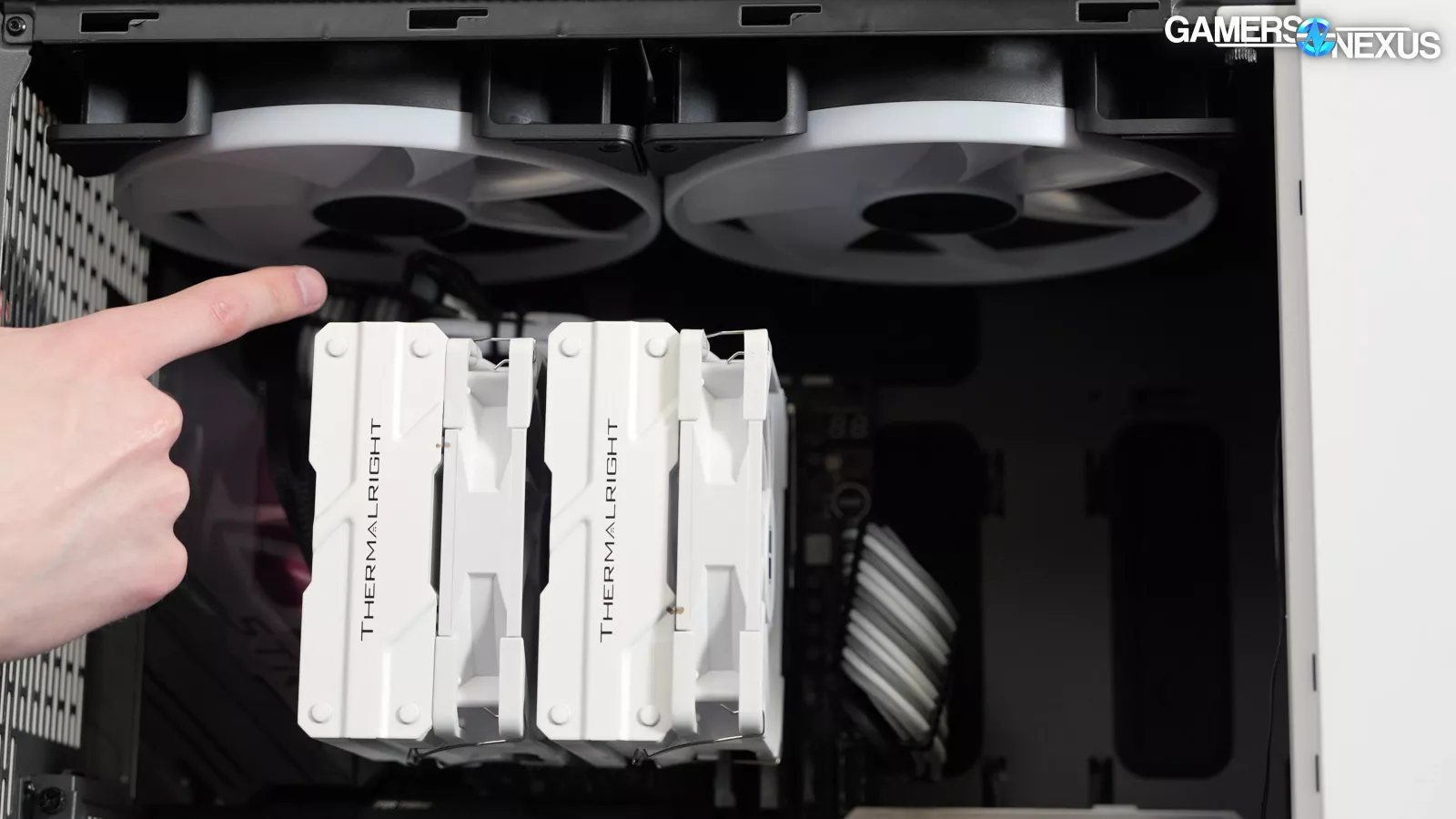
To recap the areas we think Fractal did the best, there's more room for everything. The extra clearance at the top of the case makes it more accessible during the build process, and it opens up more cooling options like 180mm fans or radiators that won't get in the way.
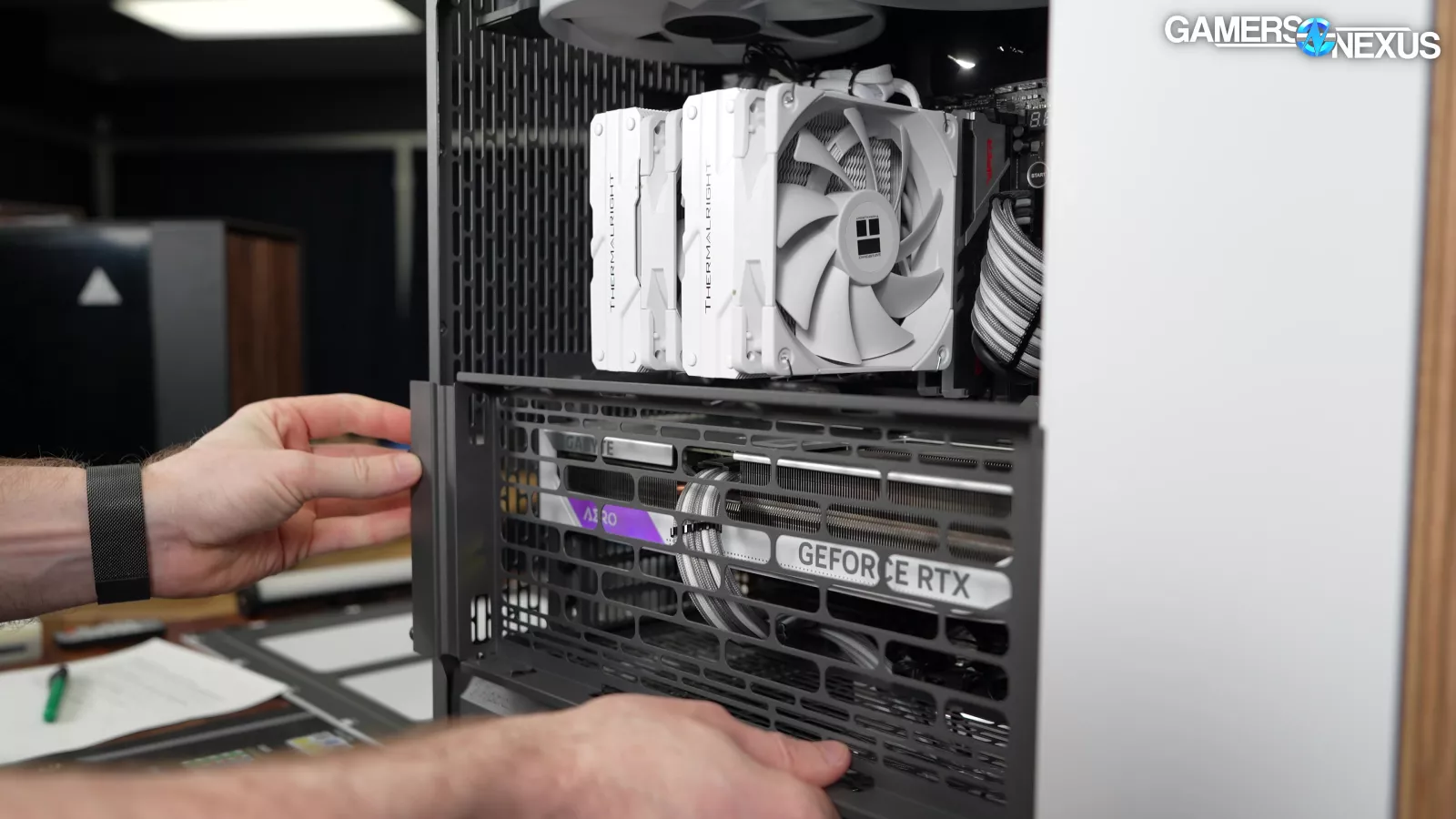
Also, the side fan bracket that comes with the North XL Mesh is more usable, since it's much more likely to clear any given GPU or CPU cooler than it was in the original North. As for components, Fractal has done more than the bare minimum to support E-ATX boards, making this case a candidate for Threadripper workstations.
It’s been seven or eight years since we’ve completely changed the hardware here. This makes none of the data in this review comparable to prior case reviews. We’re refining our methodology to provide more accurate info and will be able to show a lot of cool behavior with new types of approaches to cooling.
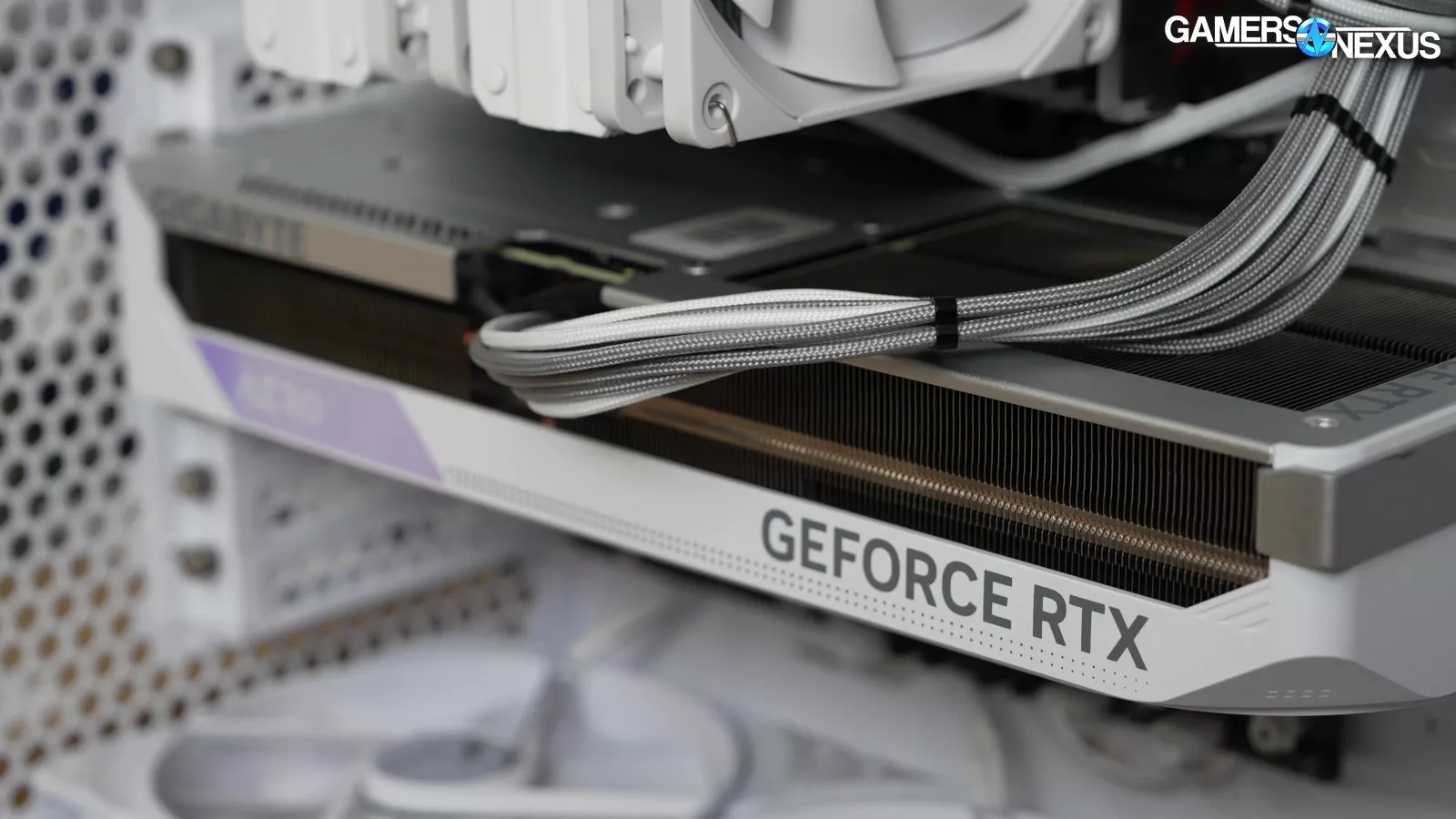
For our graphics card, we’re using a Gigabyte AERO GPU, which has a flow-through cooler that has an impact on CPU thermals. This made it the main reason we switched hardware since that has clearly become the approach to video card design these days, which we want to represent in our testing.
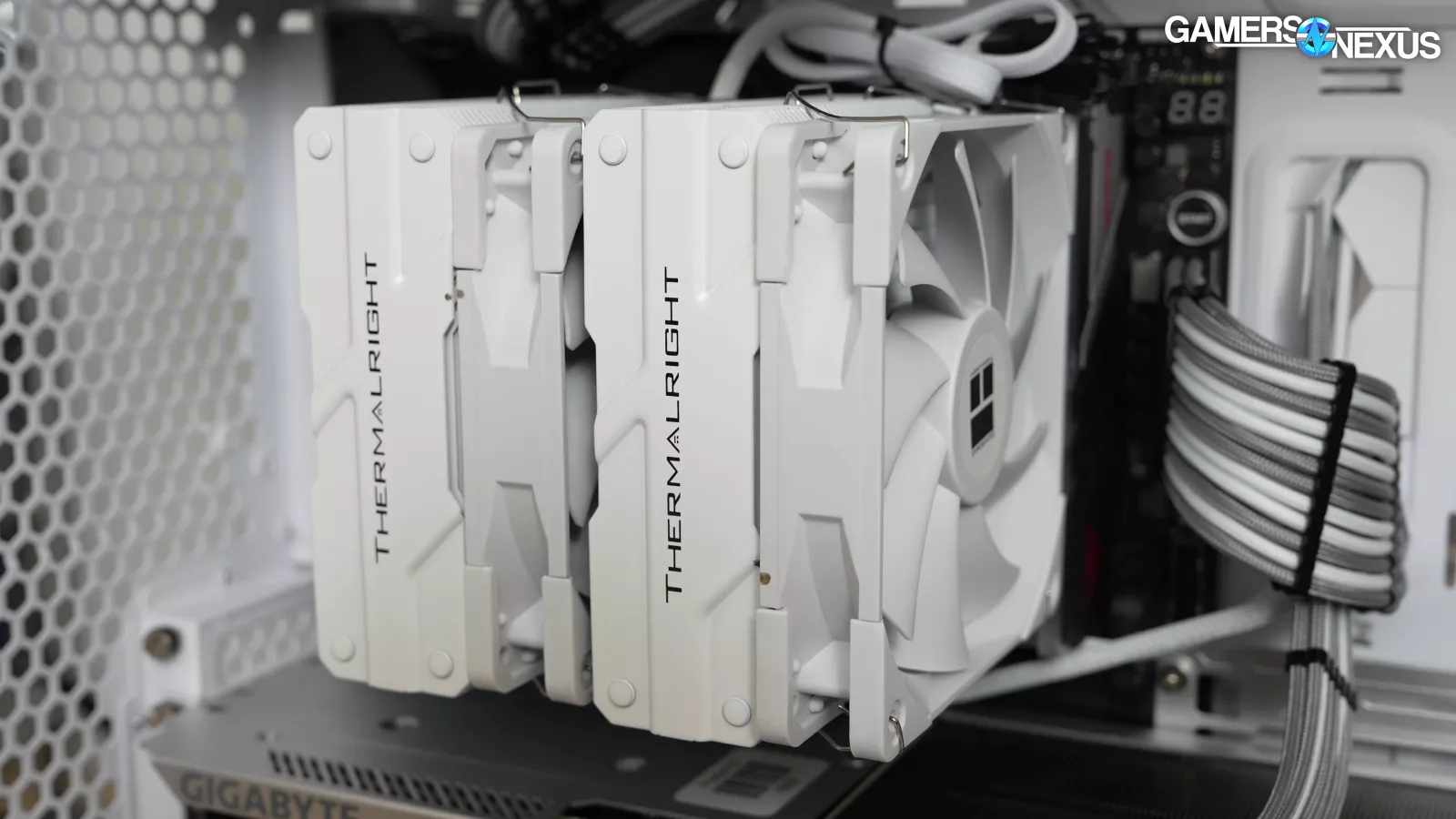
For our CPU cooler, we’re still using an air cooler in the Thermalright Peerless Assassin, which we chose because it holds pressure really well.
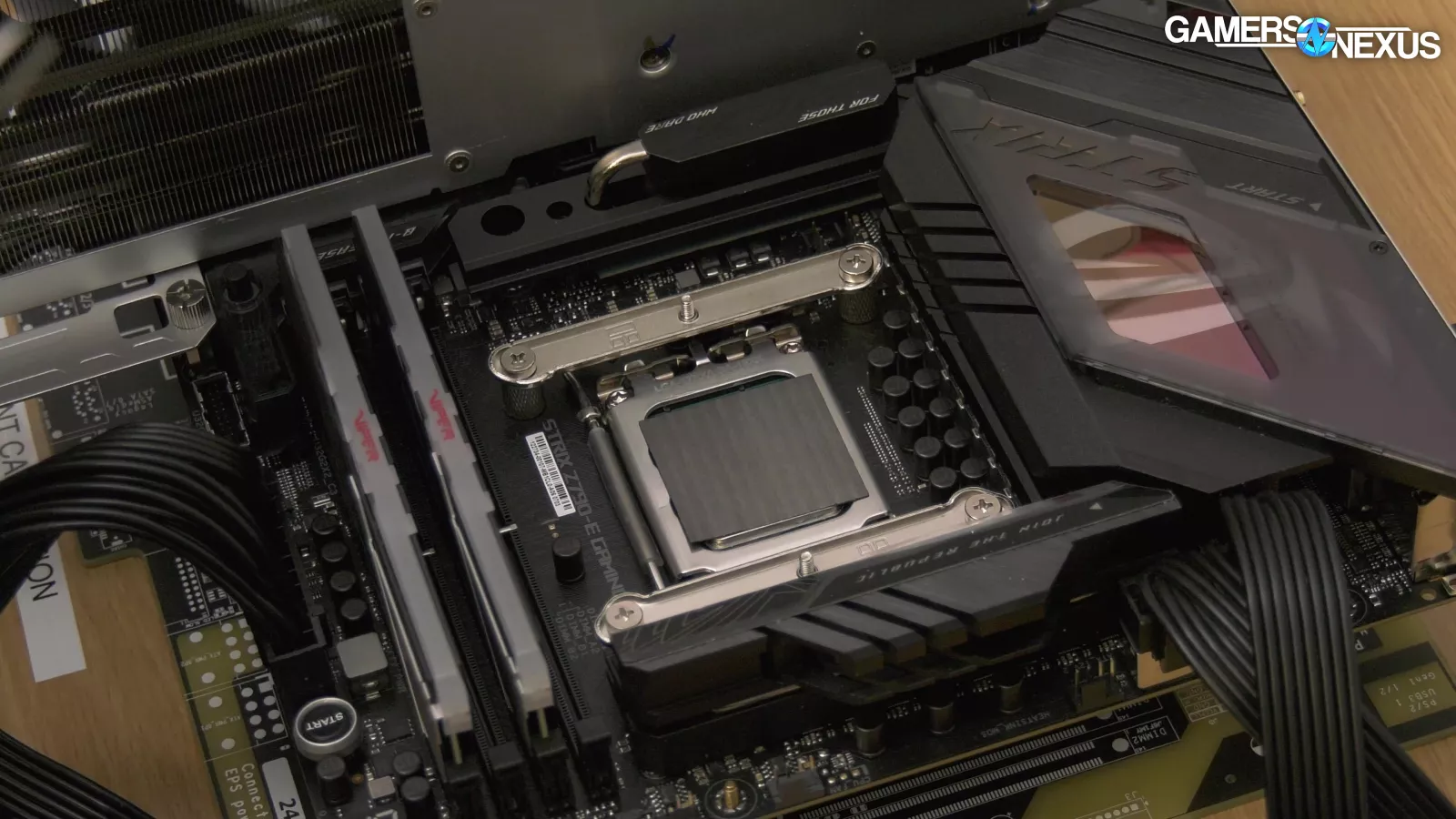
We’re also using a KryoSheet rather than paste, which helps with data consistency.
We’ll share more about our methodology in a subsequent piece.

Fractal Design North XL Thermals
CPU Full Load Thermals - Noise-Normalized
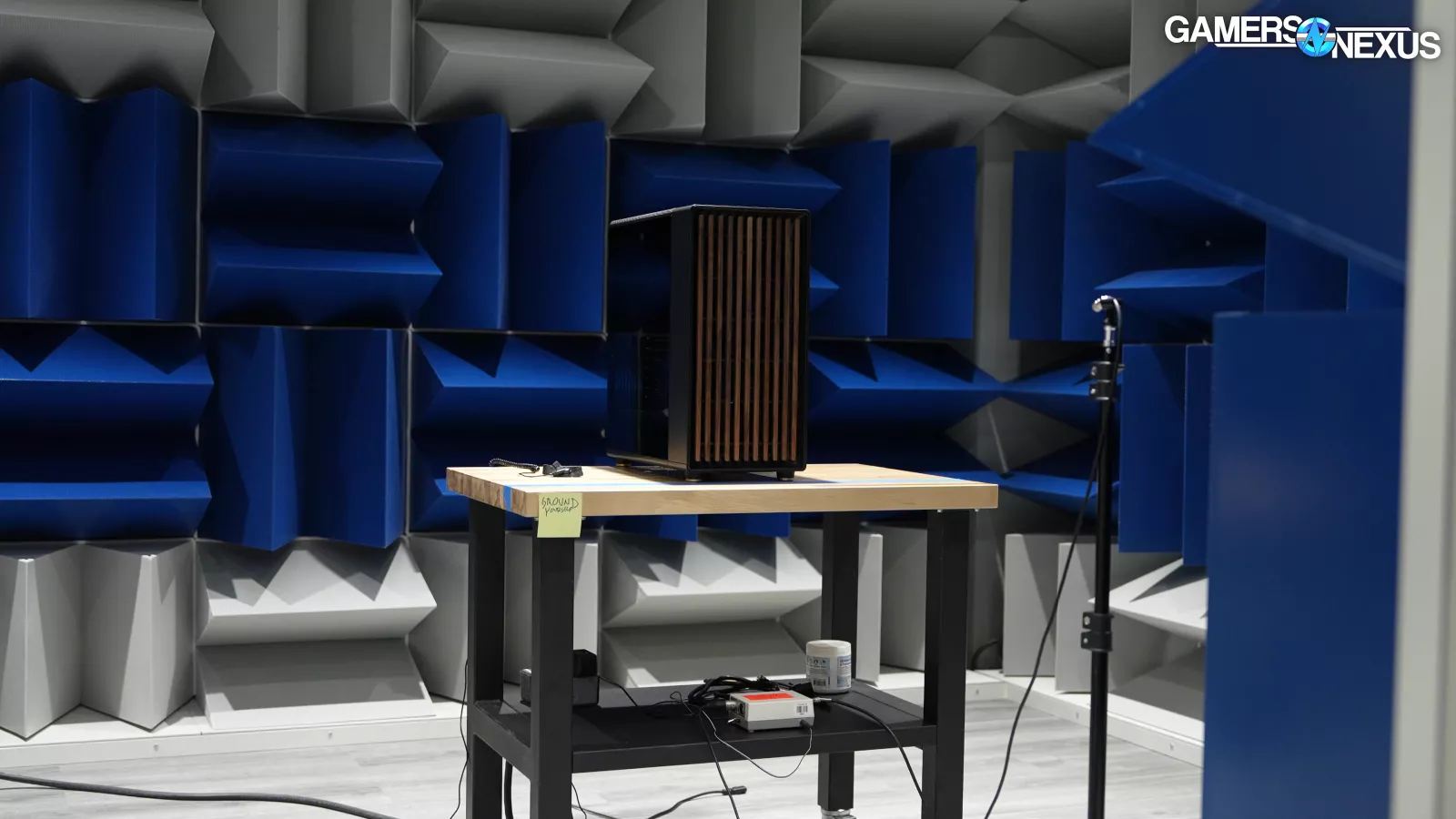
The first set of thermal data is for noise-normalized testing at a chosen 31dBA threshold in our hemi-anechoic chamber, tested at 1-meter distance and with a noise floor of about 13.6dBA. Noise normalizing in the chamber means that all cases are set to the same noise level, so they are unable to leverage extremely loud, super high RPM solutions to beat their way to the top of the chart. This makes the playing field level and fair, so they must compete on merits of the total case and cooling design, not just brute force.
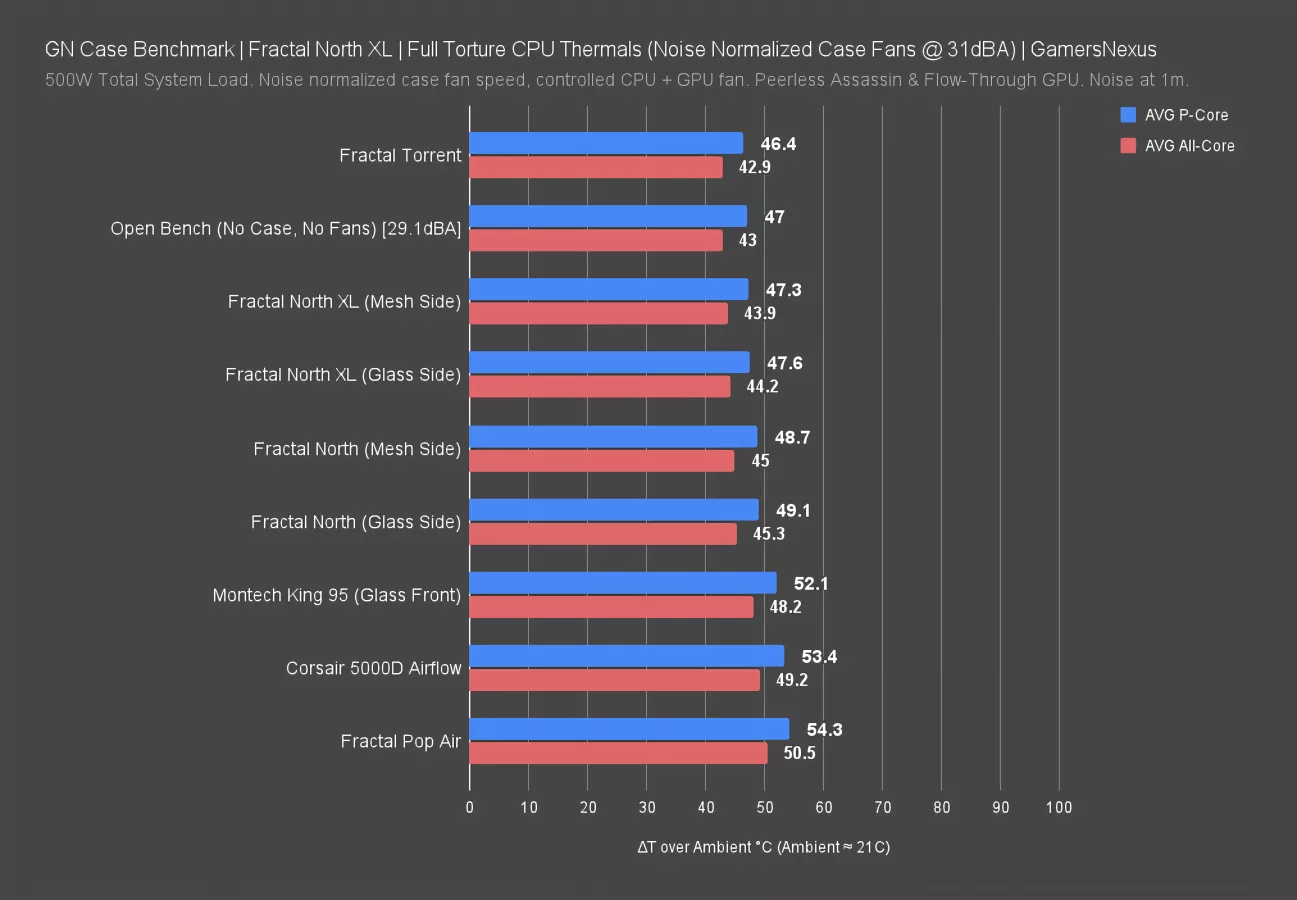
This chart shows CPU thermals first.
The Fractal Torrent remains the chart leader here, ranking just marginally better and within error of our open bench for calibration. The Torrent is able to force air directly toward the CPU cooler, which has the bonus impacts of (1) clearing hot air from the GPU away from the CPU sometimes before it hits the tower, and (2) cooling the neighboring VRM components so that they don’t slowly heat soak the area around the CPU. Ultimately, these are basically within error. We put the Torrent on here because it remains a case we consider the GOAT (watch our review), at least for its generation, and it proves that, even with an entirely different approach to testing and list of parts, it remains king of cooling.
The case setting the floor is the Pop Air, down at 54 degrees Celsius over ambient. That’s still good in an objective sense, but gives us an 8-degree range to work with for differences so far -- and this isn’t even our final form. That comes when we re-test the Bitfenix Enso or the MSI Sekira. We actually had to bake extra thermal headroom into our results to accommodate hotboxes, otherwise our parts would throttle too soon to see a difference. This is a great start for showing range but leaving room for worse parts.
Against competition: The North XL Mesh is close enough to the Torrent to be considered about the same with this test platform. Switching to glass did nothing for thermals, leaving them functionally equal.
Downsizing to the original Fractal North Mesh increased the temperature by 1.4 degrees P-core from the XL Mesh. The glass side had a similar behavior: A slight increase that’s within error.
The King 95 and 5000D still do fine in an objective sense, just like the Pop Air, but have a larger gap formed. Noise normalization is a hard test for cases that just pack fans in every corner (like the K95 Pro) because they are dropping RPM to a point where static pressure will be affected. That’s why we have multiple kinds of tests. We’ll test the mesh variant of the K95 soon. The 5000D is the closest size and style competitor and is losing: At 53 degrees for Corsair, the North XL is about 6 degrees better. That’s a huge swing, and this is at the same noise levels. Corsair’s single central front fan and rear exhaust fan just can’t keep up with the wider area flow at the front of the North XL.
GPU Full Load Thermals - Noise-Normalized
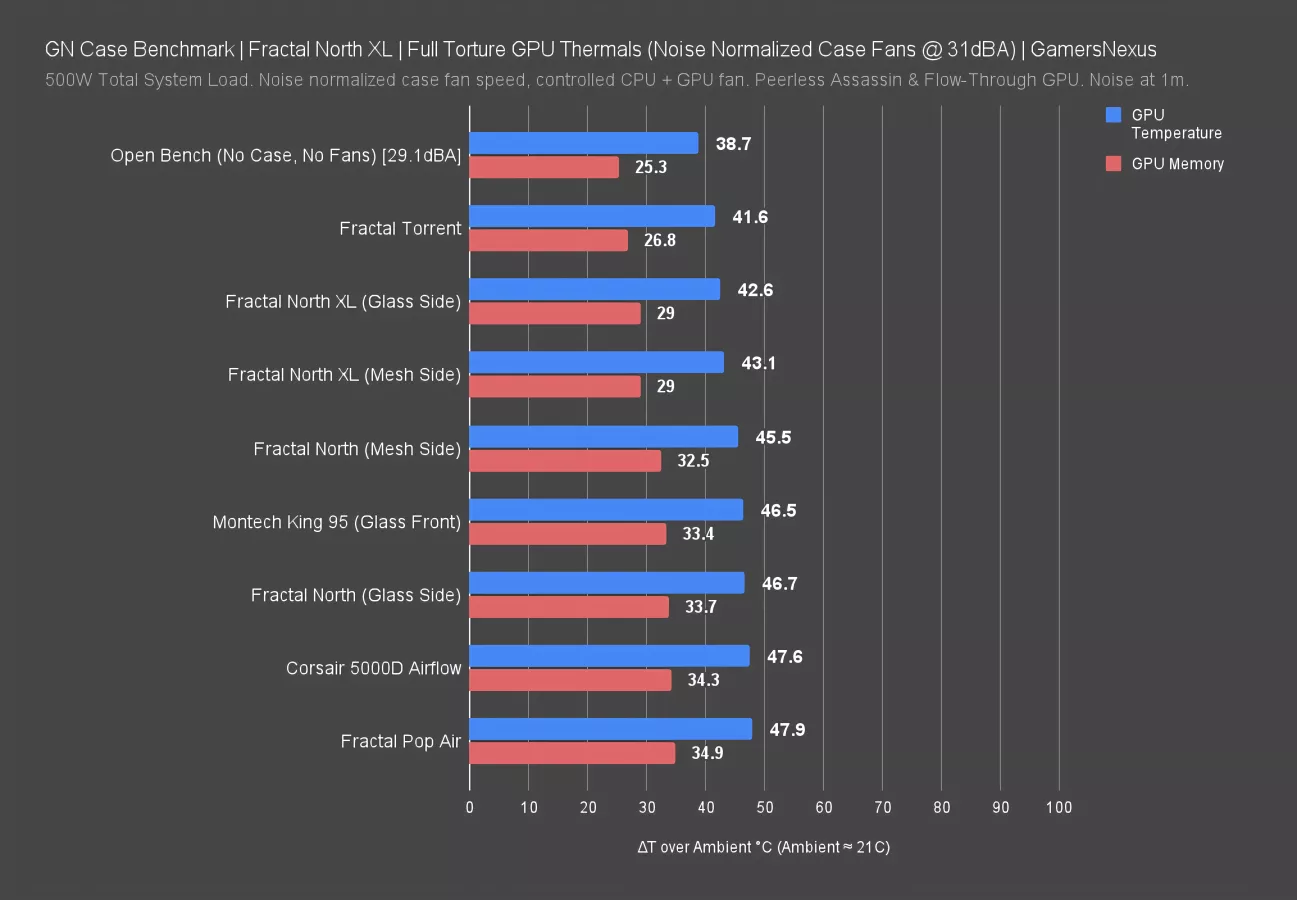
Now for the GPU temperatures from the same test.
In this one, the open air bench sets the bar -- and that’s expected. Unlike the CPU, where it can benefit from forced airflow and from eviction of heat dump from the GPU, the GPU benefits from open air when compared to these cases so far. That’s because it is normally within a few slots of a power supply shroud or a panel, both of which restrict access to air. It can’t pull from all sides and its pressure is also reduced when in a case. Open air, it can pull from any direction and exhaust it relatively unimpeded.
The Torrent leads: With a 41.6 degree GPU temperature and 27 degree memory temperature, which is one of our new metrics. It improves upon the North XL by 1 degree. The Mesh and Glass variations are within error of each other and cannot be stated as to be meaningfully different with this configuration. That would change with an alternate fan layout, such as mounted to the side panel.
The normal North is actually a couple degrees warmer than the XL, helping establish range early. That’s great from a methodological perspective. The K95 Pro is next, still doing fine but not as well. After that is the 5000D Airflow and the Pop Air, about tied with each other.
VRM & RAM Full Load Thermals - Noise-Normalized
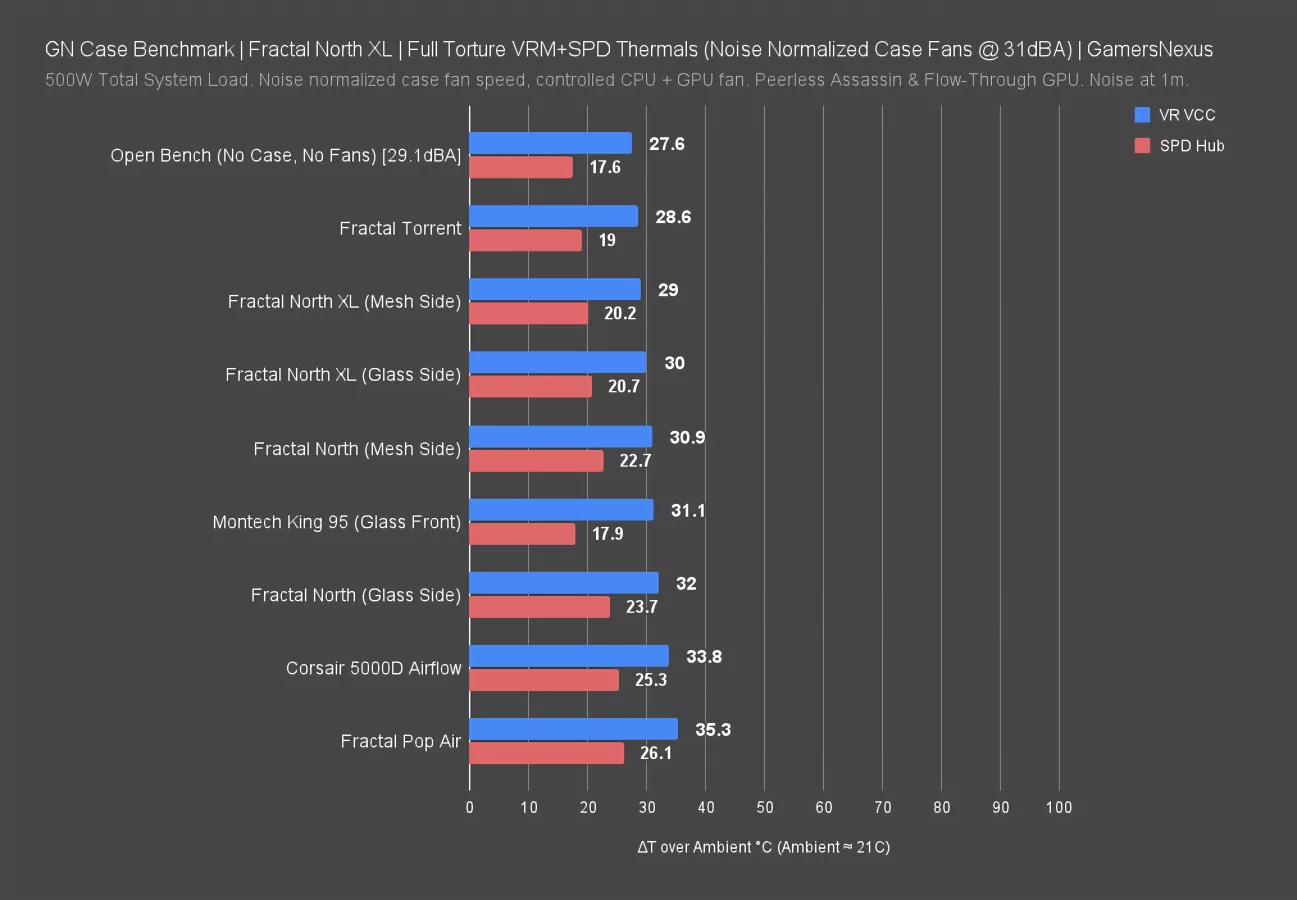
Here’s another new chart -- we weren’t producing these two data points at all in our prior reviews.
This one looks at VRM thermals of a MOSFET and the SPD Hub thermals. Serial Presence Detect Hub is a chip on DDR5 RAM.
The results have open air doing best, without enclosure to trap the heat around the machine, followed by 1 degree from the Fractal Torrent. The North XL is about tied with the Torrent when using the Mesh panel for VRM temperature, within 1-degree of the Glass variant.
The North non-XL is next, about 2 degrees warmer than the North XL. That’s a meaningful result. After that is the King 95 with the glass panel, then the glass North non-XL. Finally, the chart closes with the 5000D Airflow and Pop Air.
This data is great because it gives us a 7.7 degree range so far for the VRM numbers, which is a huge range. That establishes a big swing in thermals outside of GPU and CPU results and can start helping establish advantages we might not see in other components. Here’s one example: The K95 had better SPD Hub thermals than every other case, at 17.9 degrees, and yet its VRM thermals were overall average. That SPD Hub advantage comes from the position of its fans, which flank the memory basically on all sides. This is exciting data because we’d never have known about that particular design benefit with our old testing approach.
CPU-Only Load Thermals - Noise-Normalized (CPU)
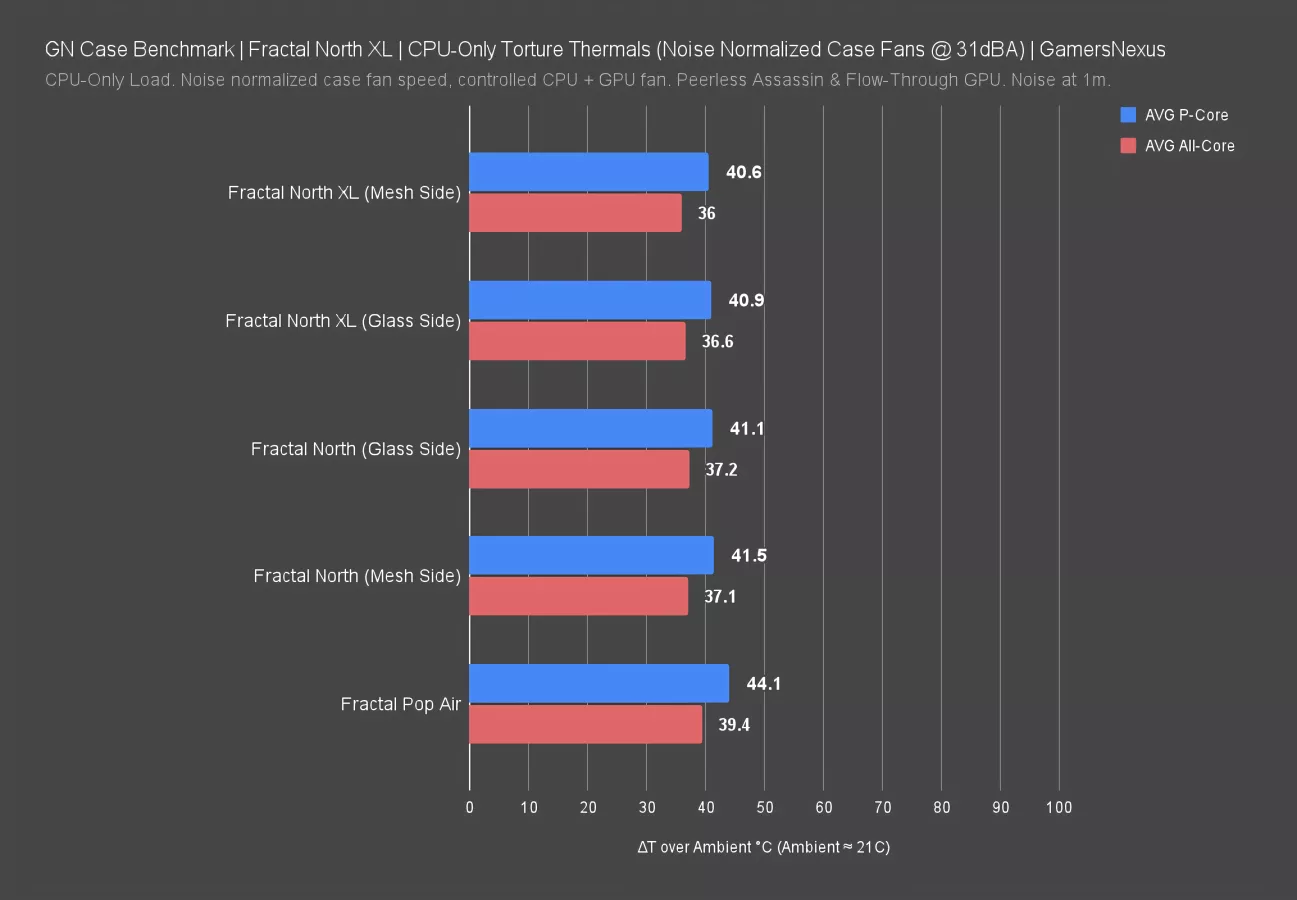
Next up, this chart shows a CPU-only workload at 100%, with no GPU load this time. This is one of the charts we’re still establishing, so it currently only features the Fractal cases. We’re adding more to it.
In this one, the North XL remains the chart leader, followed by the North XL with a glass panel -- these are the same result. The original North is next, then the Pop Air. The total range here is about 4 degrees which, considering it’s a CPU-only workload and these cases are all relatively good airflow, is a good start for range.
GPU Full Load Thermals (Full Speed)
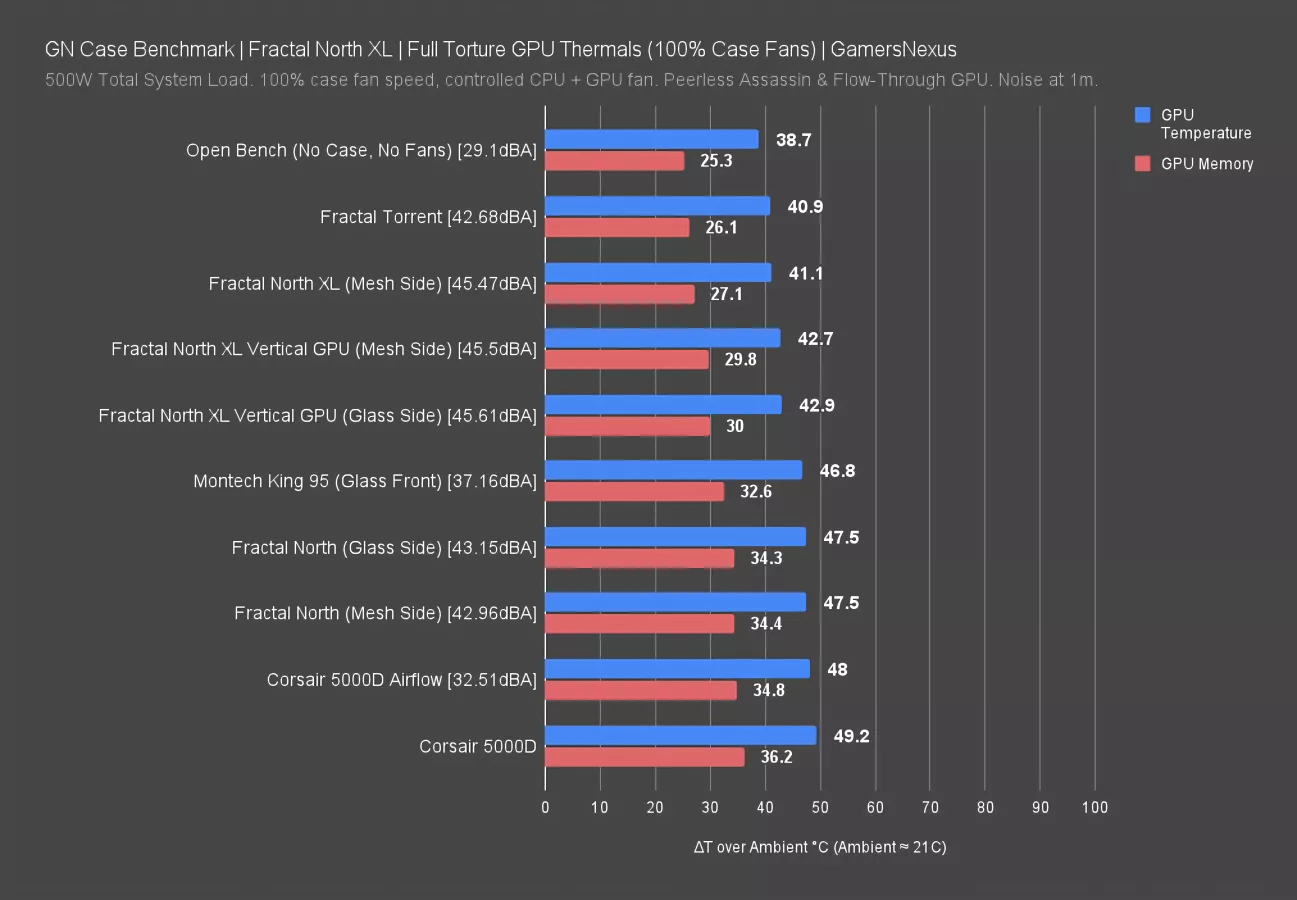
The final set of thermal data is up now, with GPU thermals at full speed for the case fans with the same controlled speeds for the CPU and GPU coolers.
The Torrent leads again here, followed by the XL. We eliminated some other tests for time in order to accommodate the vertical GPU configuration instead. In this case, we did not see a meaningful change from going vertical. That’s great. There’s enough space offset from the glass panel that it’s still breathing and it’s also able to pull from the PCIe slot ventilation. The normal North descends the chart more in this one as other cases can ramp their fans more aggressively. The K95 ends up still in the middle. There’s a relatively wide gulf between the 5000D with a solid panel (at the bottom, which we didn’t test noise for) and the Torrent, giving us a huge almost 9 degrees of range between cases that are at least partially decent. We’re worried to see how much that’ll expand with worse cases.
Fractal Design North XL Conclusion

We think the Fractal Design North XL’s key competition include the HYTE Y60, HYTE Y70, Lian Li O11 EVO XL, Lian Li O11 EVO RGB, NZXT H9 Flow, Corsair’s new 6500X, be quiet! Shadow Base 800 DX, and Fractal Design’s own Torrent.
We'd rather build in a North XL than a North. The XL is a straight upgrade: more room for components is one thing, but even just having more space to reach in and move cables around is a quality of life improvement. "XL" is a bit of a misnomer relative to the largest cases on the market, though, so you should measure out your space before you write off the North XL based on size.
At $180, Fractal isn't trying to make this case a bargain. If you're trying to stretch your money as far as possible, Montech is the company to keep an eye on, and we'll likely have more reviews of its products coming soon, like the Sky Two and more. Fractal's price is based on the features and the unique appearance of the North, which we happen to like, but it also has the performance to back it up. It’s one of the best performers on our old charts and the XL, on our new charts, is also doing well. Of the limited cases we've tested so far, only the Torrent outperforms it, even in noise-normalized testing. The XL Mesh's mesh side panel and side fan bracket didn't do much for our test system when we used them as intake fans but we still need to test them as exhaust fans to see if that makes a notable difference.
Overall, this review is kind of easy because we've already reviewed the North and liked it. The North XL is largely that except bigger.
We think the closest competition comes down to the Torrent, which offers great high airflow and function but the North XL’s aesthetics make it a worthwhile consideration.
